That's how Jackie Stewart called him.
Formula 1 had to be dangerous in his opinion, otherwise it wouldn't have been attractive.
“With driving a motor car, the danger is a very necessary ingredient. Like if you’re cooking, you need salt. You can cook without salt, but it doesn’t have the flavour. It’s the same with motor racing without danger. For me.”
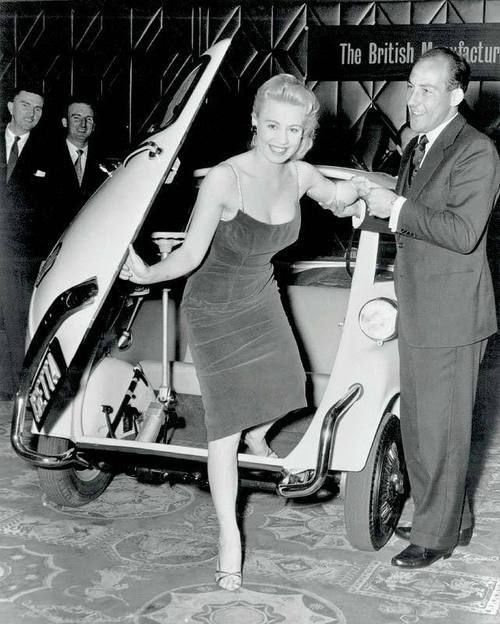
Stirling Moss was a man of his time, brave, sporty and womanizer.
Another wonderful life, happily lived on the edge and ended up as a national hero, simply doing what he always liked: racing cars.
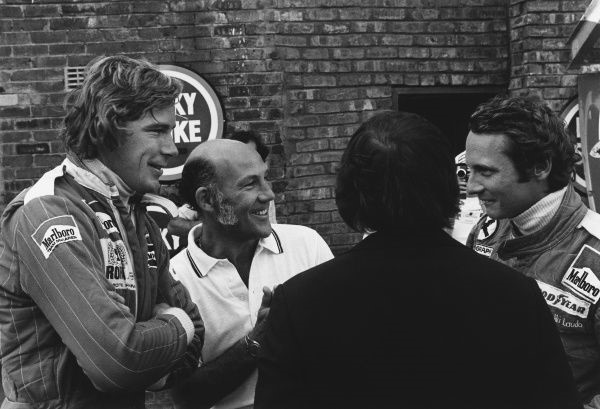
1976, South African Grand Prix. James Hunt, Stirling Moss and Niki Lauda.
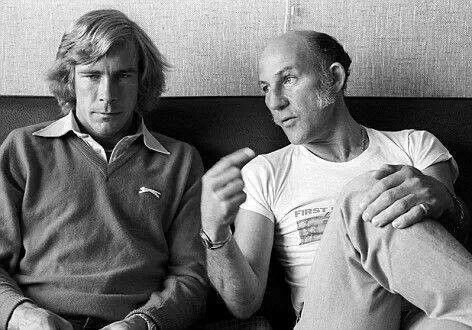
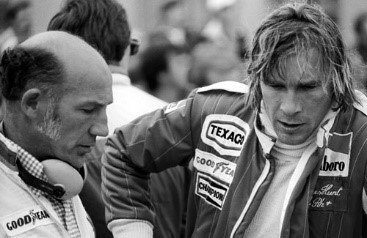
Stirling Moss and James Hunt.
And he did it in a magnetic Formula 1, frequented by those like him. Stirling died happy and who wouldn't be in his place?
Like another great, Steve McQueen, who saw life like him, at 1000 miles an hour.
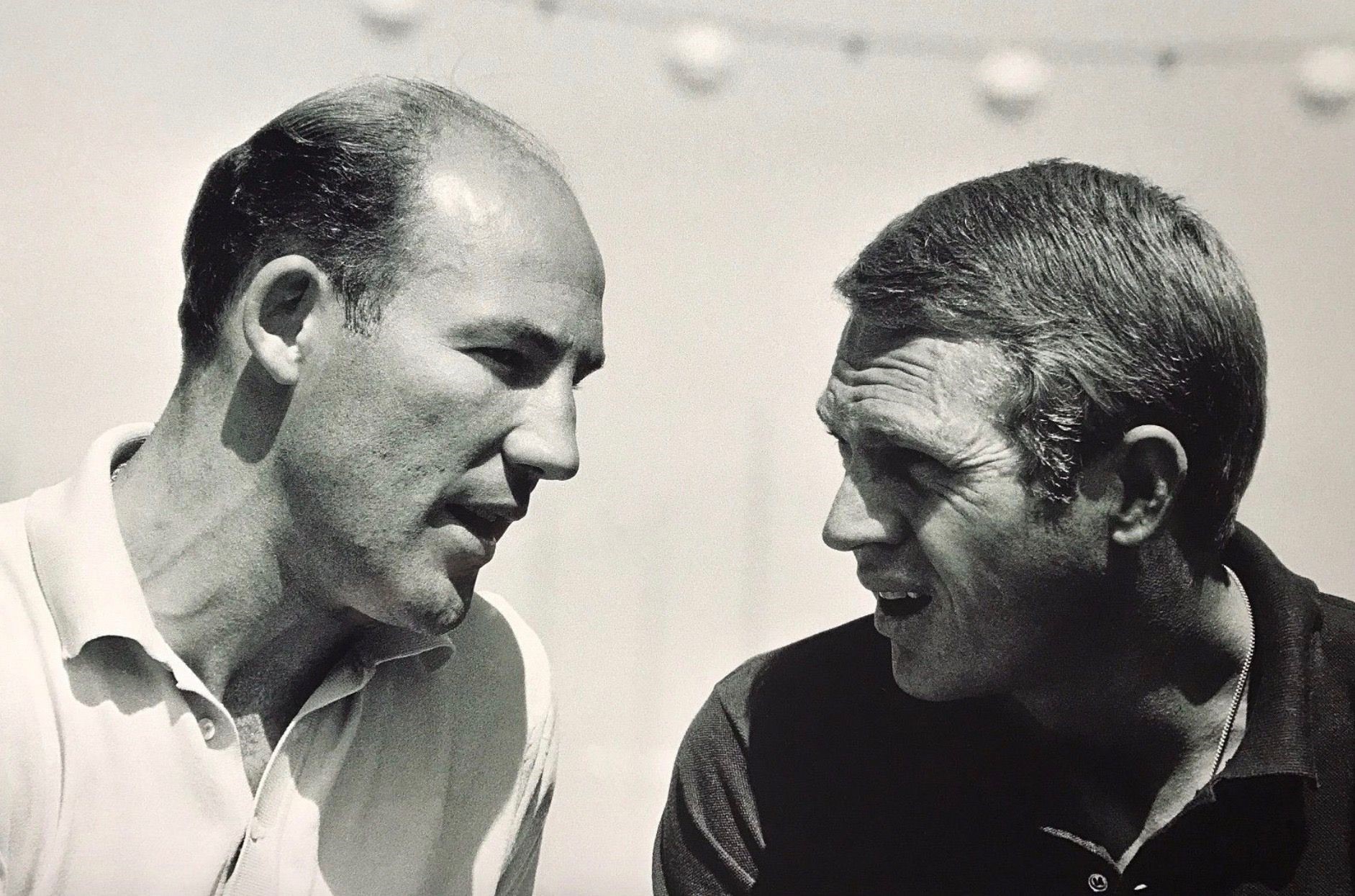
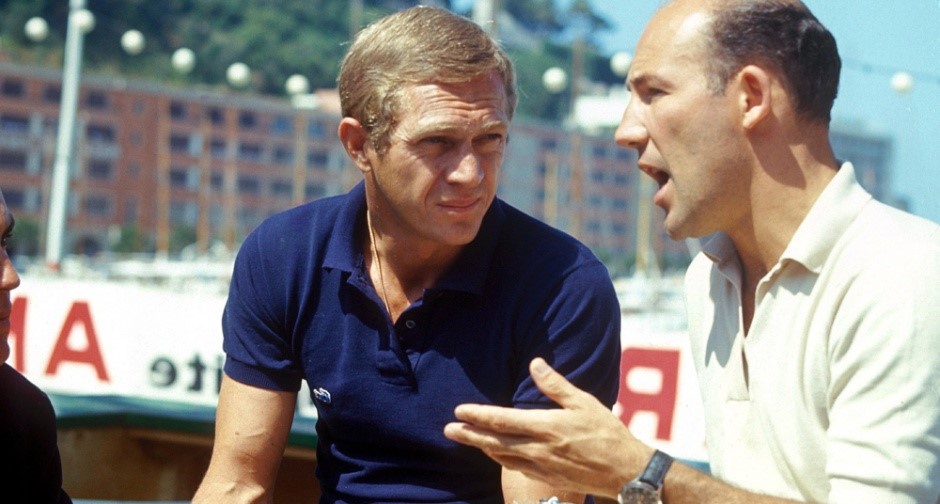
Stirling Moss and Steve McQueen.
“Racing is life. Anything before or after is just waiting.” – Steve McQueen. October 6, 2014.
Though I learned how to ride a motorcycle one summer while living in Greece, fall has always been my favorite time to ride. The humidity is gone and the air feels cooler, fresher.
But there’s something else to it. There has always been a sense of seasonal urgency to my rides – a knowledge that summer has slipped away and that fall, as well, would soon be gone.
I reveled in pushing myself and my red Triumph Bonneville faster than I did in the summer. Gorging on weekends filled with ever-decreasing daylight, I wanted to cheat winter. I wanted to wring every ounce of speed, road and orange-and-purple tinted scenery I could out of the days I had left. These adventures were the psychological wood I stacked outside my door to keep me warm through the brutal winters that often fell like a hammer in November and could linger through May.
I augmented memories on those bitterly cold winter nights by watching some of my all-time favorite films that feature motorcycles, such as The Great Escape and On Any Sunday.
While motorcycles are absolutely about freedom, they are also about style – and nothing brought the two together for me more than the star of the above-mentioned movies, the “King of Cool” – Steve McQueen.
McQueen was my gateway into motorcycles. He was the reason I had always wanted a Triumph and why I have included so many motorcycles in my novels.
There is a timelessness to the Triumph Bonneville and to Steve McQueen – just like there is a timelessness to fall rides. No matter how cold the winter gets, or how many years may pass, the memories of leaves turning colors and the road stretched out before you will never fade. In my case, I think those memories only get better with time.
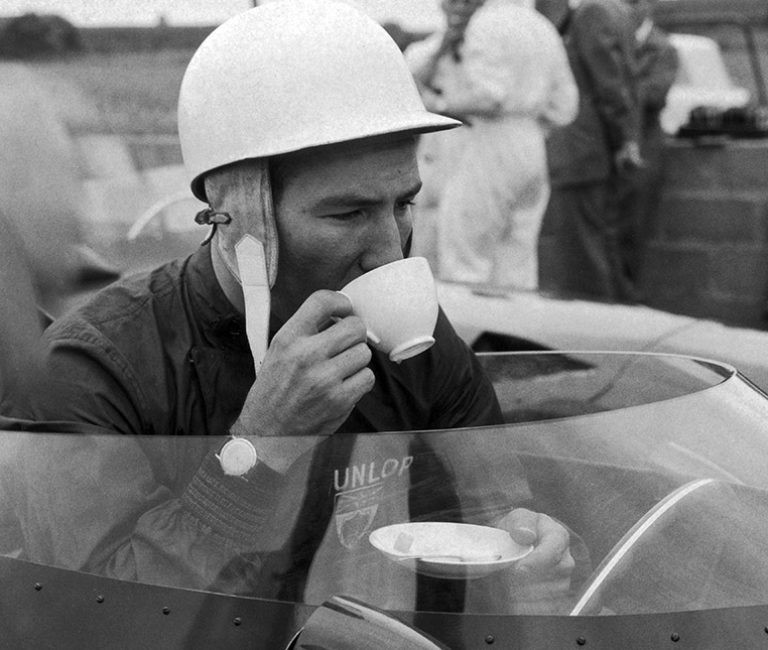
Stirling Moss picture special: from winning the Mille Miglia and the Monaco Grand Prix to living life in the fast lane off the track... we look back at some classic images of the greatest driver. By Jonathan Spencer for Mailonline. Published on 12 April 2020.
The world of sport was left mourning a true great on Sunday after the passing of British motor racing legend Sir Stirling Moss.
Moss passed away on Easter morning at the age of 90 with his wife Susie - who had nursed him through a long battle with illness - by his bedside.
Moss's death was the result of a chest infection he caught in Singapore just before Christmas 2016.
He became one of the most lionised figures in the history of British sport after earning the acclaim as the greatest all-round racer ever, while winning the hearts of everyone thanks to his incredible sportsmanship.
Off the racing circuit, he lived life to the full before settling down with his third wife Susie in 1980.
Here, Sportsmail runs you through some of the most iconic images of Moss's career, life away from the circuit and his retirement...
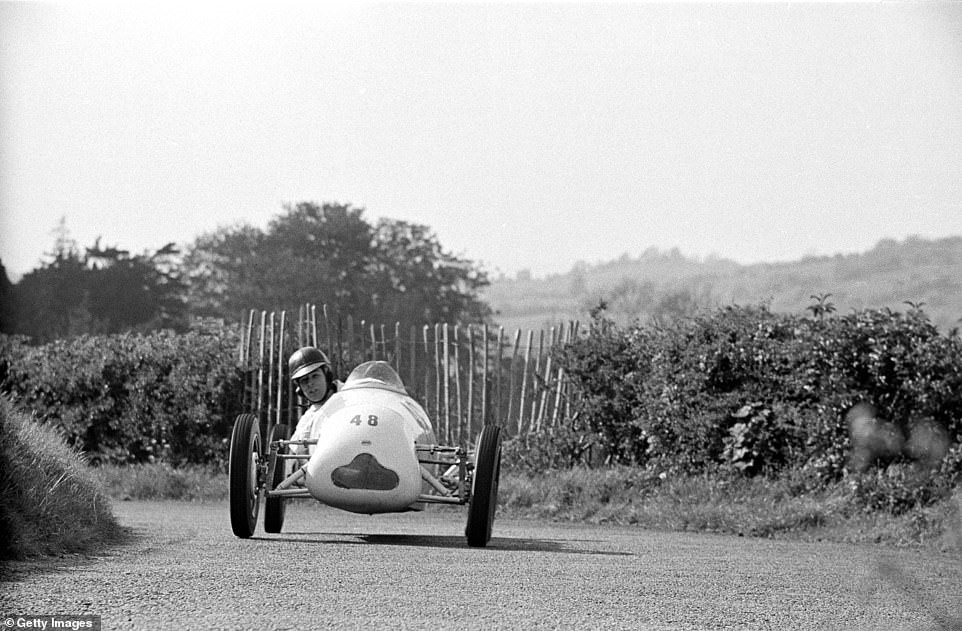
The start of a truly momentous career: the first hill-climb run for the then 18-year-old Moss on May 09, 1948.
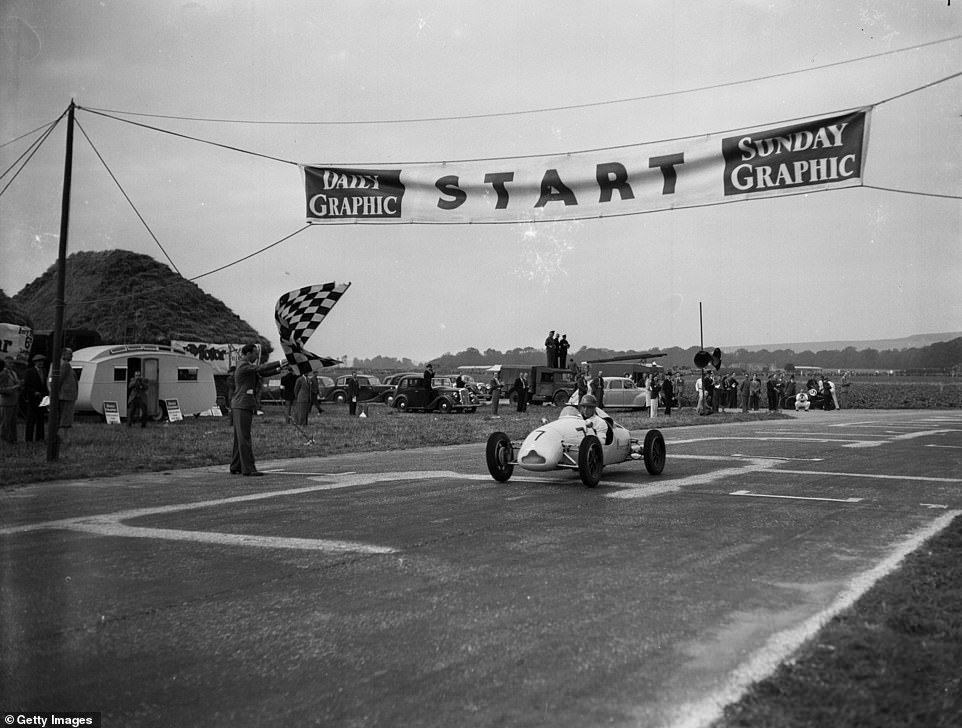
Moss claims the chequered flag in one of his first-ever races on the Goodwood Estate on September 18, 1948.
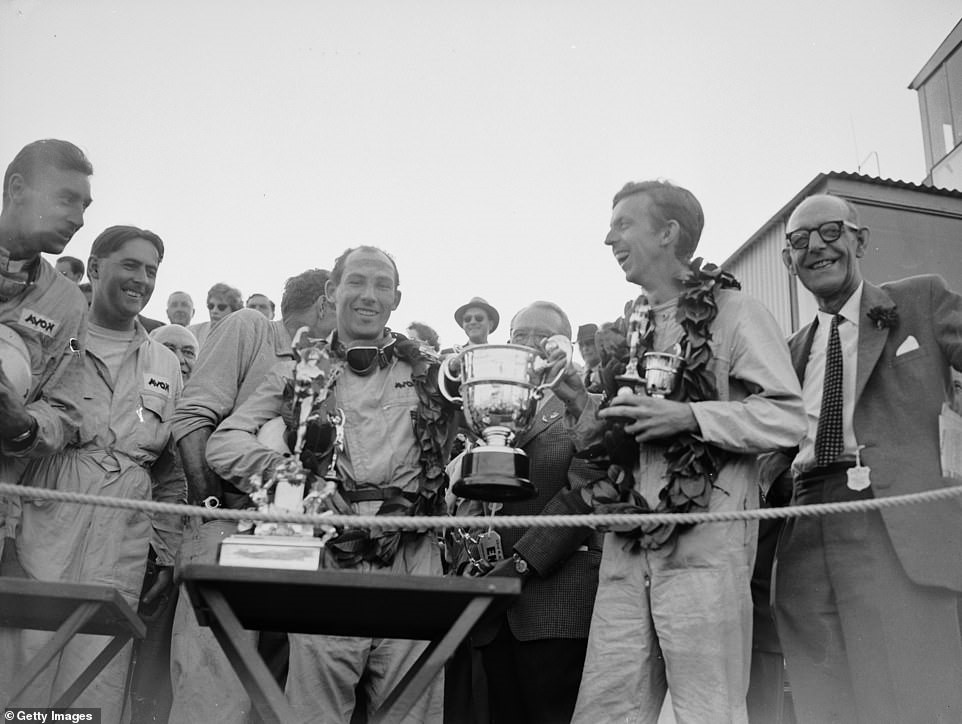
Moss (centre), celebrates with co-driver Tony Brooks (second right) after winning the 1958 Tourist Trophy Sports Car race.
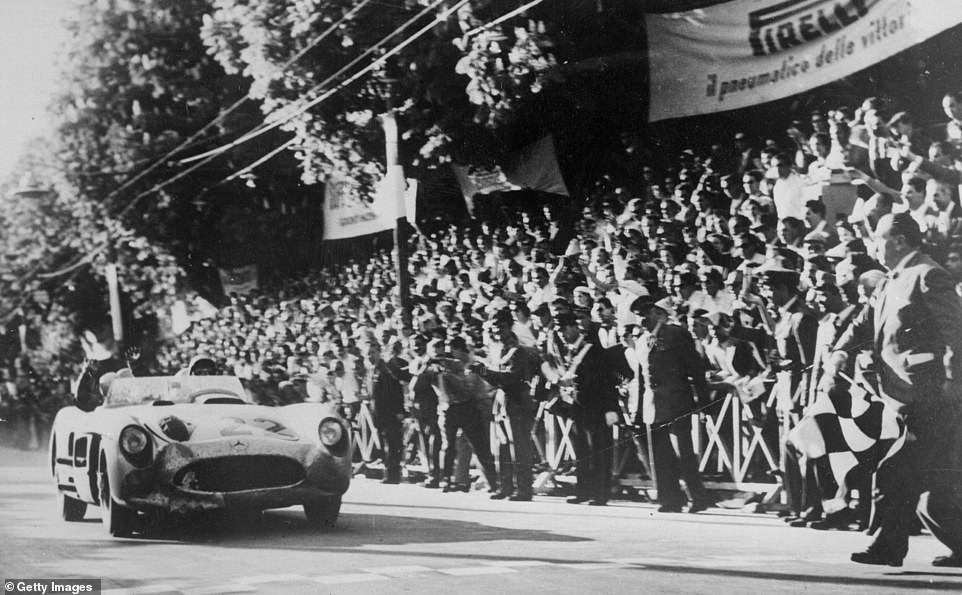
The Brit on the way to winning the Mille Miglia Race - his most famous ever drive.
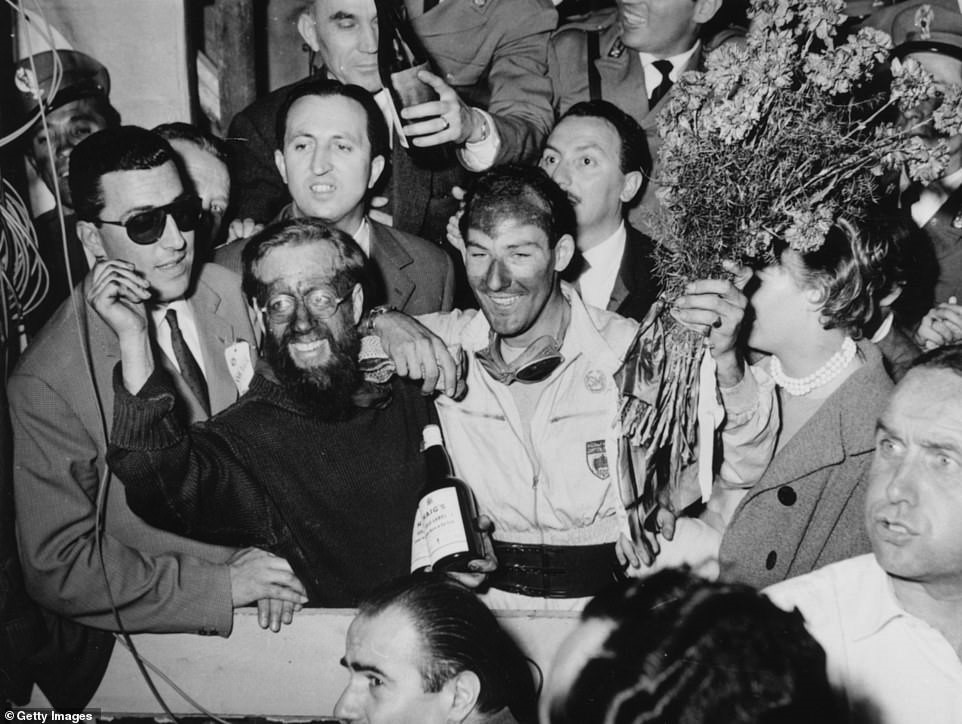
Moss enjoys his winning parade at Mille Miglia, where he set a new course record.
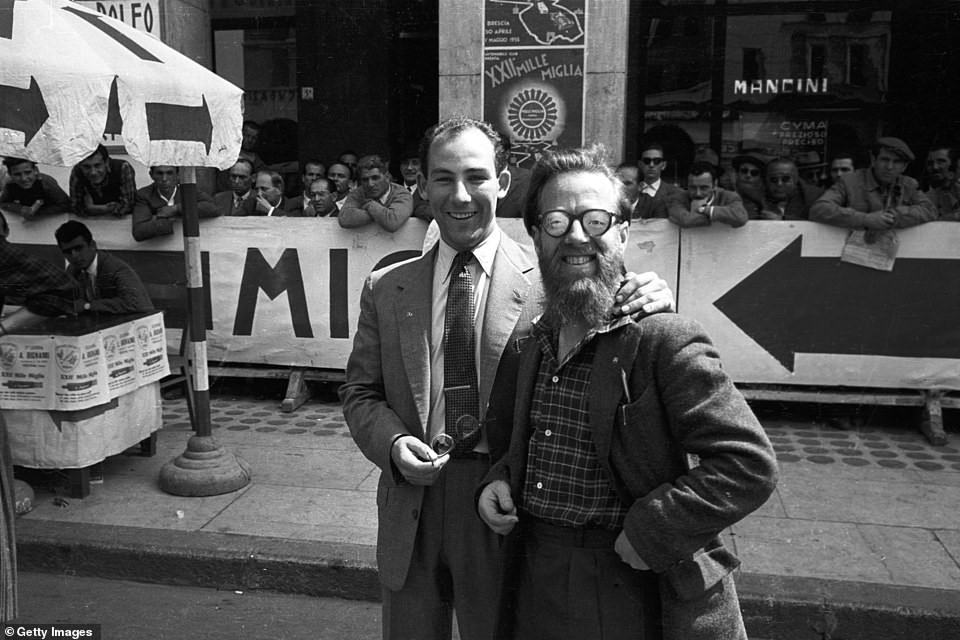
Moss earned the special acclaim of the greatest all-round racer ever thanks to his fine career down the years.
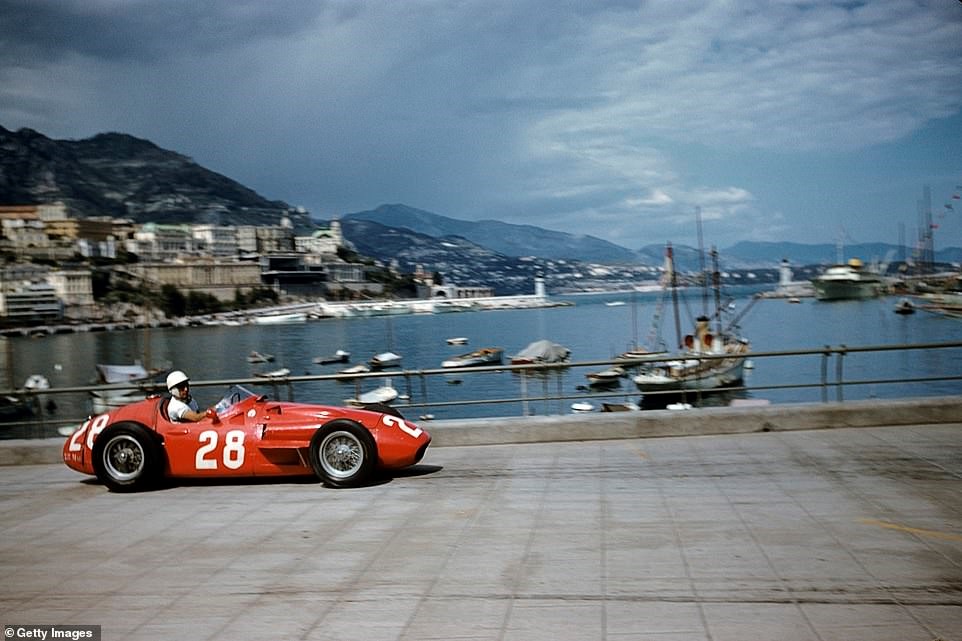
Moss races during the Monaco Grand Prix in 1956, five years before his famous triumph on the Monte Carlo circuit.
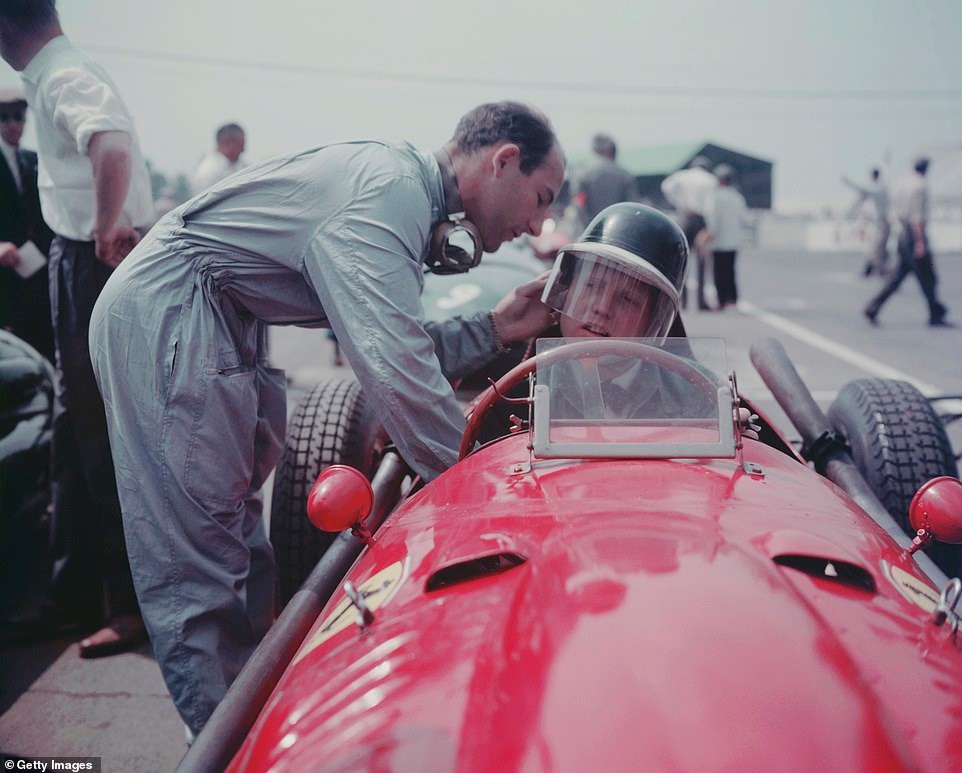
Moss adjusts the helmet of Ferrari rival Mike Hawthorn during the 1958 Formula One World Championship.
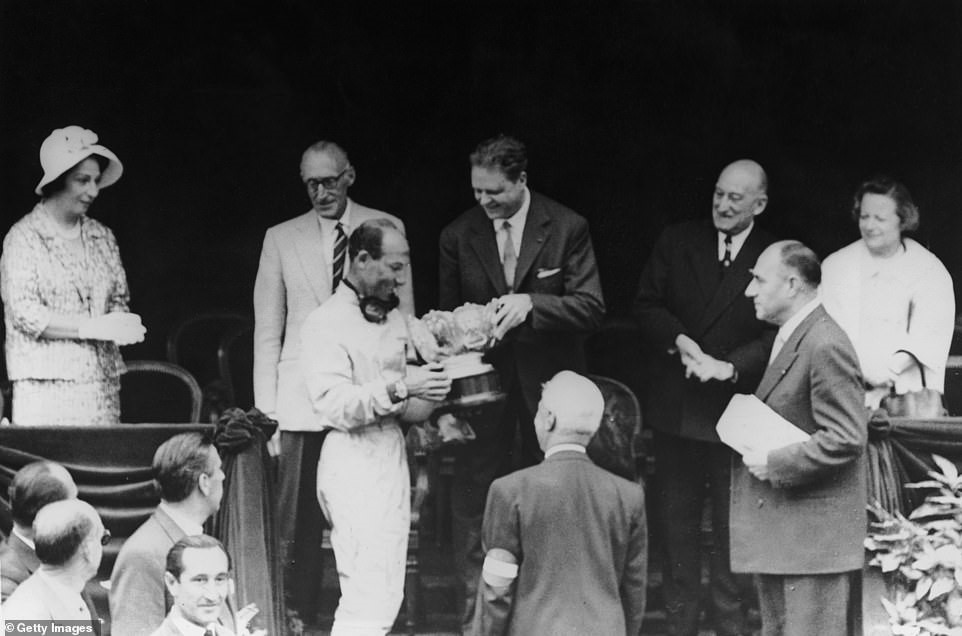
Moss receives his trophy after historically clinching the Monaco GP at Monte Carlo on May 14, 1961.
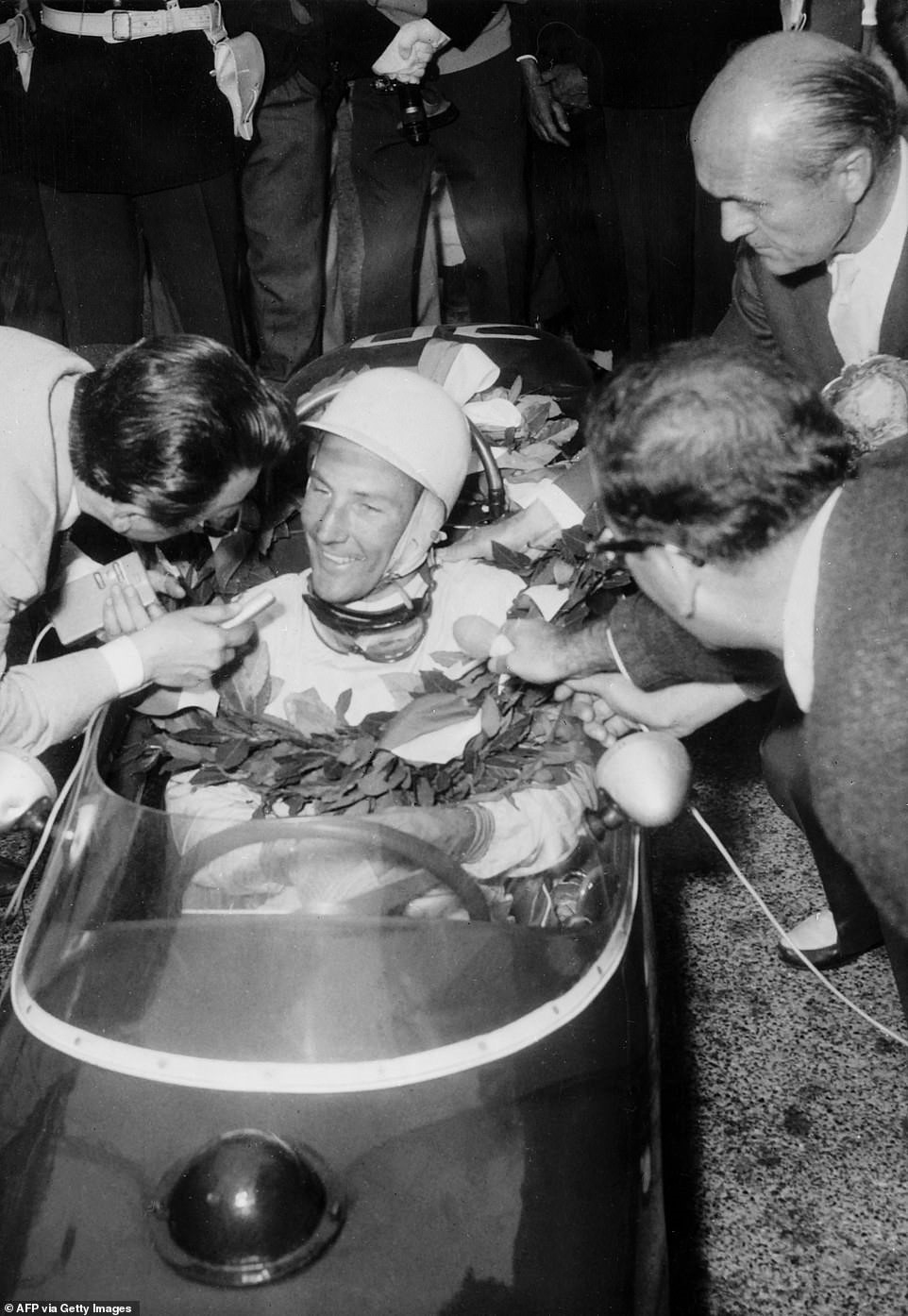
Moss is bombarded by journalists after winning the Monaco Grand Prix - triumphing in his Lotus against the faster Ferraris.
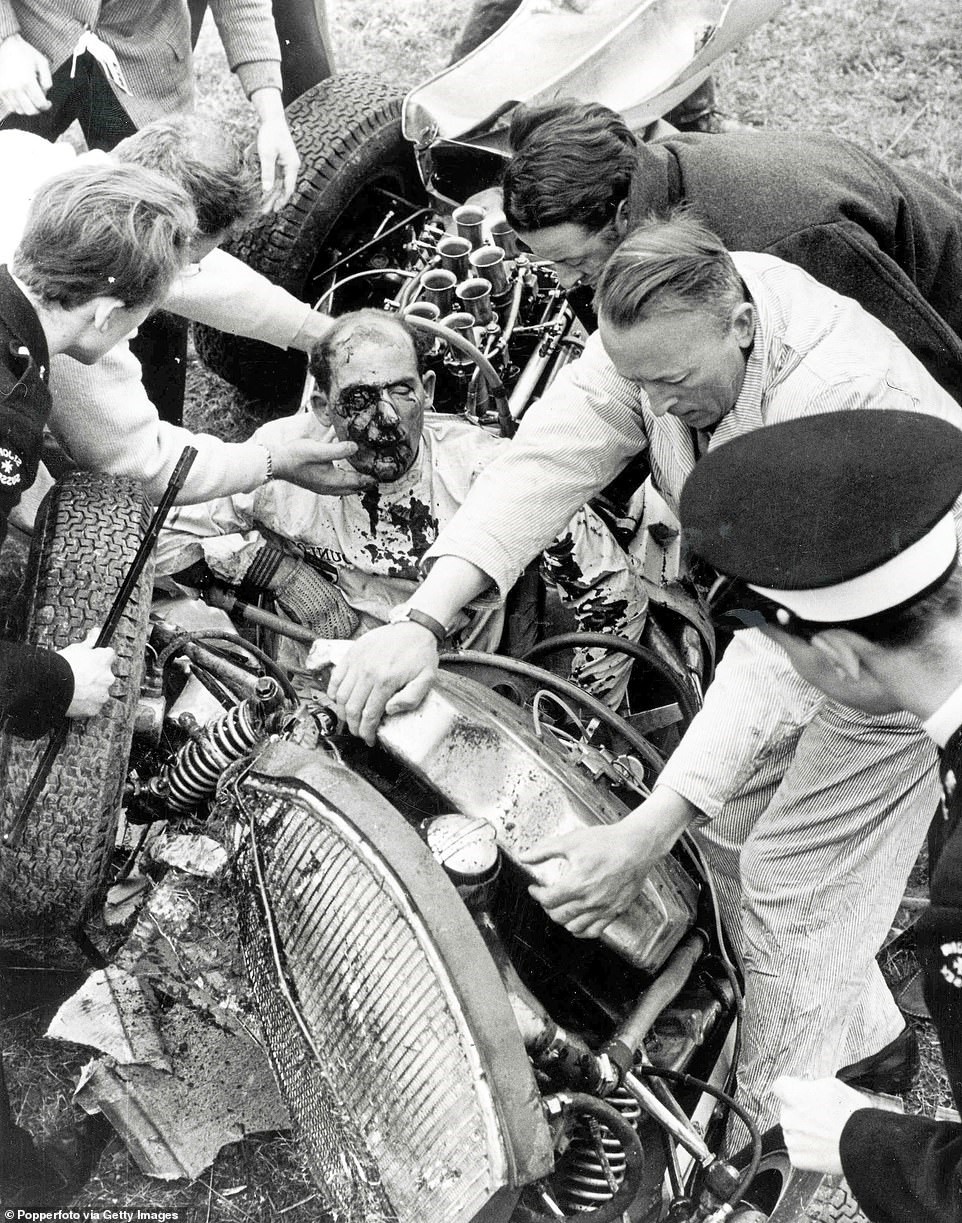
The horrific aftermath following Moss's crash at Goodwood in 1962 - which effectively ended his career within motorsport.
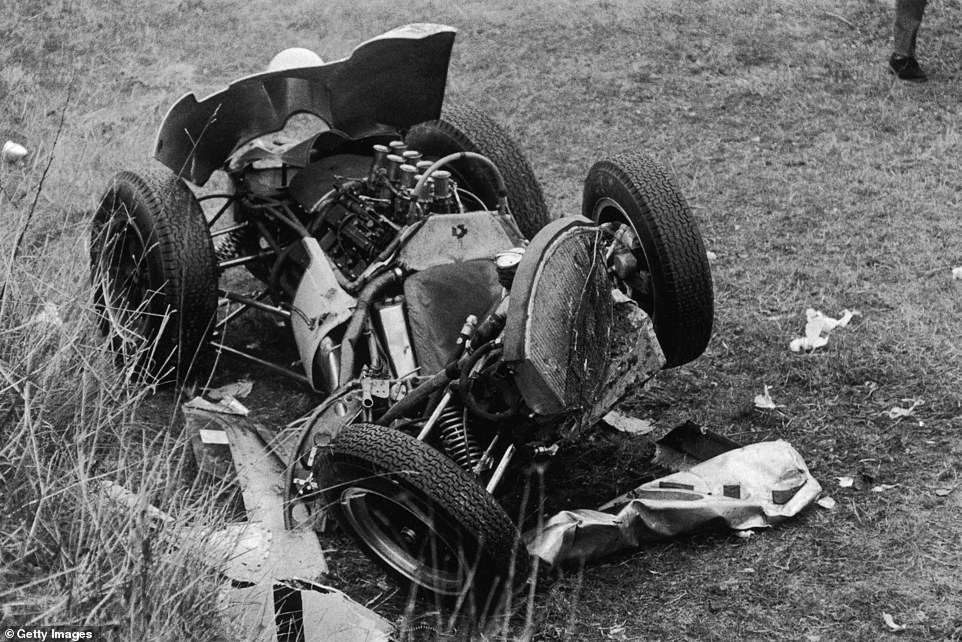
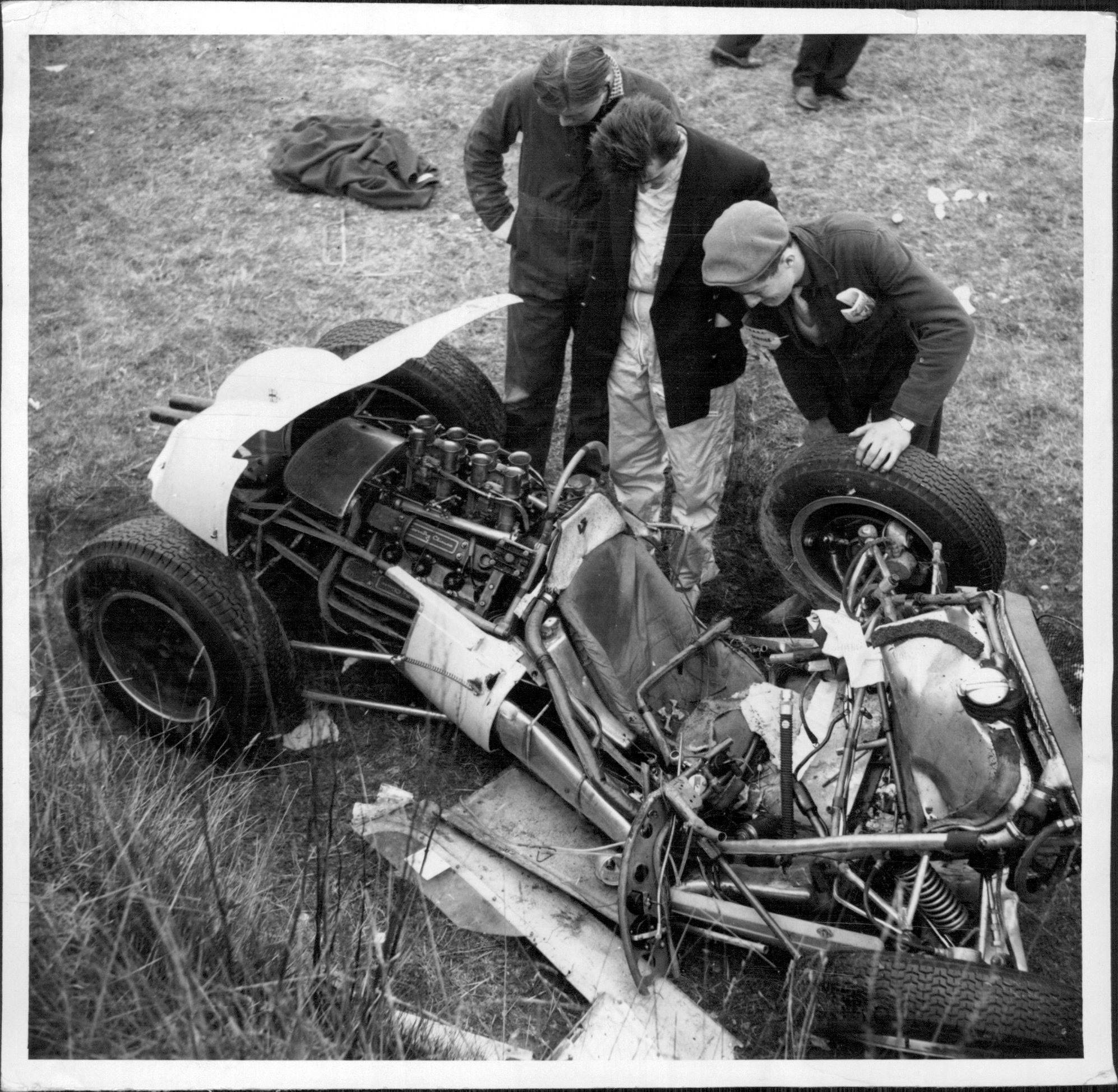
The wreckage of the crash that left the British racing legend in a coma for a month and partially paralysed for six months.
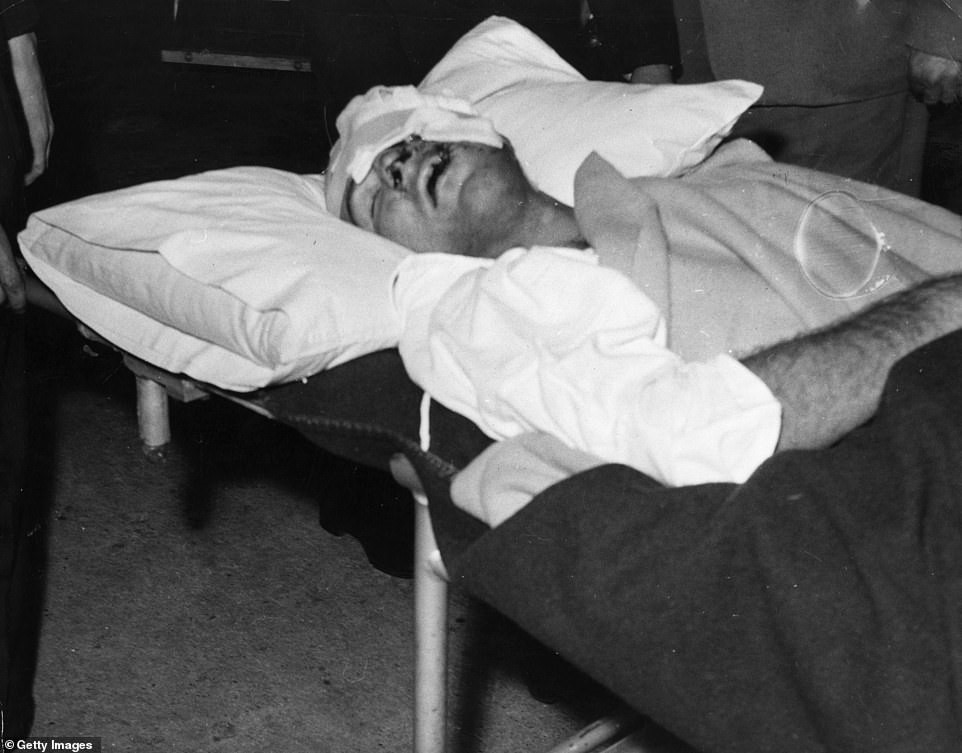
Moss lies unconscious on a stretcher at Atkinson Memorial Hospital, in Wimbledon, after crashing at Goodwood.
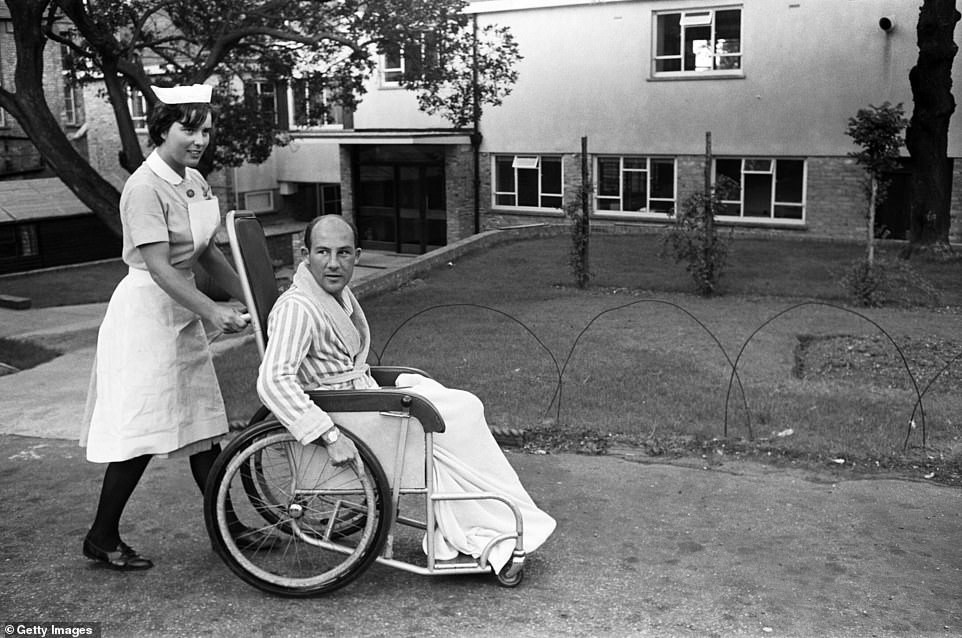
The ever-so popular British driver is pushed in a wheelchair at Atkinson Morley Hospital in Wimbledon after his crash.
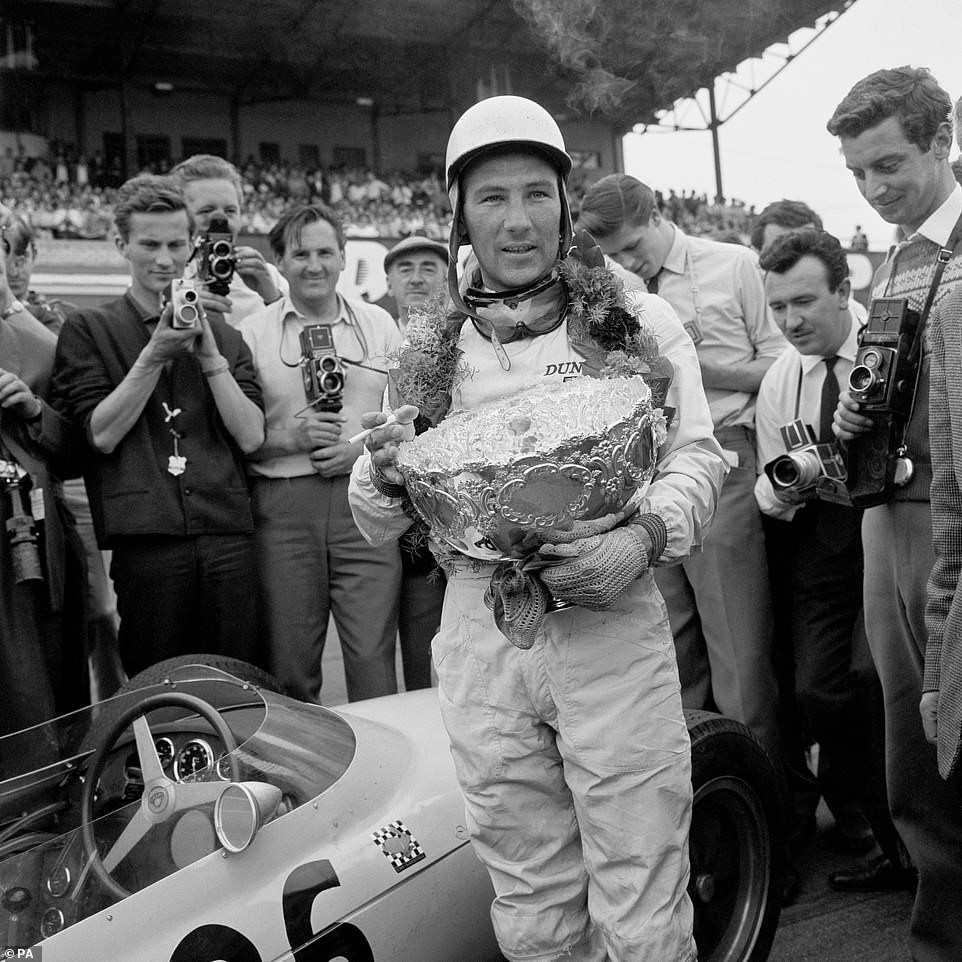
He became one of the most lionised figures in British sporting history and earned huge respect through his sportsmanship.
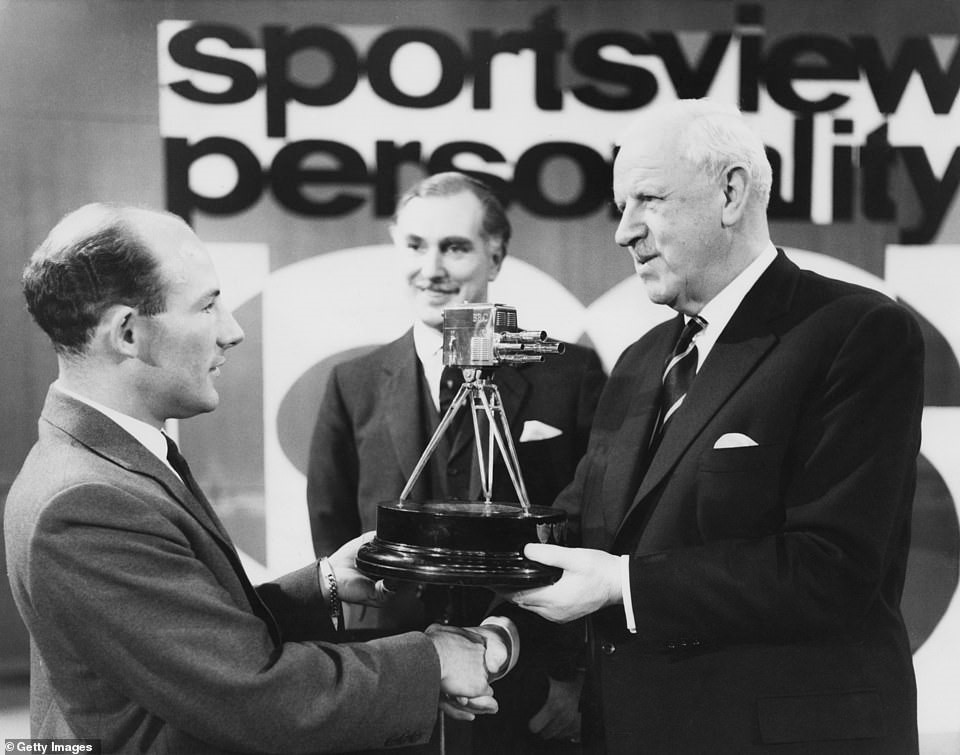
The London-born superstar picks up his “Sports Personality of the Year” award for his Formula One exploits in 1961.
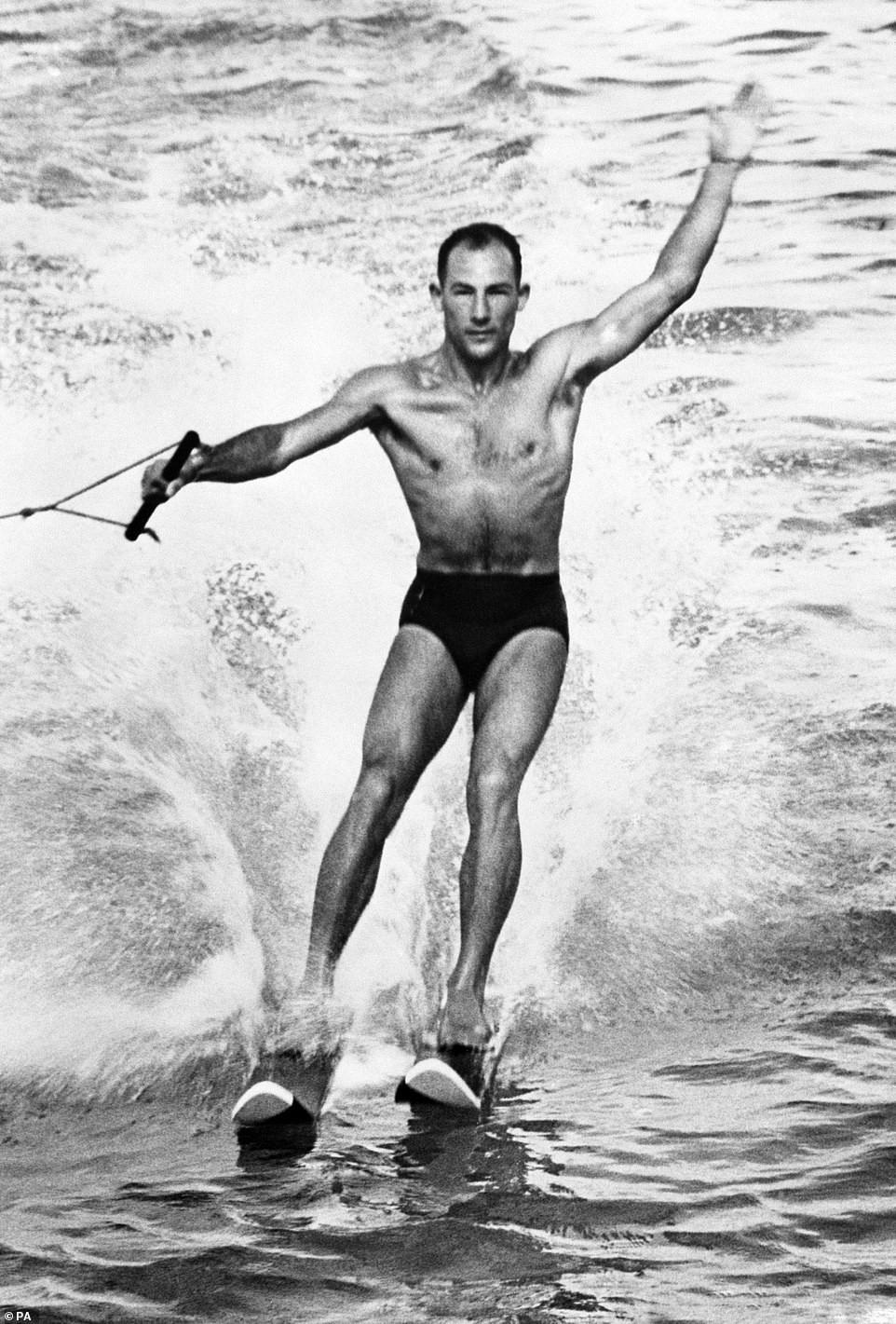
The Brit trades the car for some water-skiing, while on holiday in sunny Bahamas, back in March 1955.
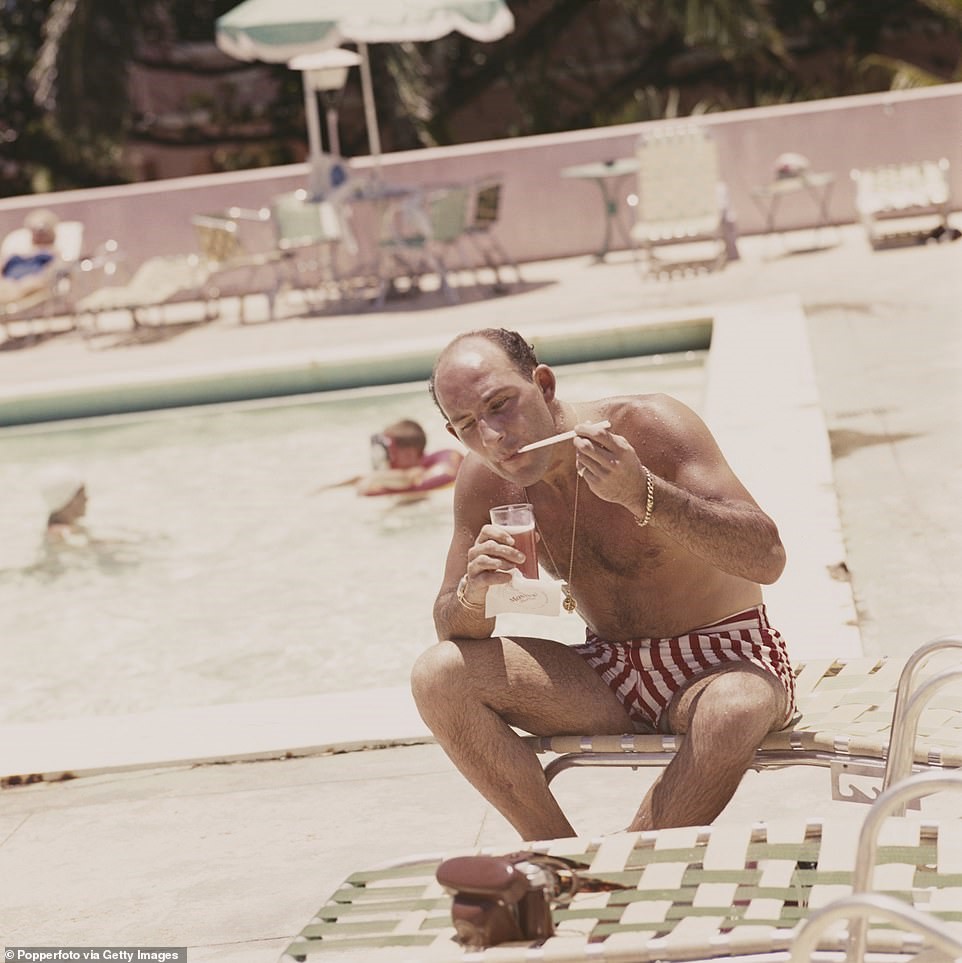
Moss sips from a glass beside a swimming pool in the Bahamas during a period of rest and recuperation after his crash.
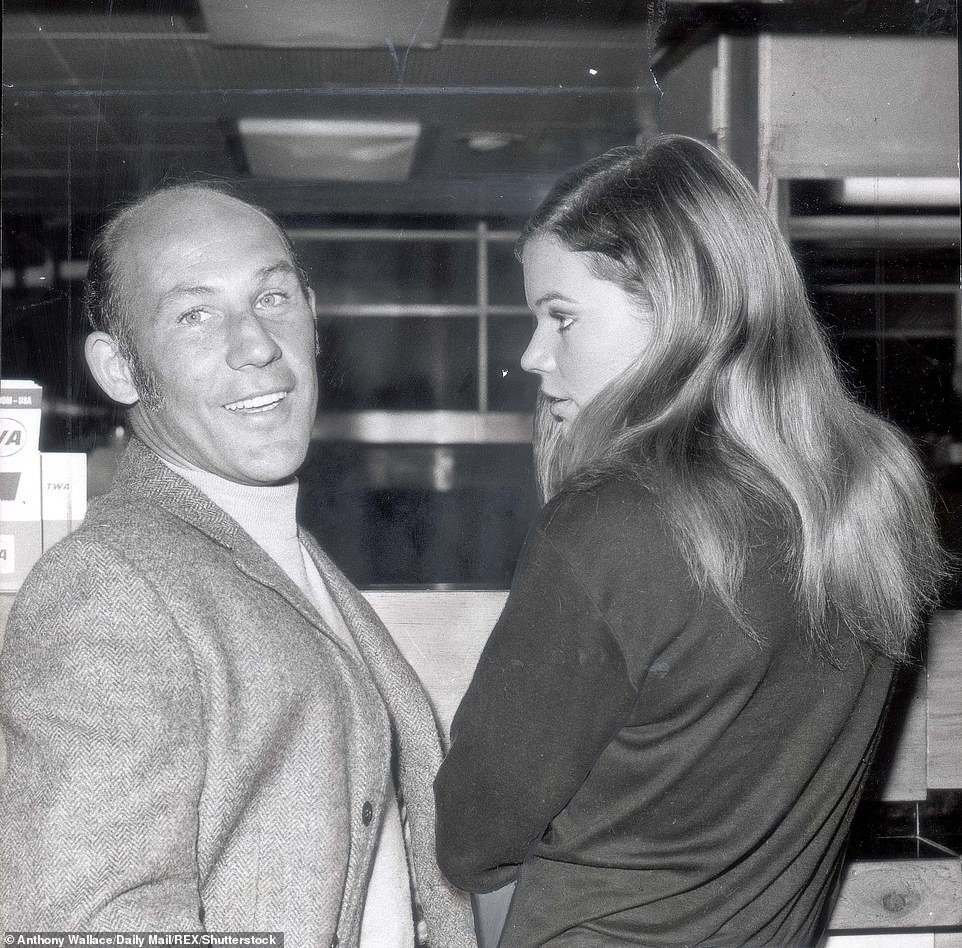
Moss earned a reputation with the ladies during his incredible career, which spanned from 1948 to 1962.
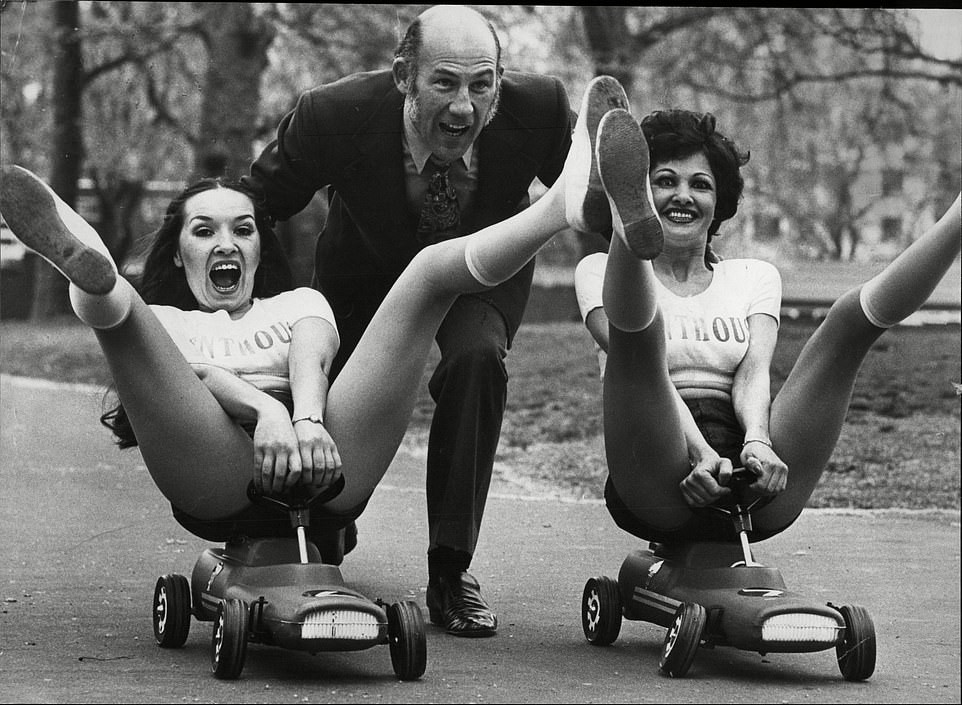
Moss' dashing and daring reputation throughout his life always stood for a certain brand of Englishness.
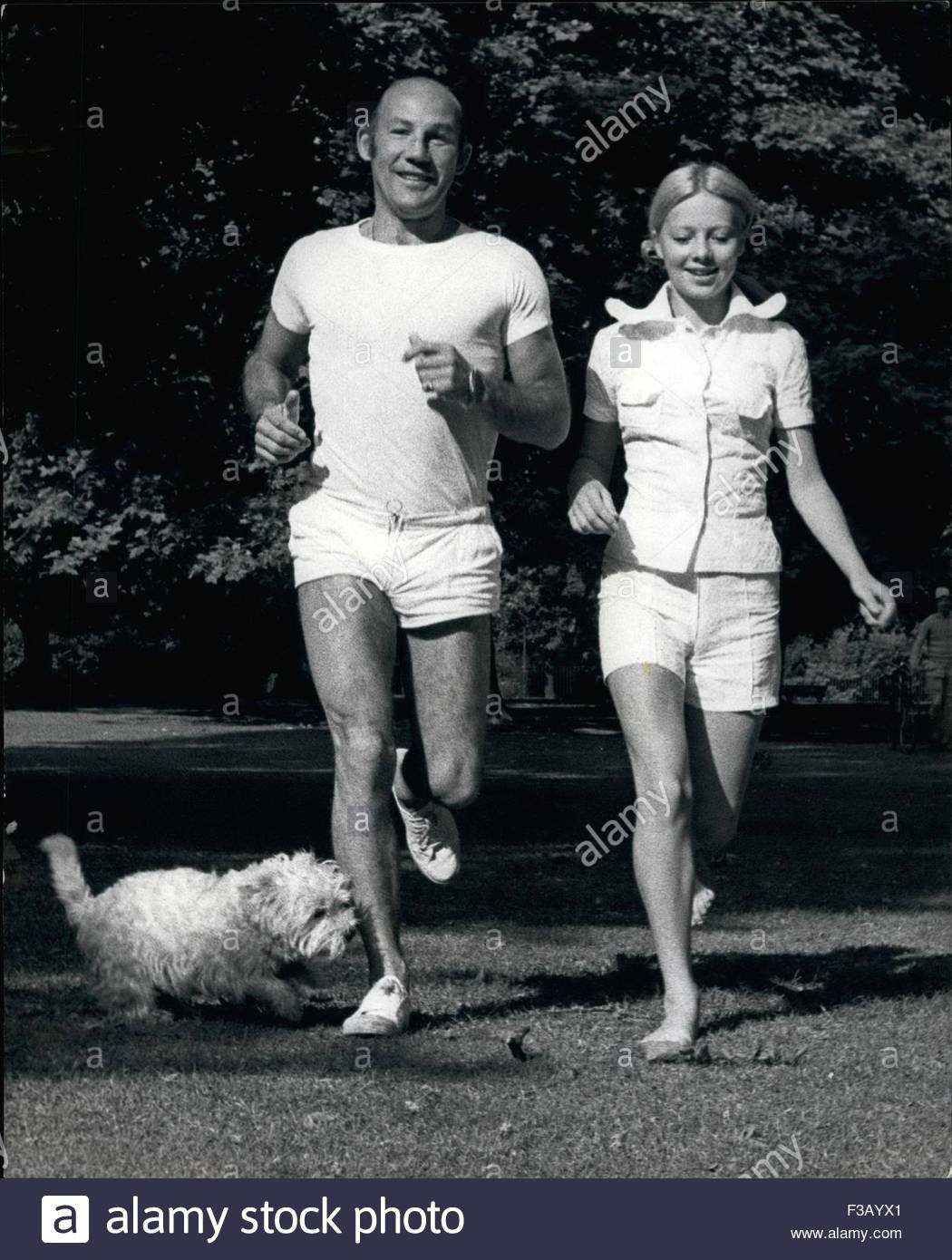
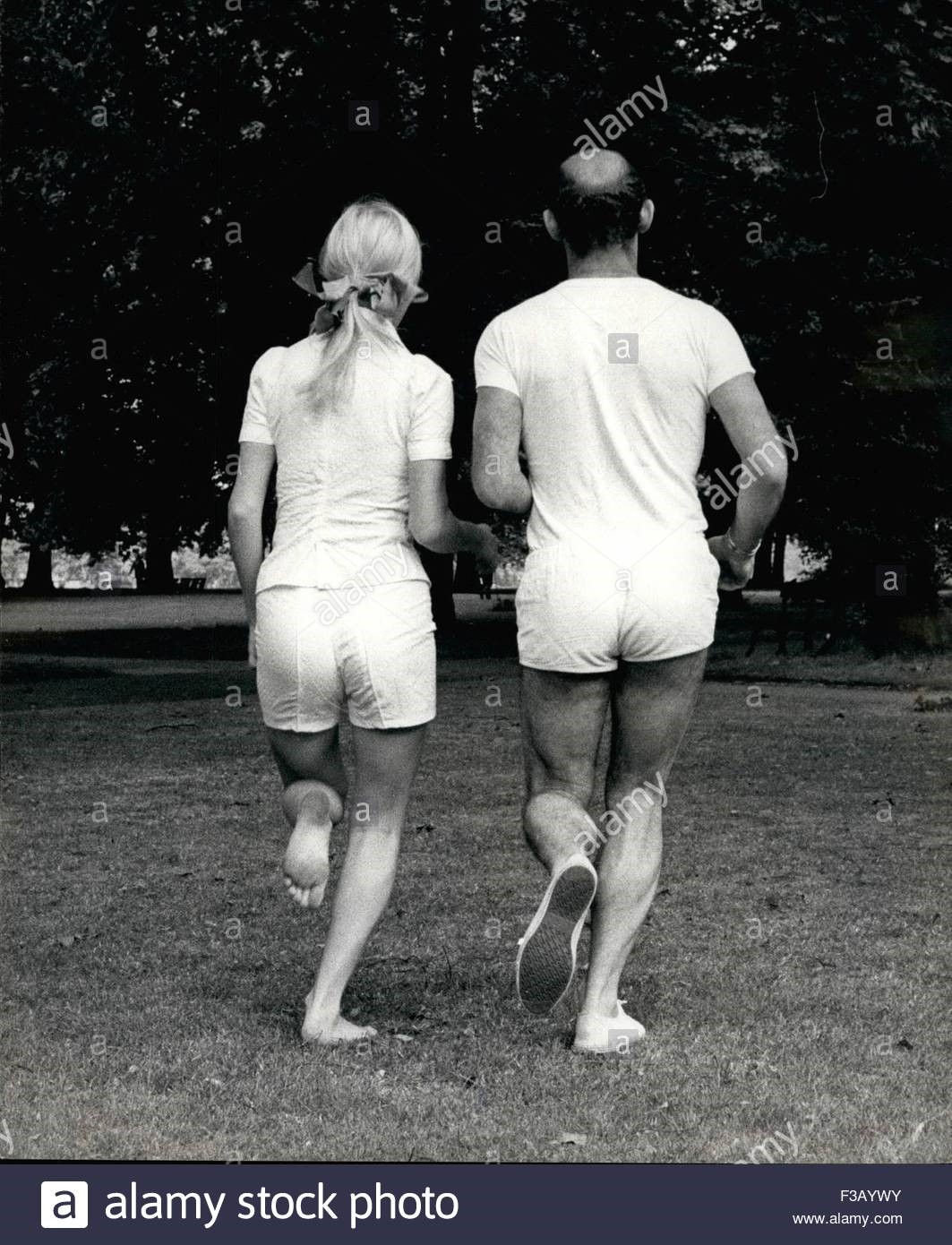
January 03, 1965. Stirling finds a keep-fit friend: in training for his first to competitive drive in several years, the 84 hour marathon event at West Germany's Nurbugring circuit, in August - Stirling Moss has hately been taking an early morning keep-fit run in Hyde Park. And in the last week he has been joined by an attractive young Swedish actress. Agneta Eckemyr, whom he met in the park, who is also a keep fit fiend and a near neighbour of Stirling. Agneta, 18, has been in London for two fil tests - one for the latest James Bond epic ''On her Majesty's Secret Service'' - and for ''A.B.C.D.E. Image ID: F3AYWY.
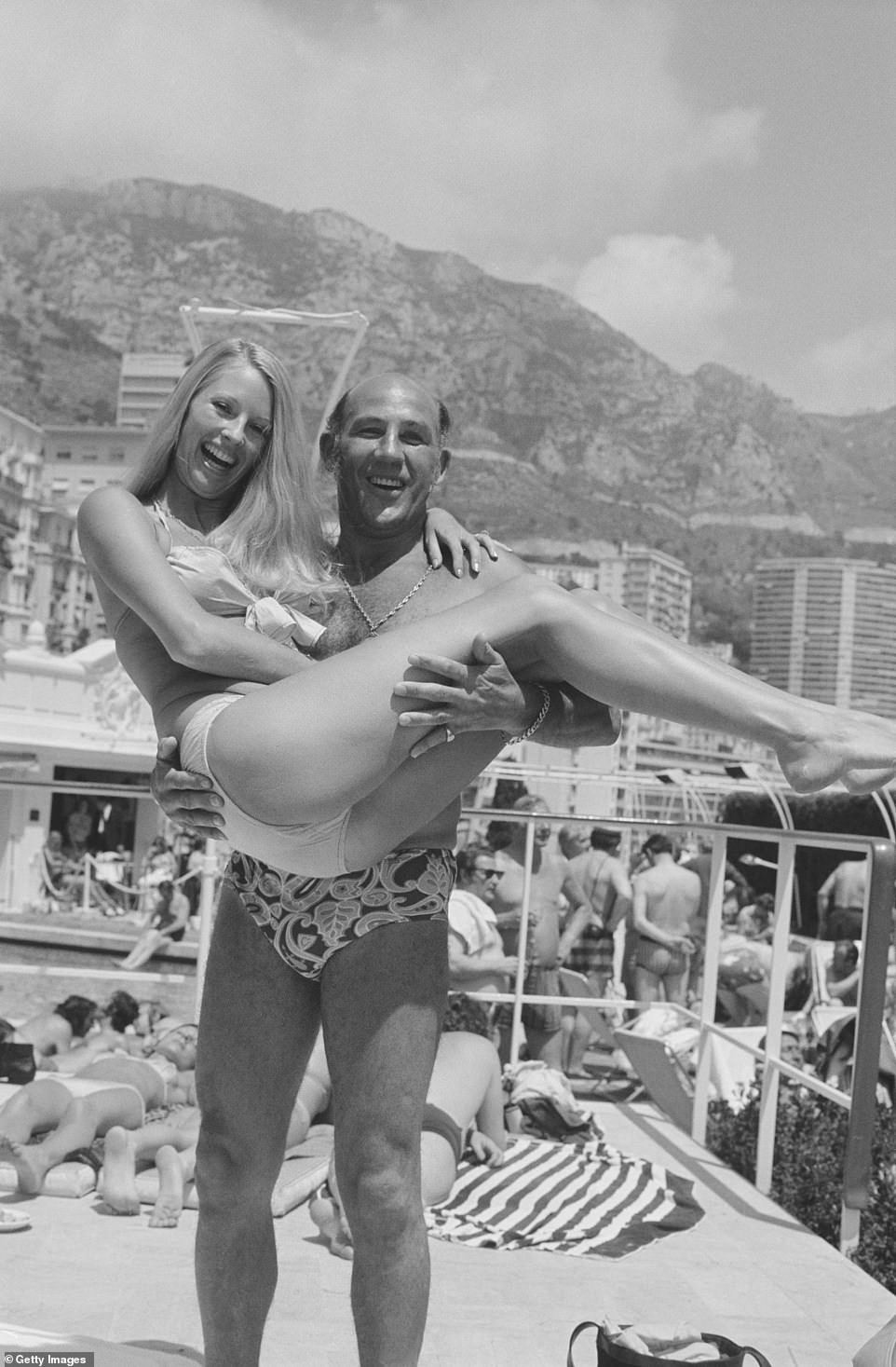
The former driver lifts up fashion model Liz Hooley while on holiday in Monaco back in June 1973.
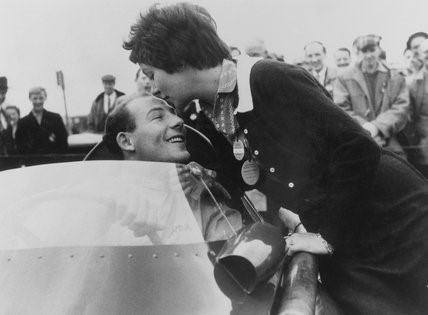
Stirling Moss, in car, kisses his fiance Katie.
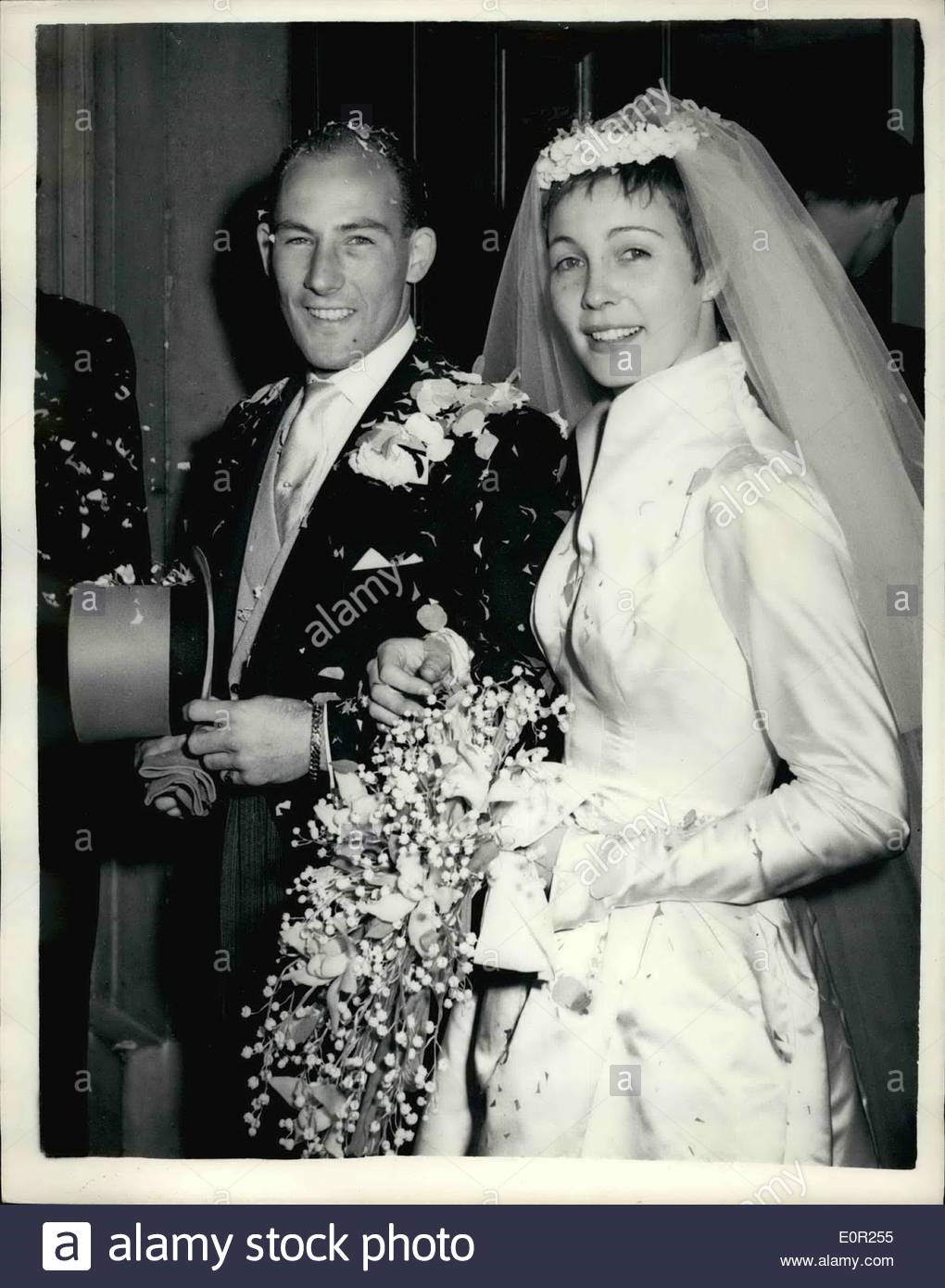
October 10, 1957. Stirling Moss weds Katie.
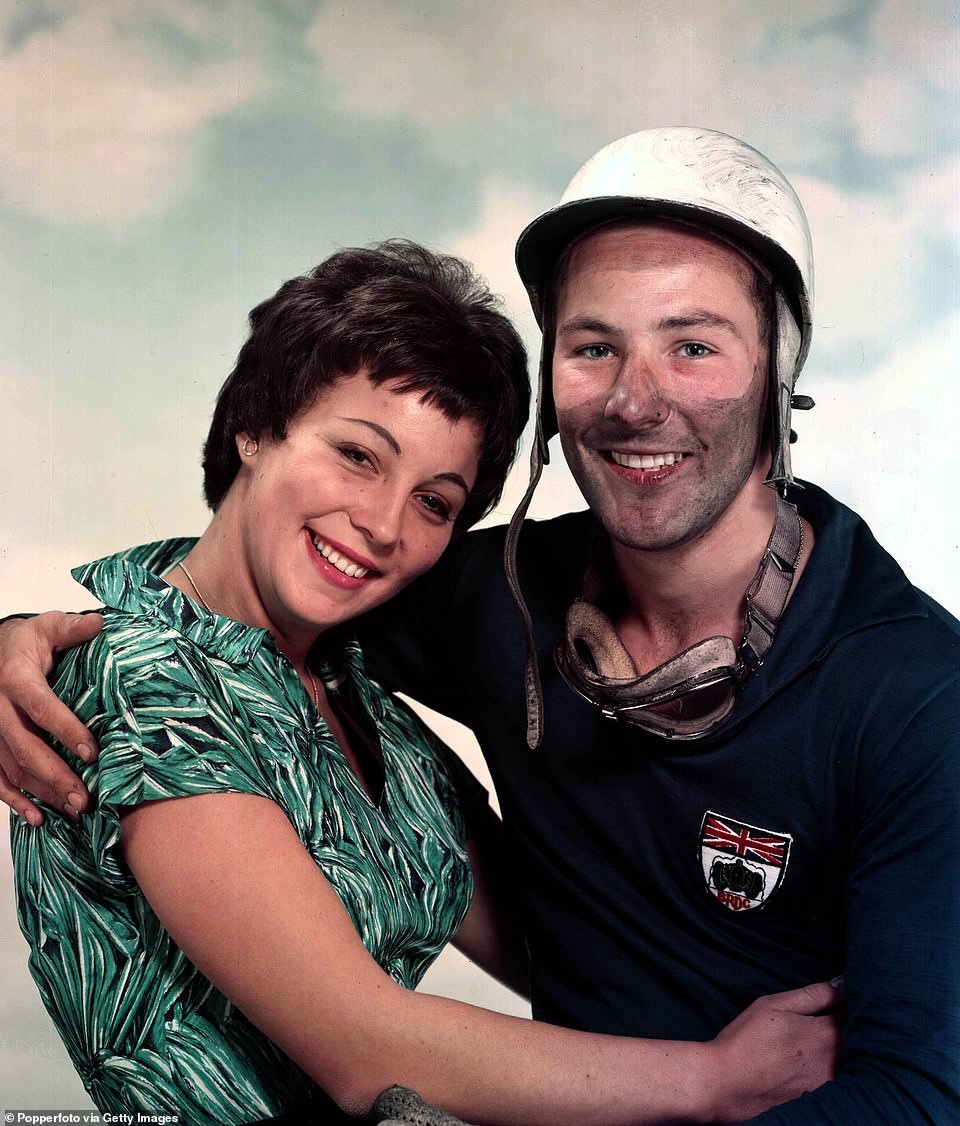
The British Formula One legend with his first wife Katie - whom were married between the years of 1957 to 1959.
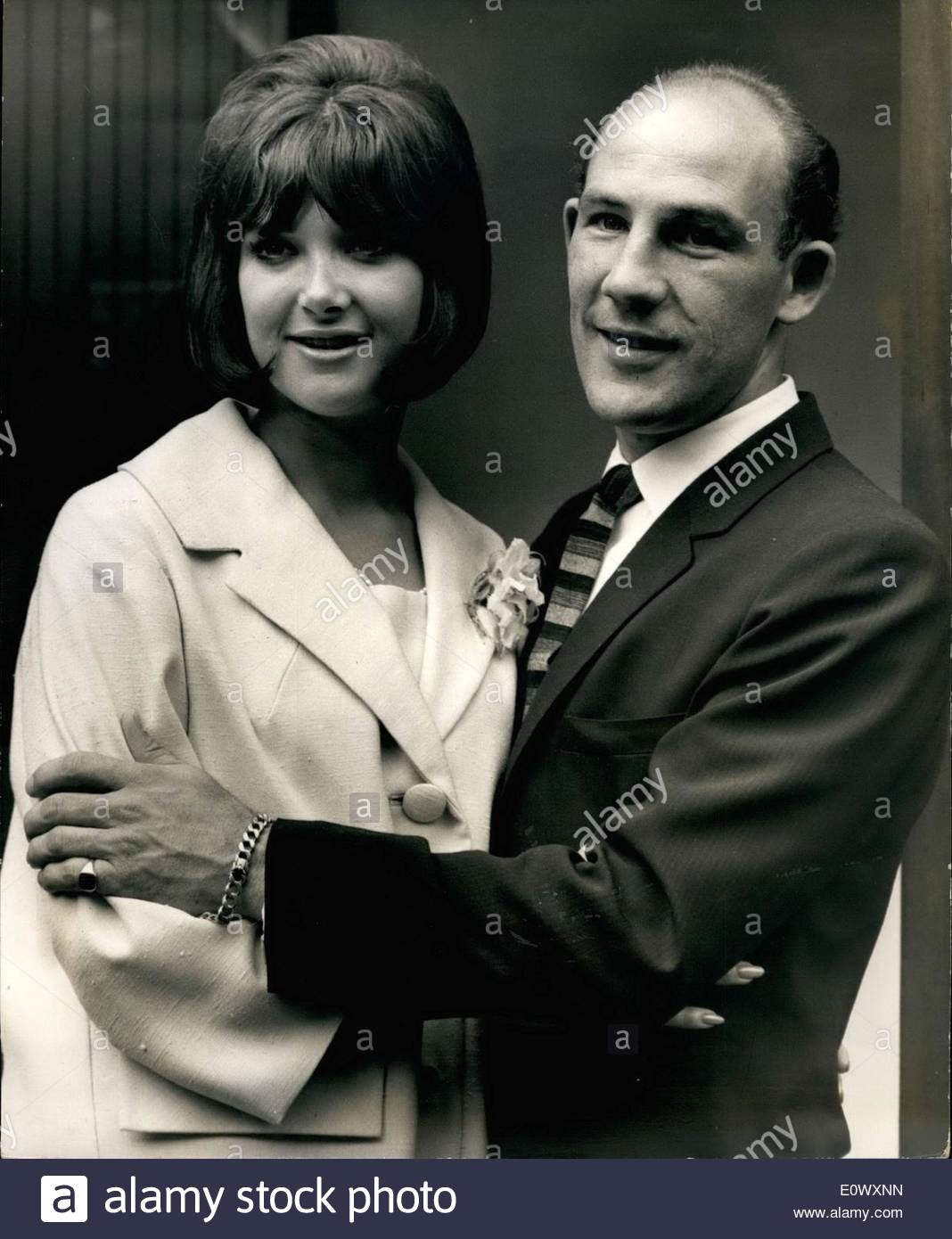
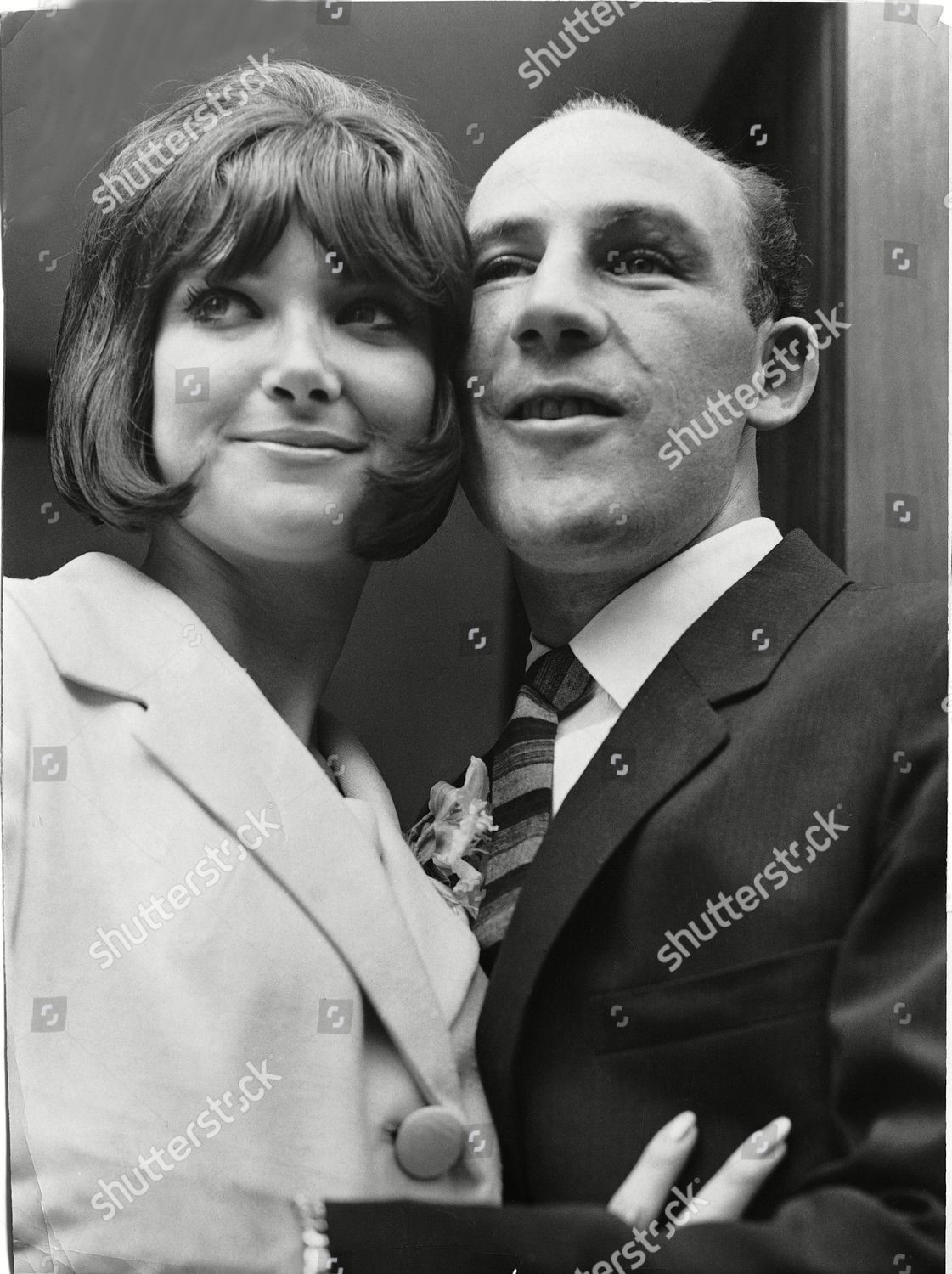
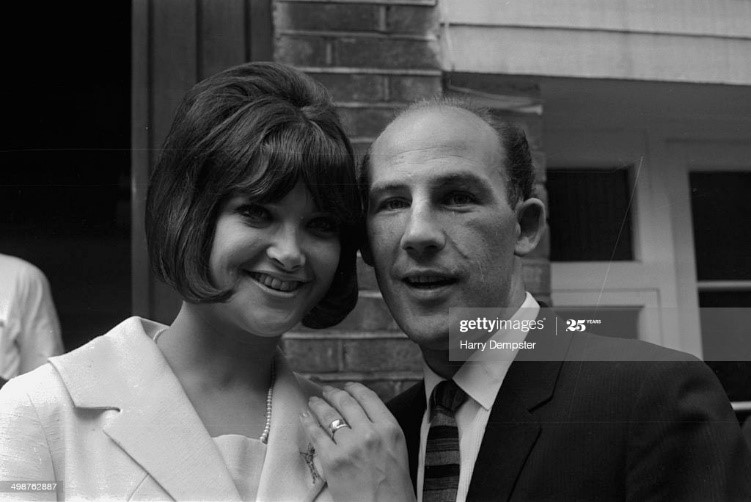
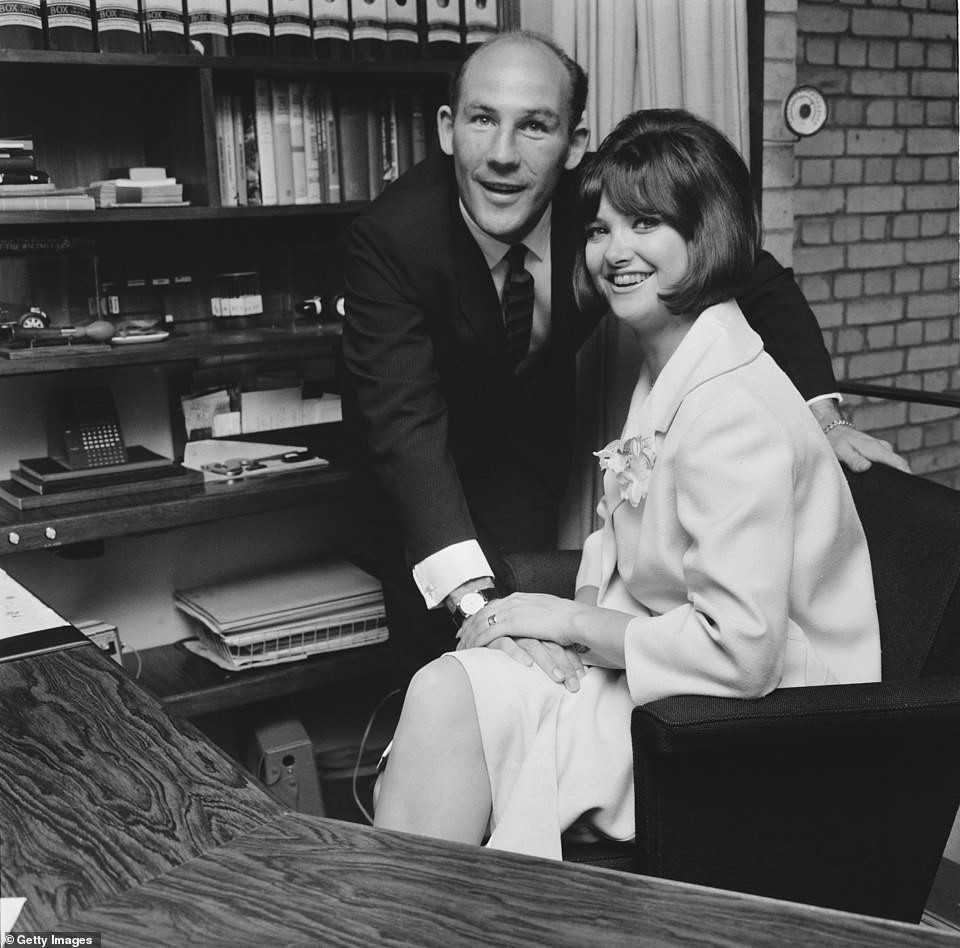
June 06, 1964. Stirling Moss weds his second wife Elaine.

In 1964 Stirling Moss and his American wife Elaine Barberino sit on a sofa together – Stirling speaks on a telephone whilst Elaine looks at him. Elaine has a perfect beehive hairstyle and they are both dressed fashionably.
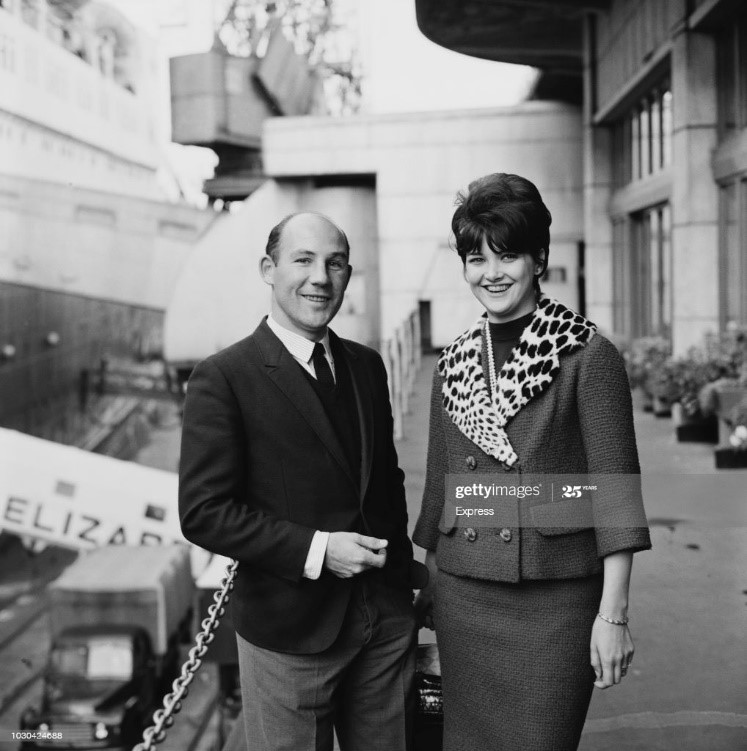
Moss with Elaine Barberino - with the pair married between 1964 to 1968.
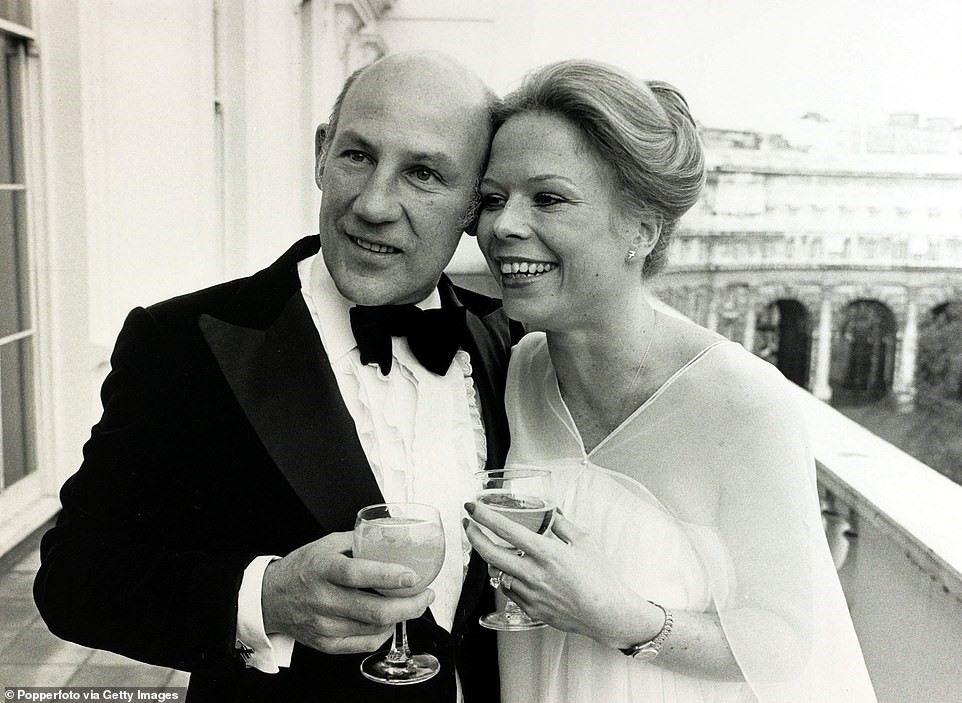
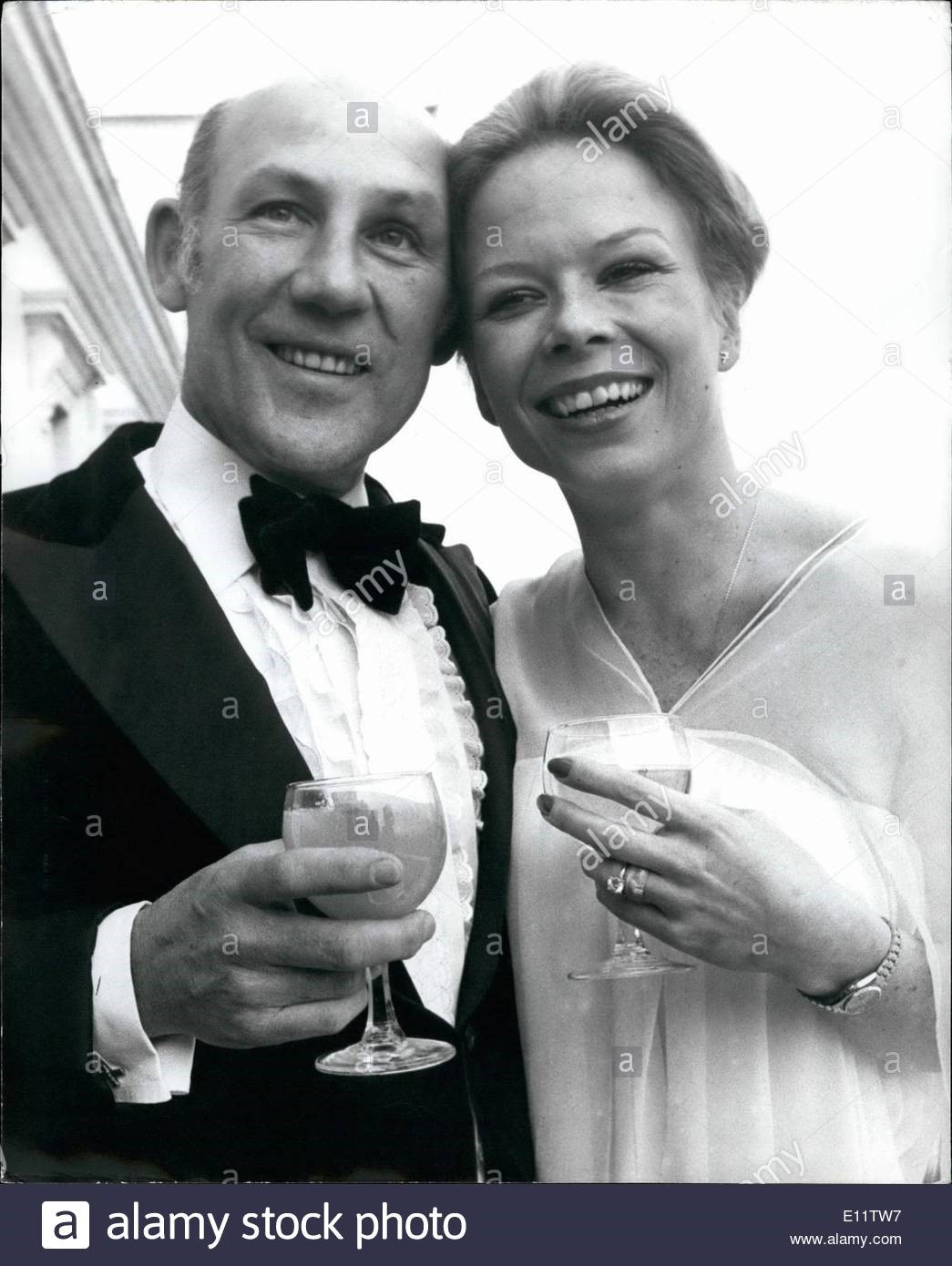
Moss on his wedding day, on 4 April 1980, with his third wife Susie, whom he settled down with for the remainder of his life.

09 September 1993. Stirling Moss with actress Fiona Fullerton launch The Orient Express Trophy from Victoria Station.
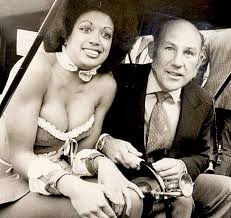
Stirling Moss and Penthouse Pet Susie Lambie in a replica of a 1901 Ford Motor Car.

Moss had made a good living out of his exploits and continued to trade off his highly marketable legend as 'Mr Motor Racing'.
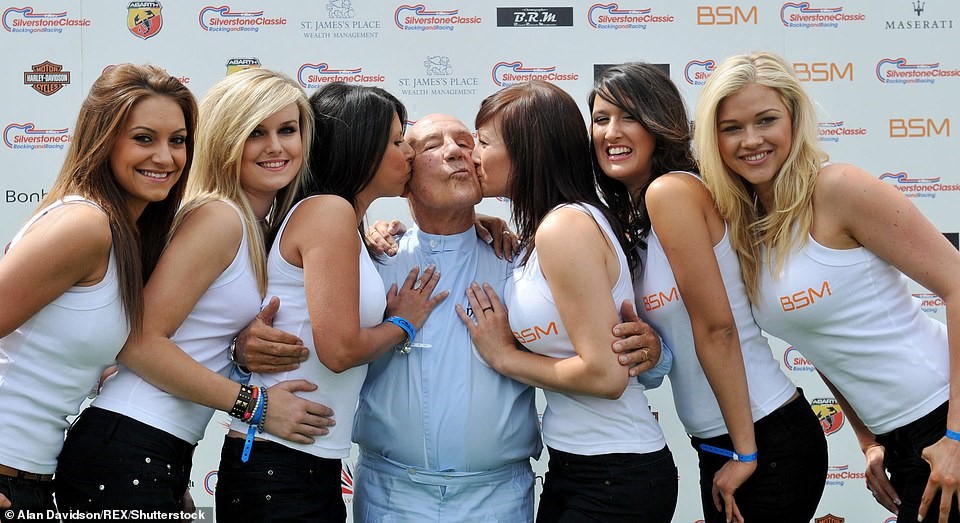
Moss poses for a picture with six grid girls at Silverstone Circuit in Northamptonshire, back in July 2010.
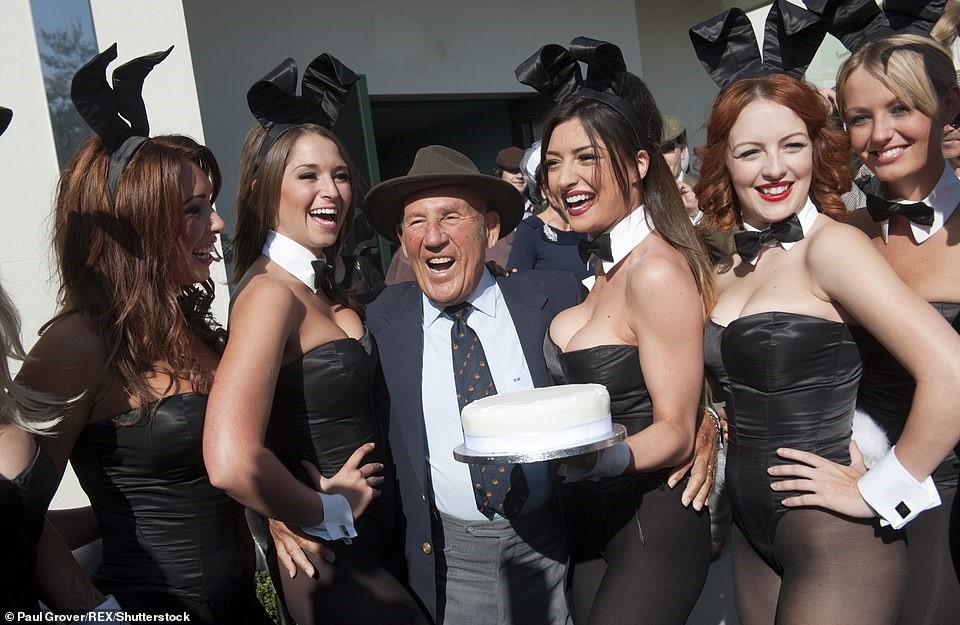
Moss poses for a photograph with Bunny Girls at the Goodwood Revival meeting in Sussex in September 2011.
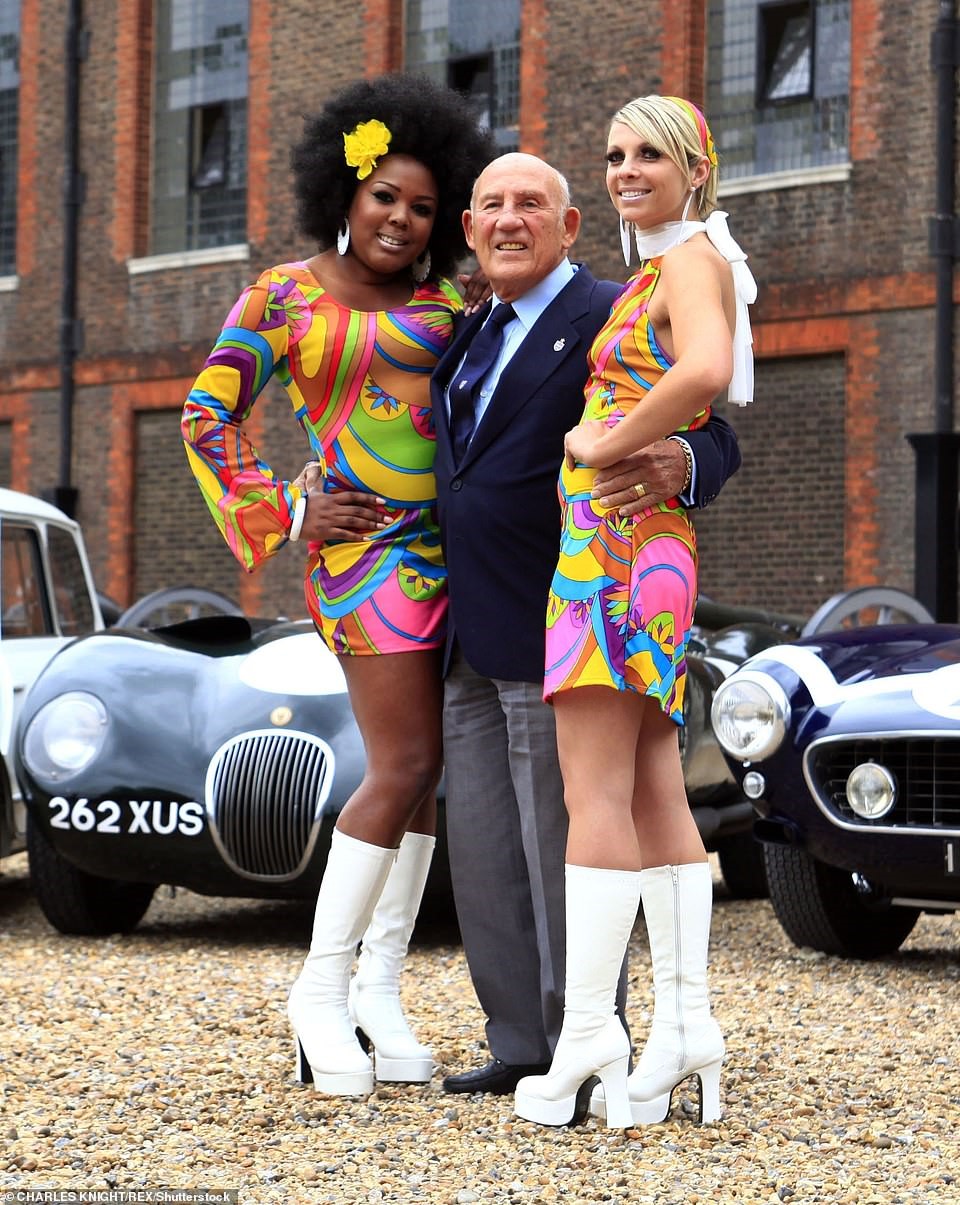
Moss poses for a picture with 1960-styled models back in May 2011.
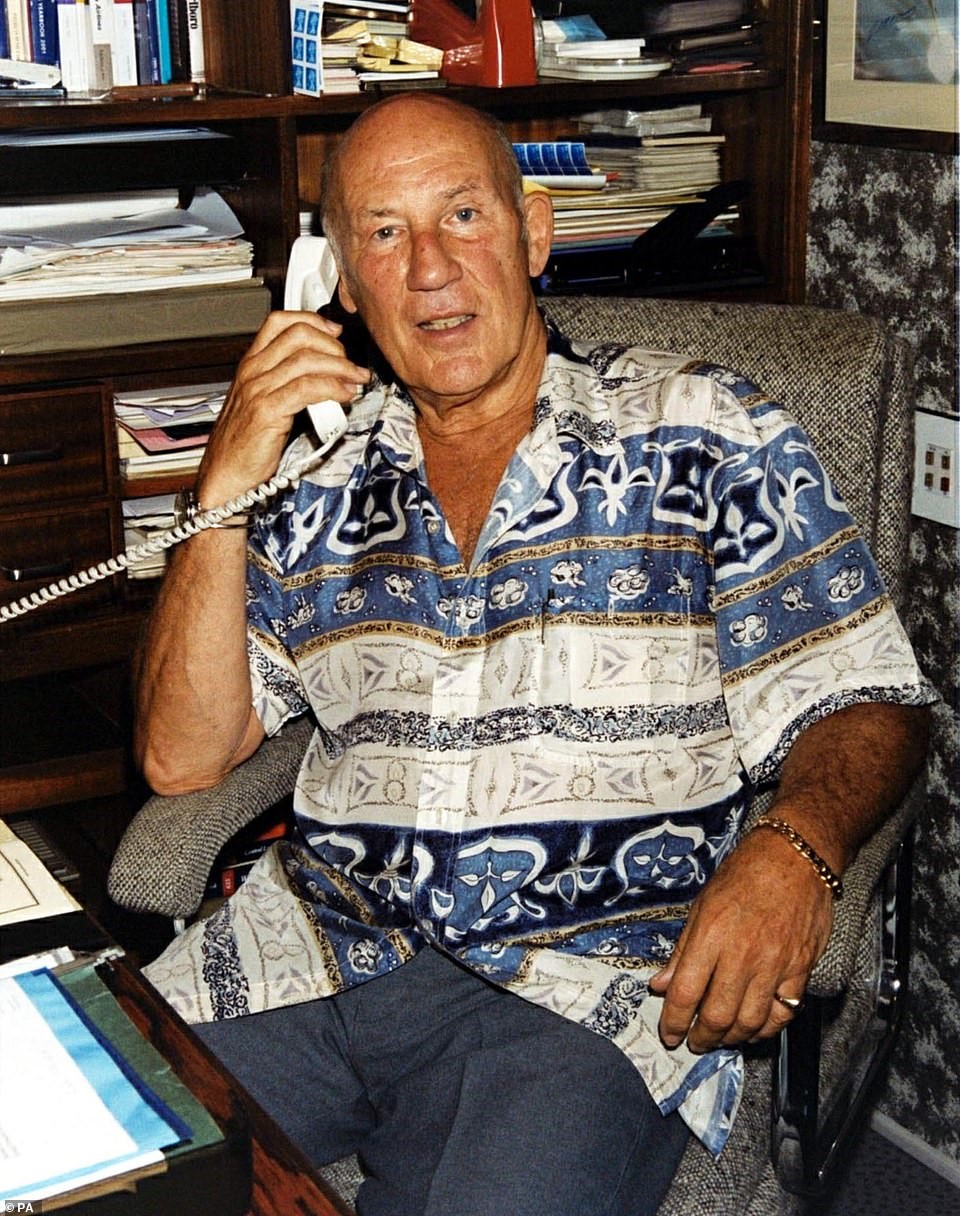
Moss, pictured in his London home, was the rarest of phenomena in sport: a man who rose above its biggest prizes.
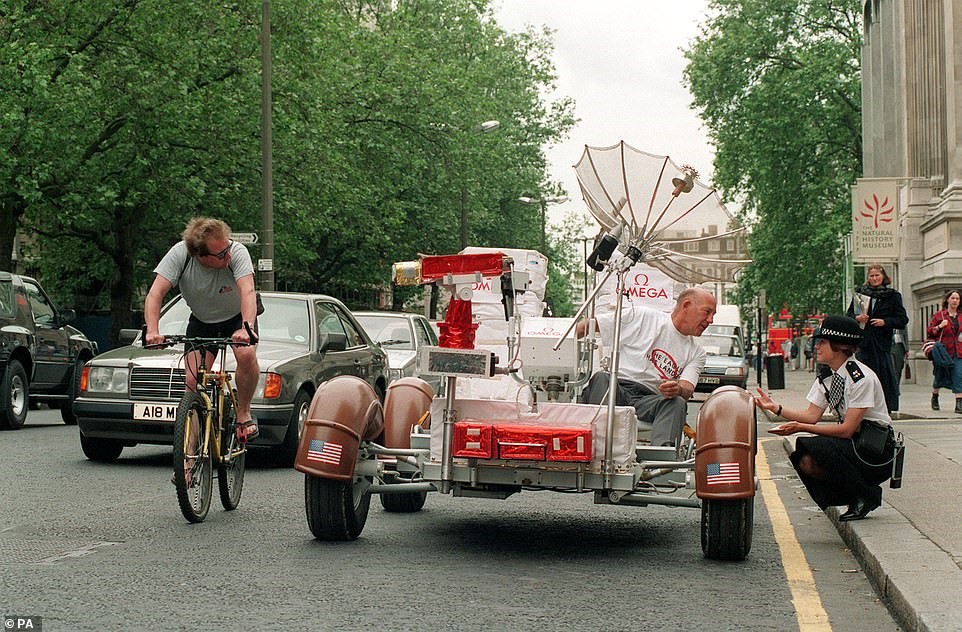
He speaks to a policewoman as he drives Lunar Rover Moon Buggy through the streets of Kensington to the science museum.
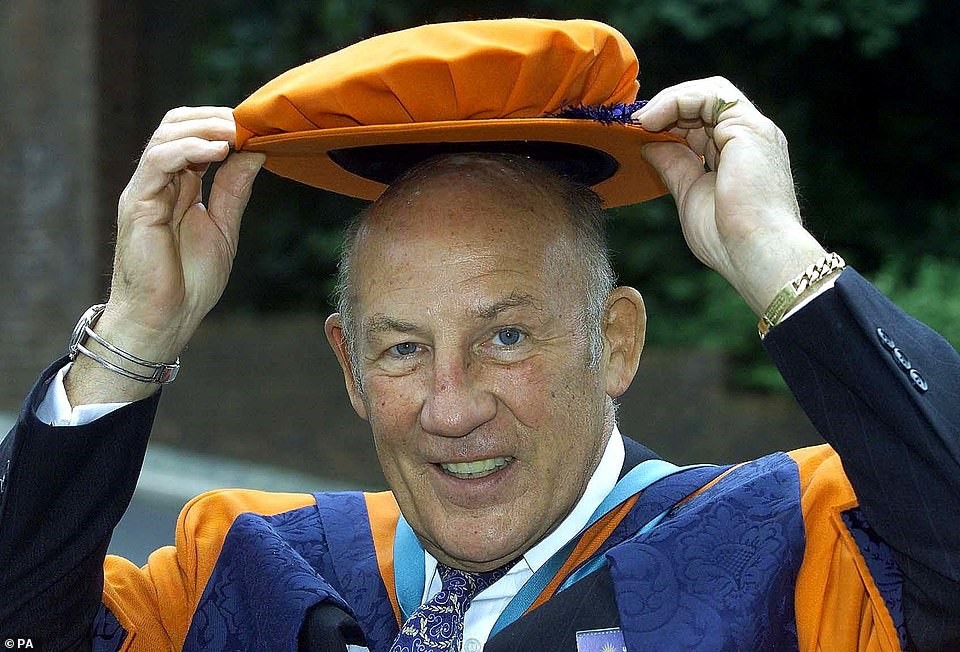
The motor racing legend poses for a picture after receiving an honorary doctorate in technology from Sunderland university.
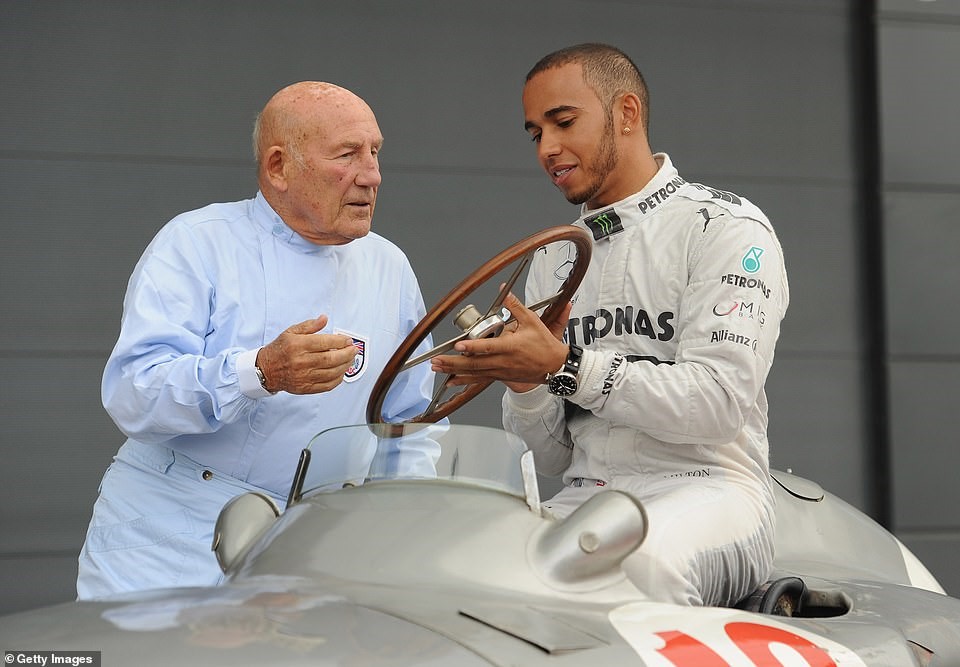
Moss pictured here talking to six-time world champion Lewis Hamilton, back in 2013 at the Silverstone Circuit.
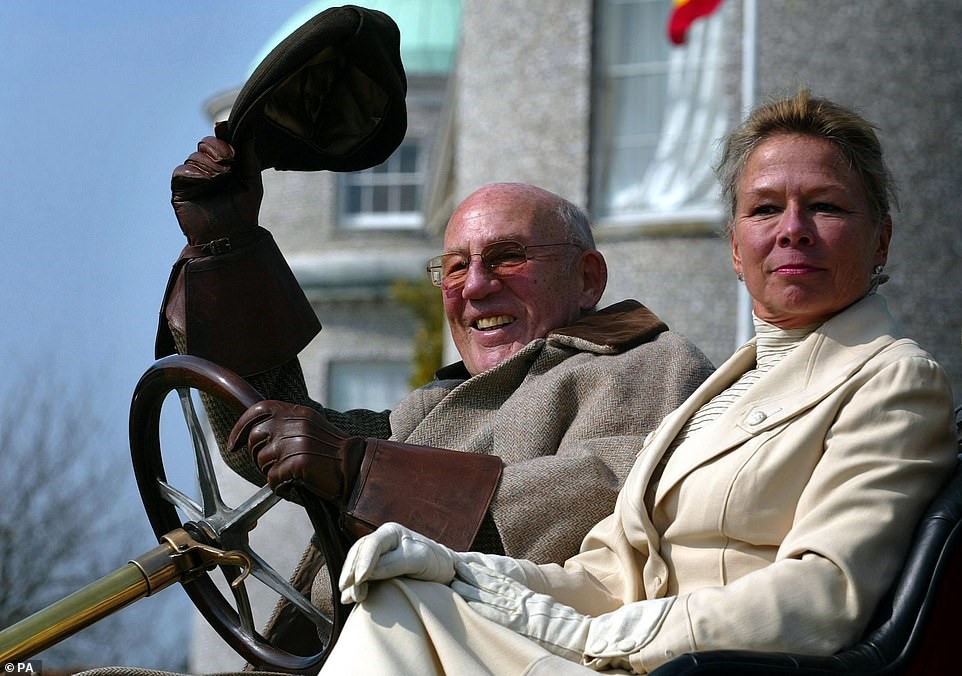
Moss' third and final wife, Lady Susie, was his real diamond - she was unfailingly at his bedside over the last few years.
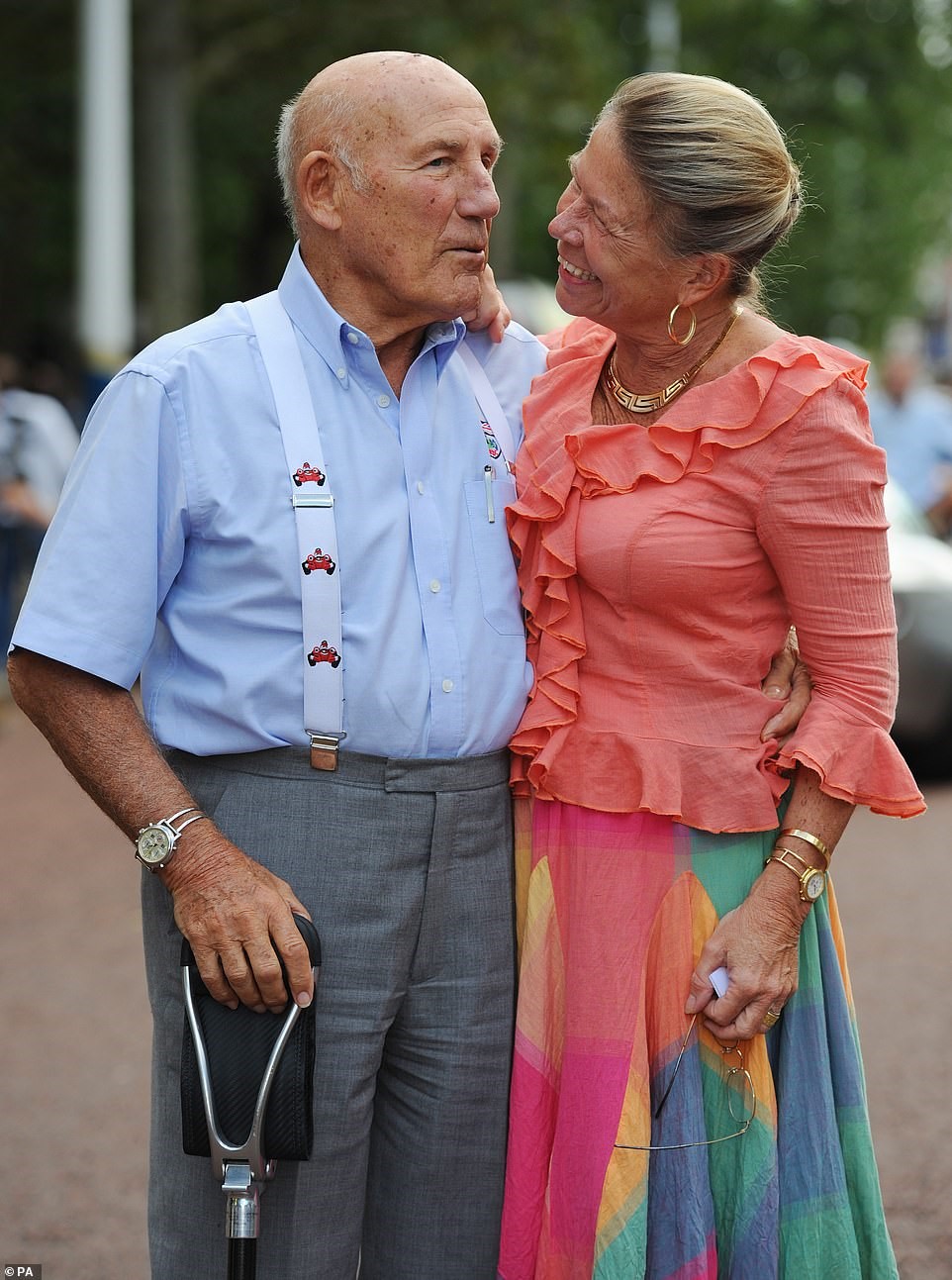
Lady Moss paid a touching tribute to her late husband following his tragic death: 'he died as he lived, looking wonderful'.
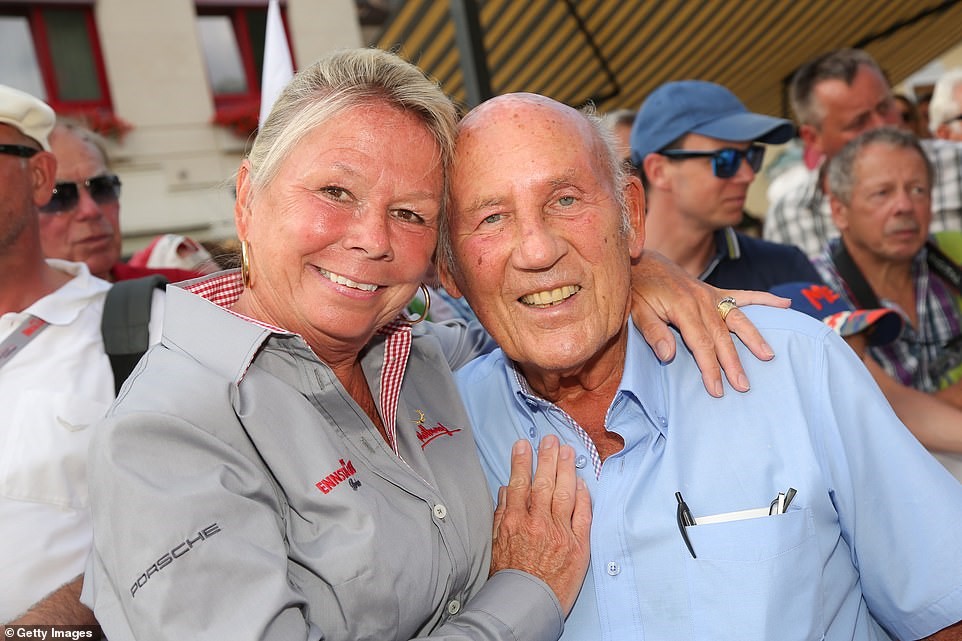
Lady Moss was at his bedside as he died, having nursed him through a long illness, at their central London house.
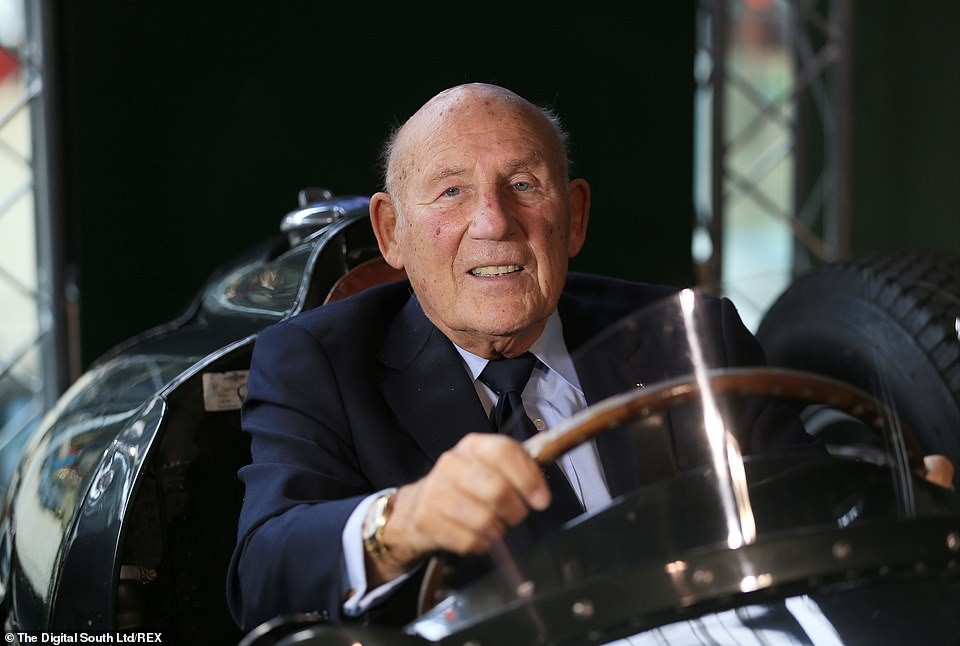
The greatest all-round racing driver, who once seemed indestructible, leaves behind a massive hole in British sport.
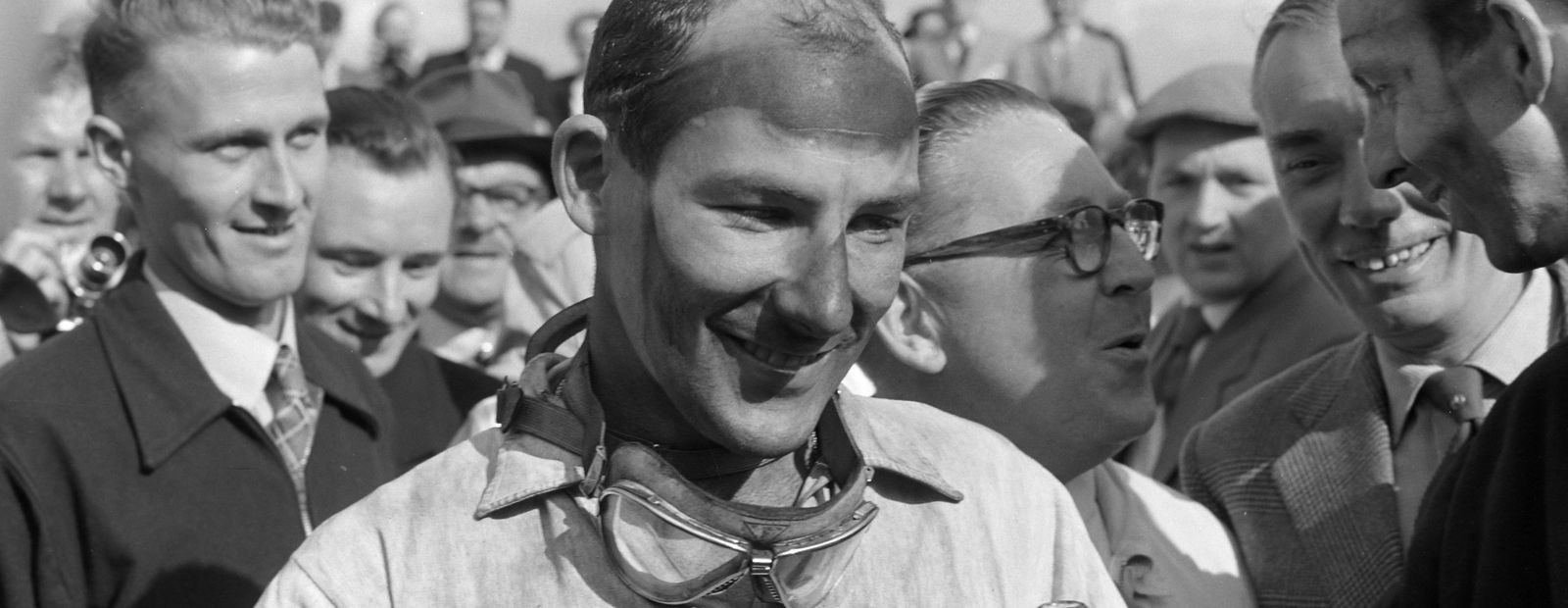
Stirling Moss, one of the greatest drivers of all time, dies at 90. Known for his brash, puckish persona, he won 212 of his 529 races, including 16 Grand Prix victories, but never won the Grand Prix Championship title. By Douglas Martin. Published April 12, 2020.
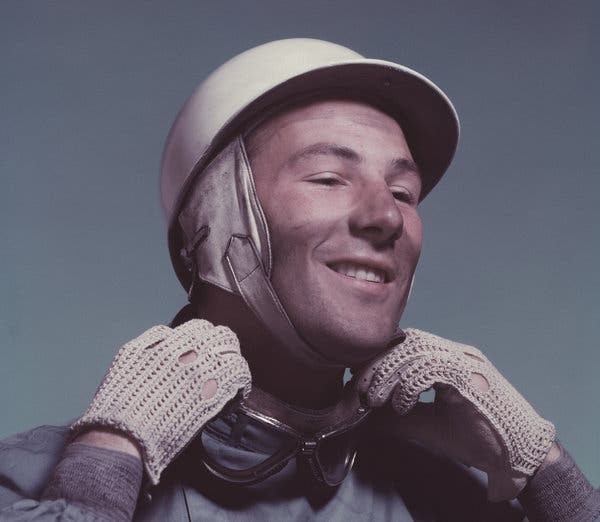
Stirling Moss in 1955. His fellow drivers considered him the best in the world. Credit Hulton Archive, via Getty Images.
In the 1950s, small boys wanted to be Stirling Moss and so did men.
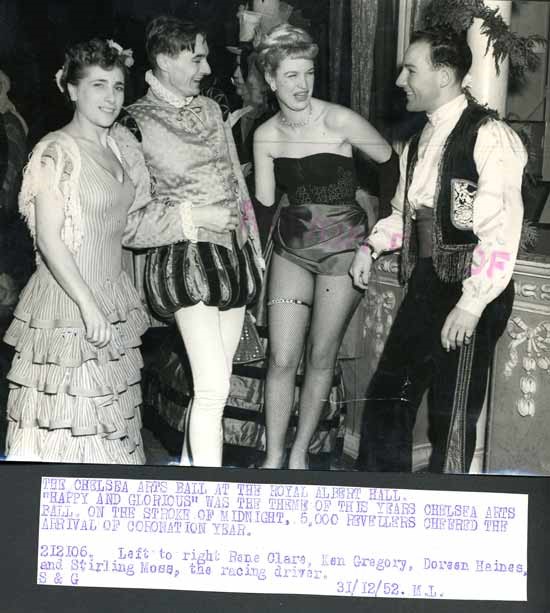
1952 December 31. Chelsea Arts Ball.
Boys saw him as the swashbuckling racecar driver whom many considered the best in the world. Men saw this and more: Moss made more than $1 million a year, more than any other driver and was invariably surrounded by the jet-set beauties who followed the international racing circuit.
Moss died quietly on Sunday at his home in London as one of his sport’s great legends. “It was one lap too many,” his wife, Susie, told The Associated Press. “He just closed his eyes.”
Moss was a modern-day St. George, upholding the honor of England by often driving English cars, even though German and Italian ones were superior. Polls showed he was as popular as the queen.
Moss said courage and stupidity were pretty much synonymous and may have proved it in a succession of spectacular accidents: seven times his wheels came off, eight times his brakes failed. He was a racer, he insisted, not a driver.
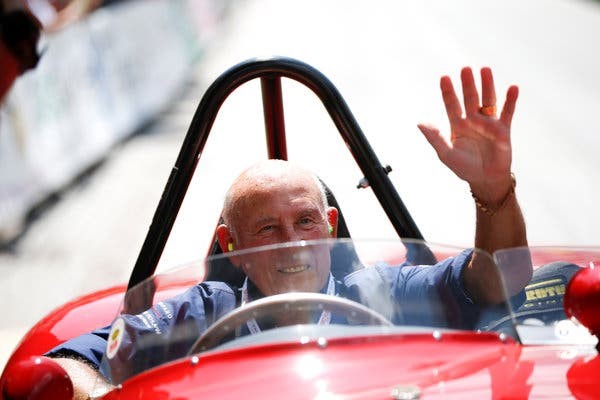
Moss waving to spectators from a 1955 Ferrari 750 Monza during the Ennstal-Classic rally in 2013. Credit Leonhard Foeger/Reuters.
“To race a car through a turn at maximum possible speed when there is a great lawn to all sides is difficult,” he said in an interview with The New York Times Magazine in 1961, “but to race a car at maximum speed through a turn when there is a brick wall on one side and a precipice on the other — ah, that’s an achievement!”
He raced for 14 years, in events that included Grand Prix, sports cars and long-distance rallying, in 107 different types of car.
He set the Class F land speed record on the salt flats of Utah in 1957. He won more than 40 percent of the races he entered, including 16 Grand Prix. For four consecutive years, 1955-58, he finished second in the world Grand Prix championship. And in each of the next three years, he placed third.
“If Moss had put reason before passion,” said Enzo Ferrari, “he would have been world champion many times.”
He was called the best driver never to win the ultimate crown.
He came closest in 1958, but testified on behalf of another driver, Mike Hawthorn, who was accused of an infraction in the Portugal Grand Prix. Hawthorn, as a result, was not disqualified. When the season ended, Hawthorn had 42 points, which are given for factors like fastest lap as well as finishing position. Moss — though he had four Grand Prix wins to Hawthorn’s one — finished second with 41 points.
Polls of other drivers invariably named Moss N.1, but it was his brash, puckish persona that captivated the public. He only reluctantly wore the required helmet, always white, saying he preferred a cloth cap.
In 1955, he won the Italian Mille Miglia, a 992-mile road race, in 10 hours, beating the field by 31 minutes. In 1958, he gambled to win the Argentine Grand Prix by not changing his tires the entire 80 laps, despite their having a design life of 40 laps.
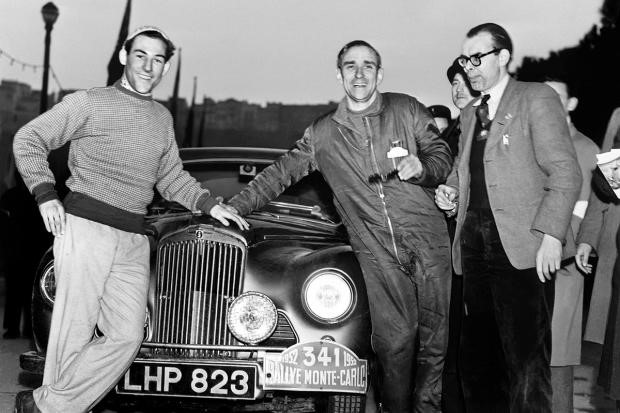
Moss in 1952 at Montecarlo.
In 1961, driving a four-cylinder Lotus, he fought off three six-cylinder Ferraris to win the Monaco Grand Prix.
In 1960, Moss won the United States Grand Prix, five months after breaking both legs and his back at a Grand Prix race in Belgium.
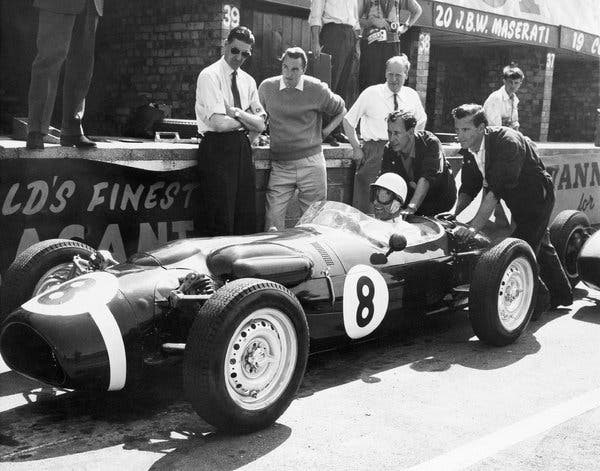
Moss at the wheel of a Ferguson racing car in 1961. Credit Associated Press.
A sinewy 5-foot-7, he favored short sleeves so he could get a suntan in his open cockpit. His seemingly casual slouch as he pushed howling machines to their limits was his signature. And his language elevated his sport almost to poetry.
“Motion, he said, was tranquillity. Why, he wondered, do people walk, since God gave them feet that fit automotive pedals?”
If people watch racing to witness the point where courage converges with catastrophe, Moss defined it.
In 1962 at the Goodwood Circuit racetrack in England’s West Sussex County, a plume of fire shot from his Lotus 18/21 car. The crowd gasped.
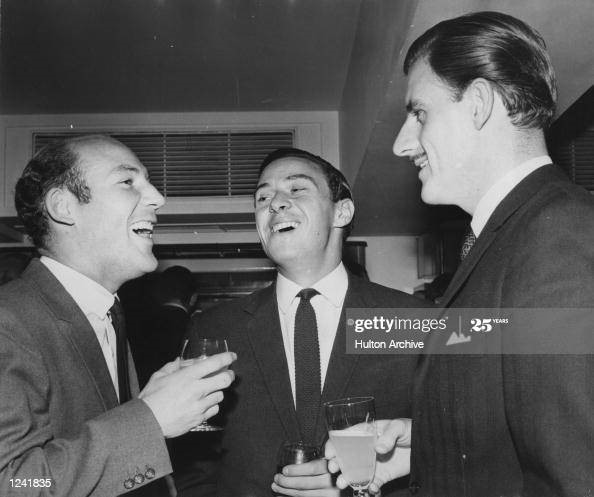
14 January 1964. Stirling Moss, Jim Clark and Graham Hill share a joke at the Savoy Hotel. Credit Allsport Hulton/Archive.
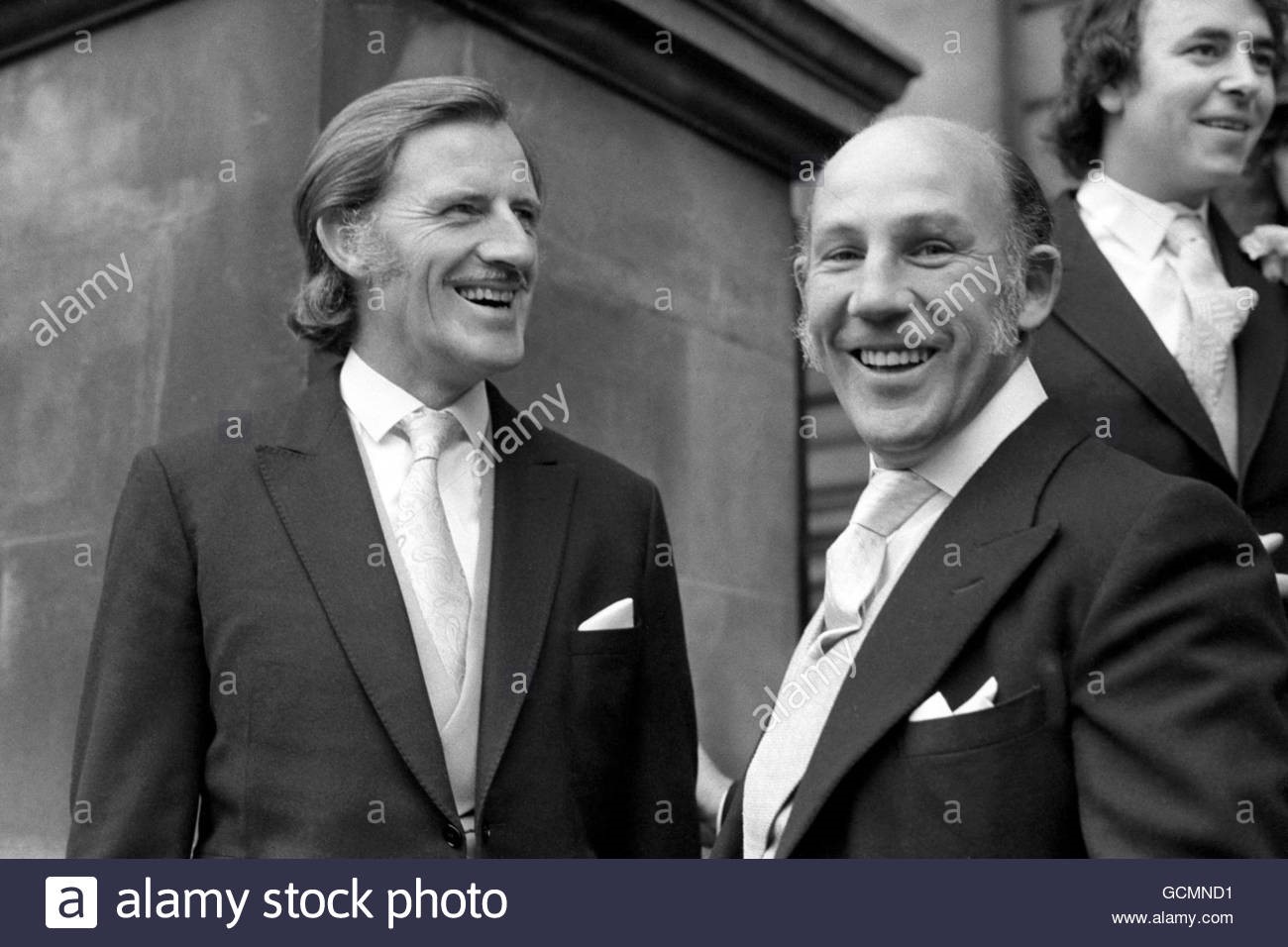
19 October 1974. Graham Hill (l) and Stirling Moss attend the wedding of another British driver, James Hunt. Hunt wed to model Suzy Miller at Brompton Oratory, London.
As Moss tried to pass Graham Hill, his car veered and slammed into an eight-foot-high earthen bank.
It took more than a half-hour to free Moss from the wreckage. His left eye and cheekbone were shattered, his left arm broken and his left leg broken in two places.
An X-ray revealed a far worse injury. The right side of his brain was detached from his skull. He was in a coma for 38 days and paralyzed on one side of his body for six months. He remembered nothing of the disaster. He considered hypnosis to recover the memory, but a psychiatrist said that might cause the paralysis to return.
When he left the hospital, he took all 11 nurses who had treated him to dinner, followed by a trip to the theater. A year later, he returned to Goodwood and pushed a Lotus to 145 m.p.h. on a wet track. He realized he was no longer unconsciously making the right moves. He said he felt like he had lost his page in a book.
Though he believed he remained a better driver than all but 10 or 12 in the world, that was not good enough. He retired at 33.
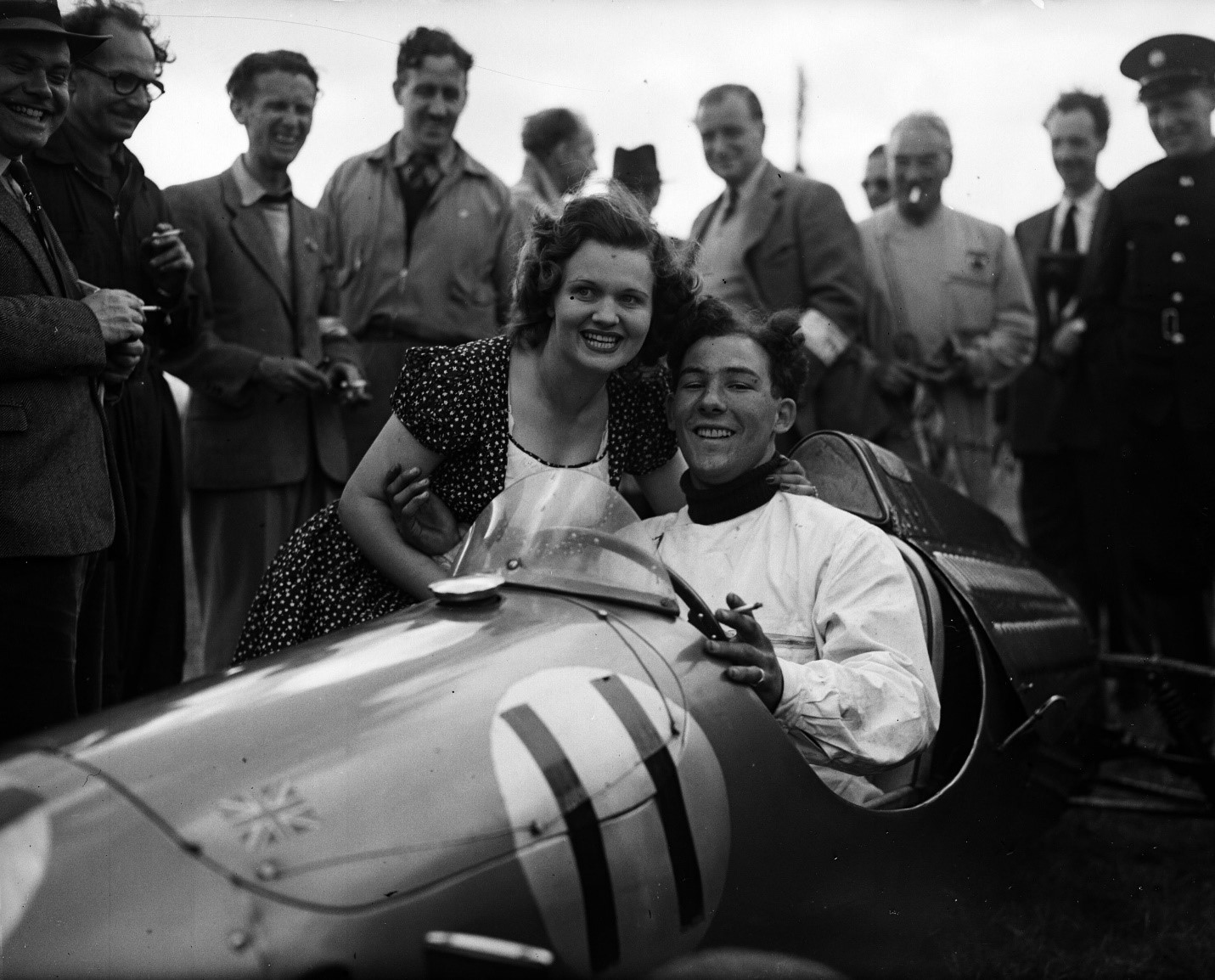
Stirling Moss being congratulated by Mrs. John.
Moss was more than his talent. He was a beautiful name, one that still connotes high style a half-century after his crash, evoking an era of blazers and cravats, of dance bands and cigarette holders. One legend had him driving hundreds of miles in a vain effort to introduce himself to Miss Italy the night before a big race. His 16 books cemented his legend.
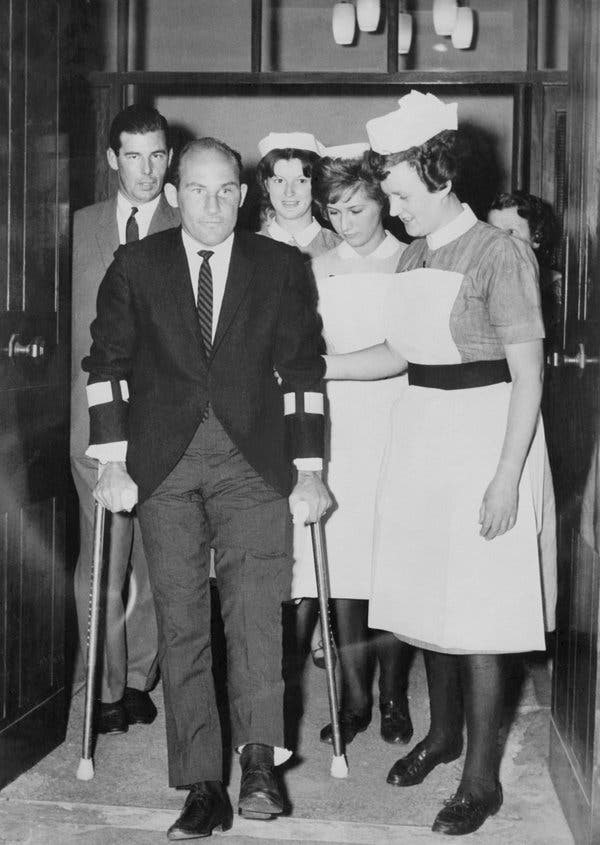
Moss leaves the hospital after being injured in a crash in 1962. Credit: Central Press/Agence France-Presse — Getty Images.
So for a couple of generations, British traffic cops sneeringly asked speeding motorists, “who do you think you are, Stirling Moss?” (Moss, who had been knighted, was once asked that question, and answered, “Sir Stirling, please.”)
Moss said a name like Bill Smith just would not have done. But what about Hamish, the old Scottish name his mother, Aileen, had proposed? His father, Alfred, deemed that ghastly. The compromise was Stirling, the name of a town near his mother’s family home.
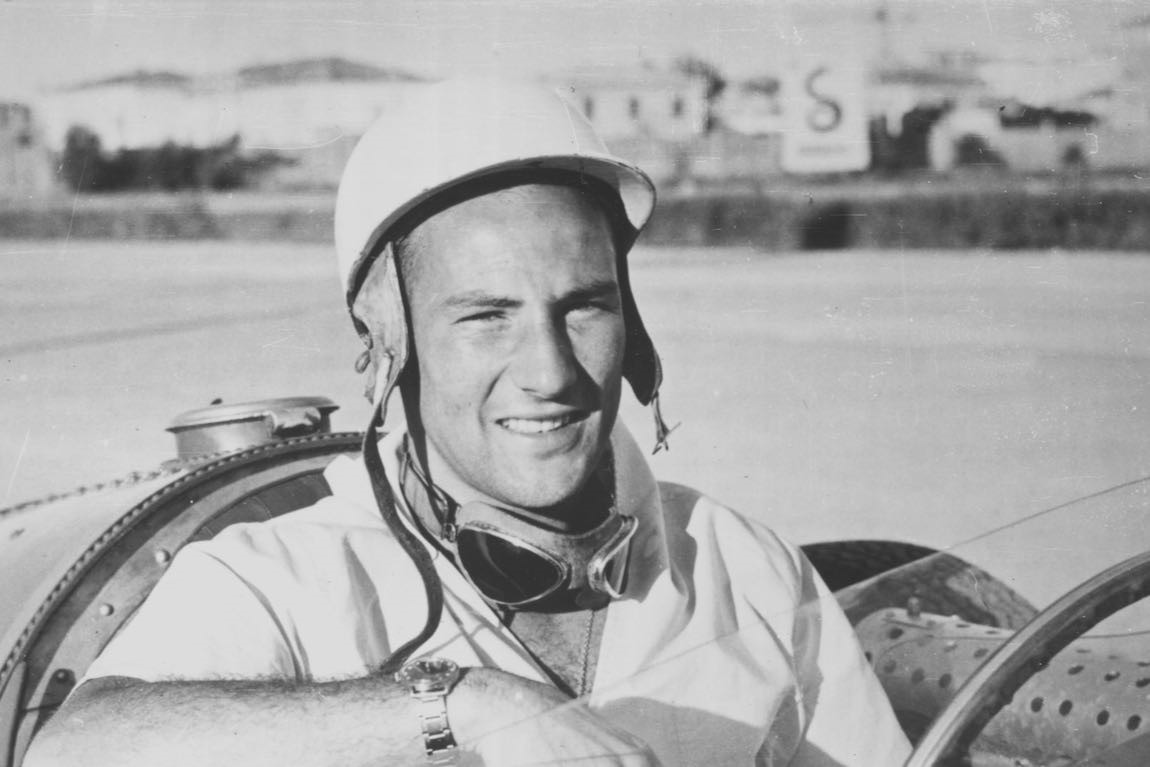
Stirling Craufurd Moss was born in London on September 17, 1929. Both his father and mother had raced cars, with his father having competed twice in the Indianapolis 500, finishing 16th in 1924, while studying dentistry in Indiana. Stirling grew up excelling at horsemanship, but said he gave it up because horses were hard to steer.
His passion was cars.
As a boy, Stirling was allowed to sit on his father’s lap and steer the family car. When he was 10 he begged for and received the present of a very old and dilapidated Austin. He made his own private racing circuit on the family farm. At 18, he got his first driver’s license and bought into a Cooper 500 racing car, winning 11 of the first 15 races he entered.
Within two years, he was racing across Europe in numerous classes of cars. In 1953, he became a full-time driver on the Grand Prix circuit, the sport’s big league. His first Grand Prix vehicle was his own Maserati, not a machine from the respected Maserati stable.
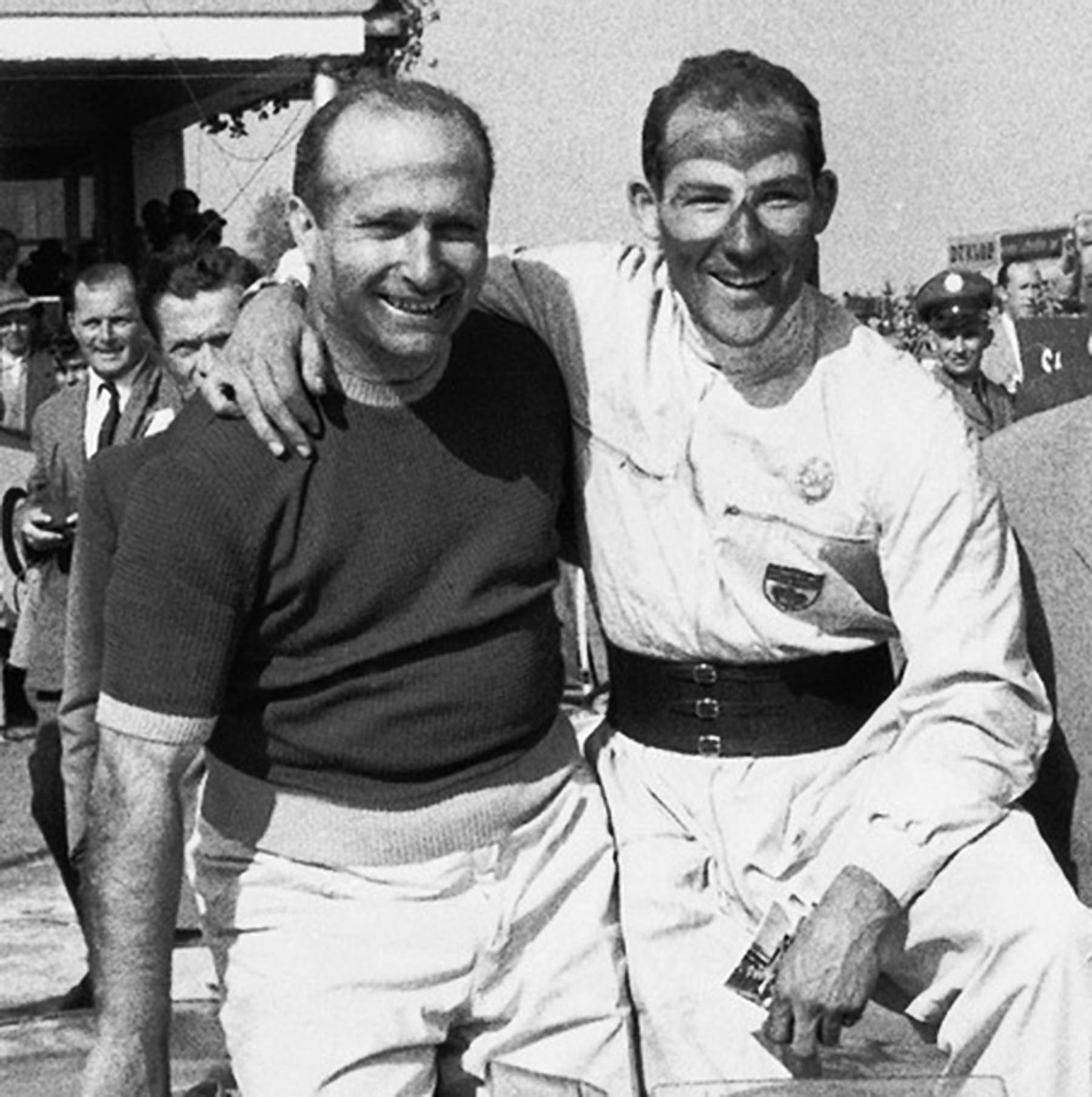
Juan Manuel Fangio and Stirling Moss, Eifel race 1955.
In 1955, he joined the Mercedes-Benz team, led by his idol, Juan Manuel Fangio.
That year, Moss became the first British driver to win the British Grand Prix, edging out Fangio by two-tenths of a second. For years, Moss asked Fangio if he had lost on purpose. Fangio kept saying no.
In 1956, Moss again drove a Maserati, followed by two years with the British Vanwall team. He won nine of 23 events. From 1959 to 1961, he drove two British makes, Cooper and Lotus and won half of the 54 events he entered in his last year of racing.
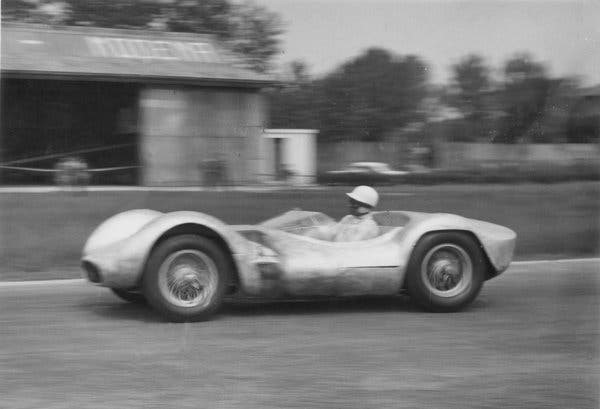
Moss test drives a 1959 Maserati Tipo 60. He retired at 33, feeling his skills had diminished after he was badly injured in a crash. Credit: Maserati.
Moss’s first two marriages ended in divorce. Besides his wife, Susie, he is survived by his son, Elliot; his daughter, Allison Bradley; and several grandchildren.
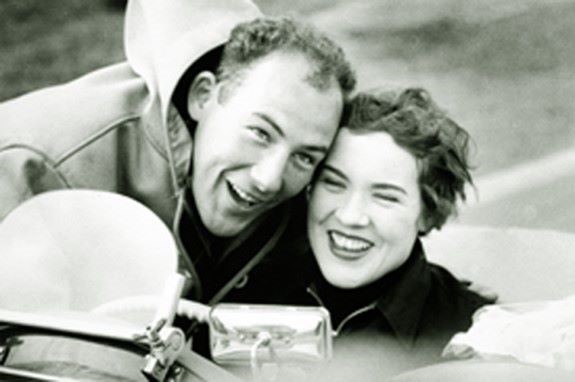
Stirling and Pat Moss.
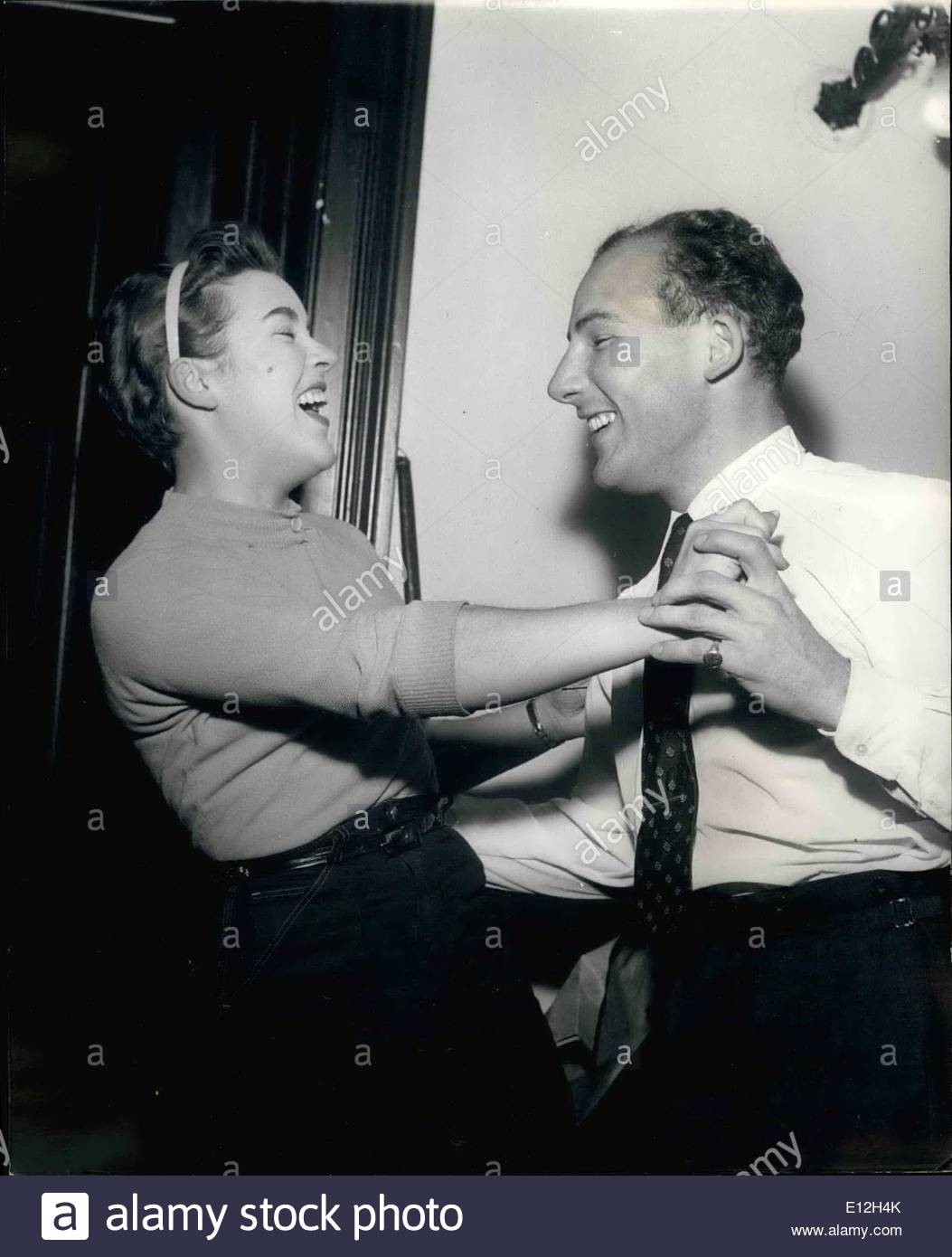
January 03, 2012. Stirling and Pat Moss are a happy brother and sister.
His sister, Pat Moss Carlsson, one of the most successful female rally drivers of all time, died in 2008.
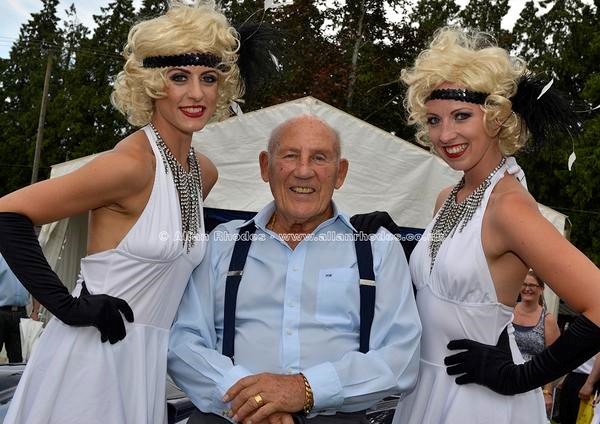
After his racing career, Moss made a tidy living selling his name and making personal appearances. “Basically, I’m an international prostitute,” he said.

He made successful real estate investments and returned to the track for vintage car meets.
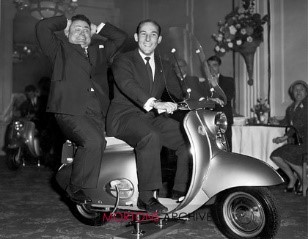
He puttered around London on a motor scooter.
Moss, the ultimate pro, once observed that there are no professionals at dying — although he had practiced. He was sure he was “a goner” after his steering column snapped at over 160 m.p.h. in a race in Monza, Italy, in 1958. As he staggered away from the wreckage, he thought, “well, if this is hell, it’s not very hot, or if it’s heaven, why is it so dusty?”
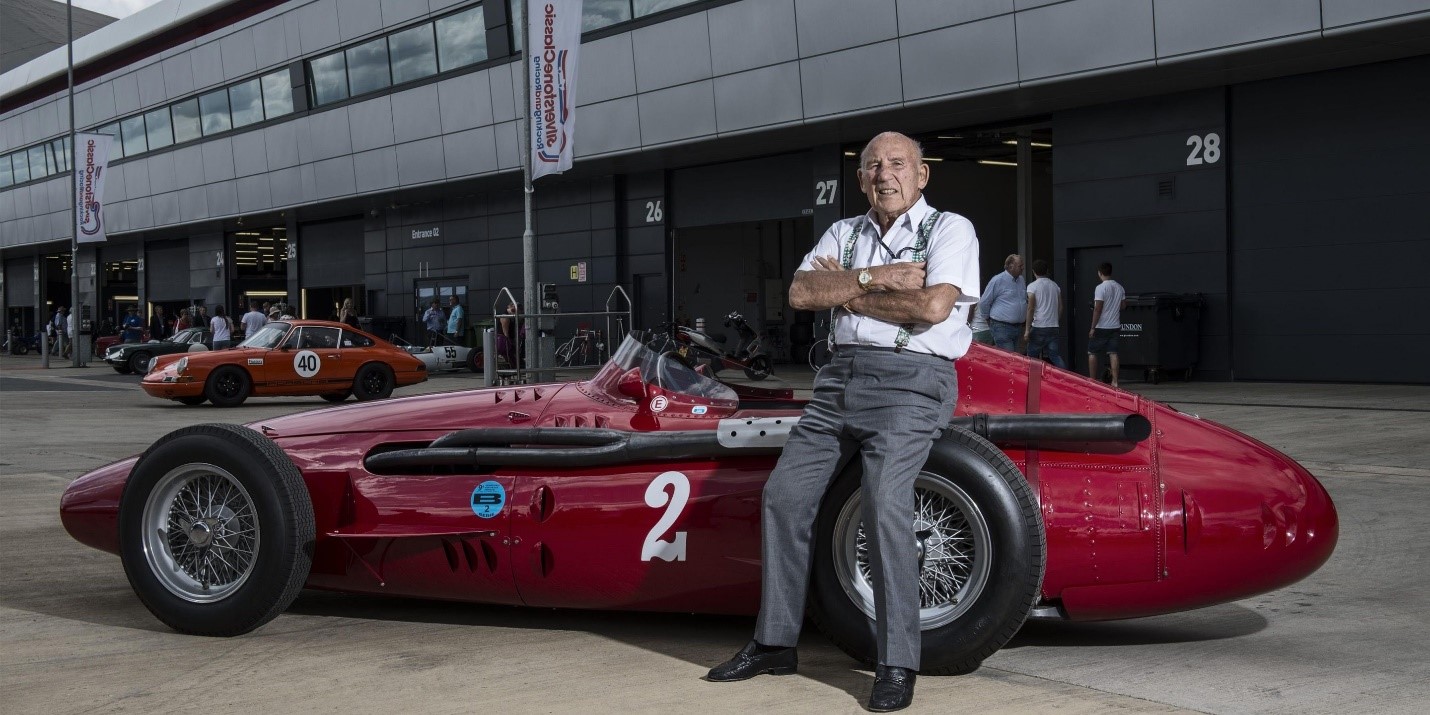
The classy act of sportsmanship which cost the late Sir Stirling Moss a Formula One world championship. By Sean Gallagher, 12th April 2020.
Despite never managing to win a World Championship, Moss was held in the very highest regard by those in motor sport for his achievements on the track, as well as his outstanding professionalism.
One striking example of that particular character trait was recalled by well-esteemed F1 journalist Maurice Hamilton when he joined Sunday Exclusive on talkSPORT to pay his respects to Moss.
Moss came agonisingly close to securing that elusive first world title in October 1958, but was pipped to the crown by the late Mike Hawthorn with just a single point separating the pair.
It was an act of sportsmanship ultimately cost the racing legend in the ninth race of that year’s championship, a decision Hamilton says Moss never regretted making.
“There’s a great story to that,” Hamilton said. “Stirling was runner-up four times in the world championship and the closest he got was 1958 and it went right down to the very last race.”
“Two races prior to that Stirling Moss was in pole position and during the last lap Hawthorn lost control and started spinning around the track.”
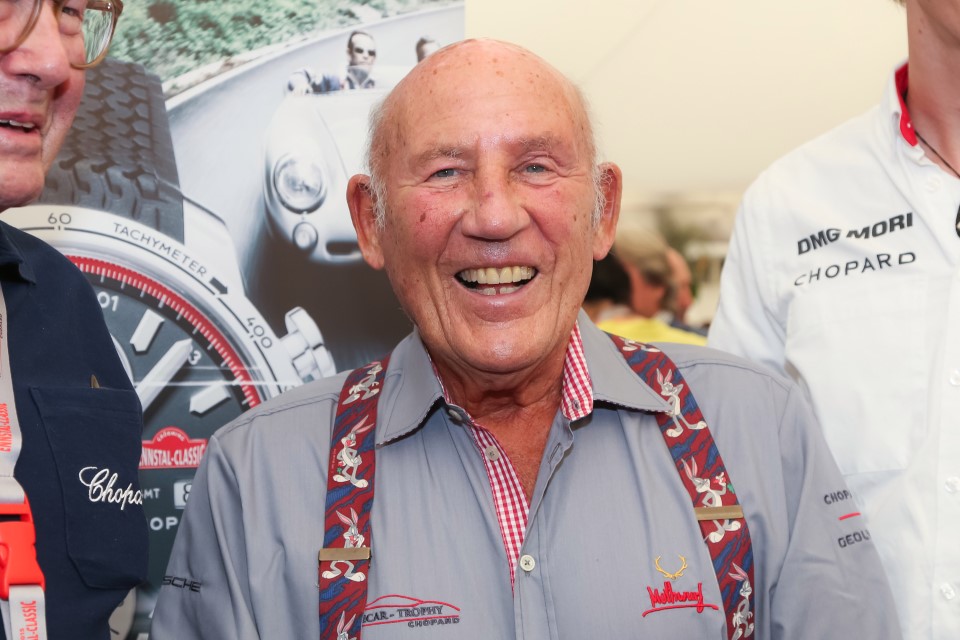
Getty Images.
“In order to regain access to the track he had to go against the traffic in the escape road, so when the officials found out this they excluded him – hence he was going to score no points.”
“But Stirling Moss, off his own back, went to the stewards and said he saw what had happened.”
“He told them Mike wasn’t actually on the track at the time and was in fact on the pavement getting a push start – therefore the move wasn’t illegal.”
“The stewards were in agreement with him, so Hawthorn retained his place in second and was awarded seven points – which ultimately decided the championship.”
He continued: “when I interviewed Stirling about this many years ago I brought that up and said, ‘did you not think at that time that doing that might cost you the championship?’
“He looked at me as if I was talking some sort of foreign language and said: ‘no boy, that never crossed my mind. The stewards were wrong to penalise him, there’s no question about it. The correct decision was made’.
“He didn’t understand the concept that a lot of people have in this world, who think about themselves before anyone else.”
“In his mind he felt it was unsportsmanlike that the stewards were penalising Mike in that way. That act pretty much summed up the type of guy Stirling Moss was.”
That heartwarming gesture became all the more poignant when Hawthorn tragically died in a car accident in January 1959.
Rest in peace, Sir Stirling Moss. A true gentleman in every sense.
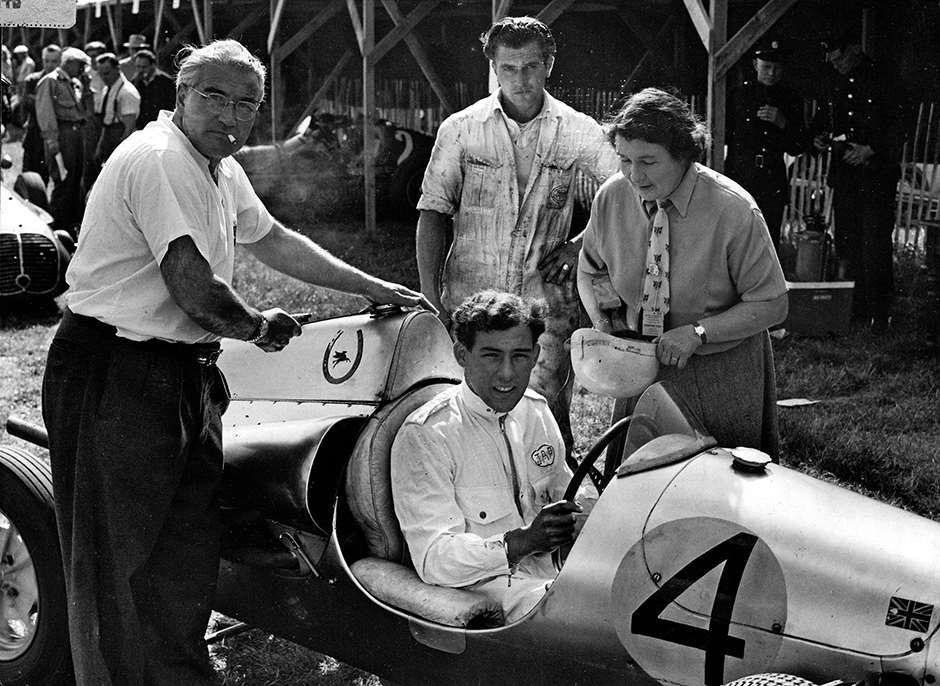
In memory of Sir Stirling Moss. Maranello, 12 April 2020.

Motorsport world pays tribute to Sir Stirling Moss, one of the greatest racing drivers of all time. Moss passed away on Easter Sunday at his Mayfair, London home.
Stirling was born into a motor sport family. His father Alfred, a wealthy dentist, was a talented amateur racer, while his mother Eileen used to compete in hillclimbs around the same time. Stirling and his sister Pat were accomplished horse riders, but the boy fell in love with cars and, at the age of 17, secretly ordered himself an MG, signing for it instead of his father, who was far from happy about it. However, realising how keen his son was to race, he decided to go along with it, allowing him to race his BMW sports car. Pat followed suit, but unlike her brother, she opted for rallying and was the most successful woman in this field until the arrival of France’s Michele Mouton.
Road to stardom. Moss came to prominence at the start of the 50s and made his Formula 1 debut in the 1951 Swiss Grand Prix at the wheel of an Alta-powered HWM. His Formula 2 results came to the attention of Enzo Ferrari who put him in one of his cars for the 1951 Bari Formula 1 Grand Prix. When Moss arrived in Puglia after an eventful journey, he discovered his car had been entrusted to Piero Taruffi instead. The 21 year old Englishman was furious and returned home vowing to never drive for the Scuderia. The teams he did drive for were Mercedes, Maserati, Vanwall, BRM, Cooper and Lotus.
Rivalry. Enzo Ferrari, who was usually a good judge of drivers, immediately spotted Moss’ abilities and wrote of him in his book “Piloti, che gente…”:
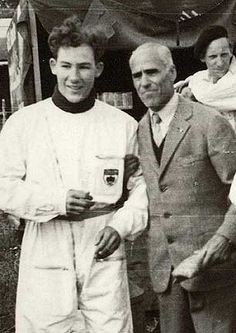
Moss and Tazio Nuvolari.
“My opinion of Moss is quite simple: this is the man I have often put in the Nuvolari class. He had a passion for speed, drove fast in any car he sat in and he had the great virtue of judging a car only by what he read on the clock, by the time it would give him on any given course. As I also once said, Moss had an uncanny ability to feel his way into a crash. And when he ran out of road, just like Nuvolari did on a number of celebrated occasions, there is an eerie similarity about the way they both came out of it unscathed. If Moss had let his head rule his heart he would have won the world title he so richly deserved.”
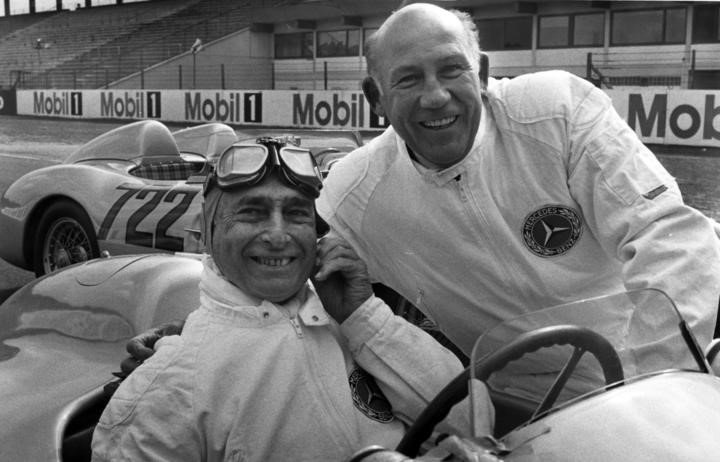
Juan Manuel Fangio and Stirling Moss.
Moss is usually known as the best driver never to have won the Formula 1 World Championship.
The final part of Moss’ career saw him race a Lotus for friend and privateer entrant Rob Walker, who was also heavily involved in sports cars. In fact, with this team, Moss drove several races in Ferraris after sporadic but winning appearances in 1957, winning the Nassau Trophy Race in the Bahamas in a Scuderia Temple Buell 290 MM and in 1958, with victory in the Cuba GP, at the wheel of a Luigi Chinetti-entered 335 Sport. In 1960, Moss piloted a 250 GT SWB to victory in the Goodwood Tourist Trophy, the Redex Trophy at Brands Hatch and the Nassau Trophy Race. More wins followed in ’61 in the British Empire Trophy, the Peco Trophy and again in Nassau and the Tourist Trophy. Wins in a Ferrari and Walker’s relationship with Enzo Ferrari led to an agreement that should have finally seen Moss drive a Ferrari Formula 1 car under the Walker team banner in 1962. That year, Moss’ sports car season got off to a great start with a win in the Bank Holiday Trophy at Brands Hatch and a class win in the Daytona 3 Hours, as usual at the wheel of the 250 GT SWB. Sadly, the world would never see Moss race a Formula 1 Ferrari as he was seriously injured in a terrible crash, at the wheel of a Lotus, during the Glover Trophy at Goodwood. It left Moss in a coma and after testing a race car in the spring of 1963, he decided to retire from racing.
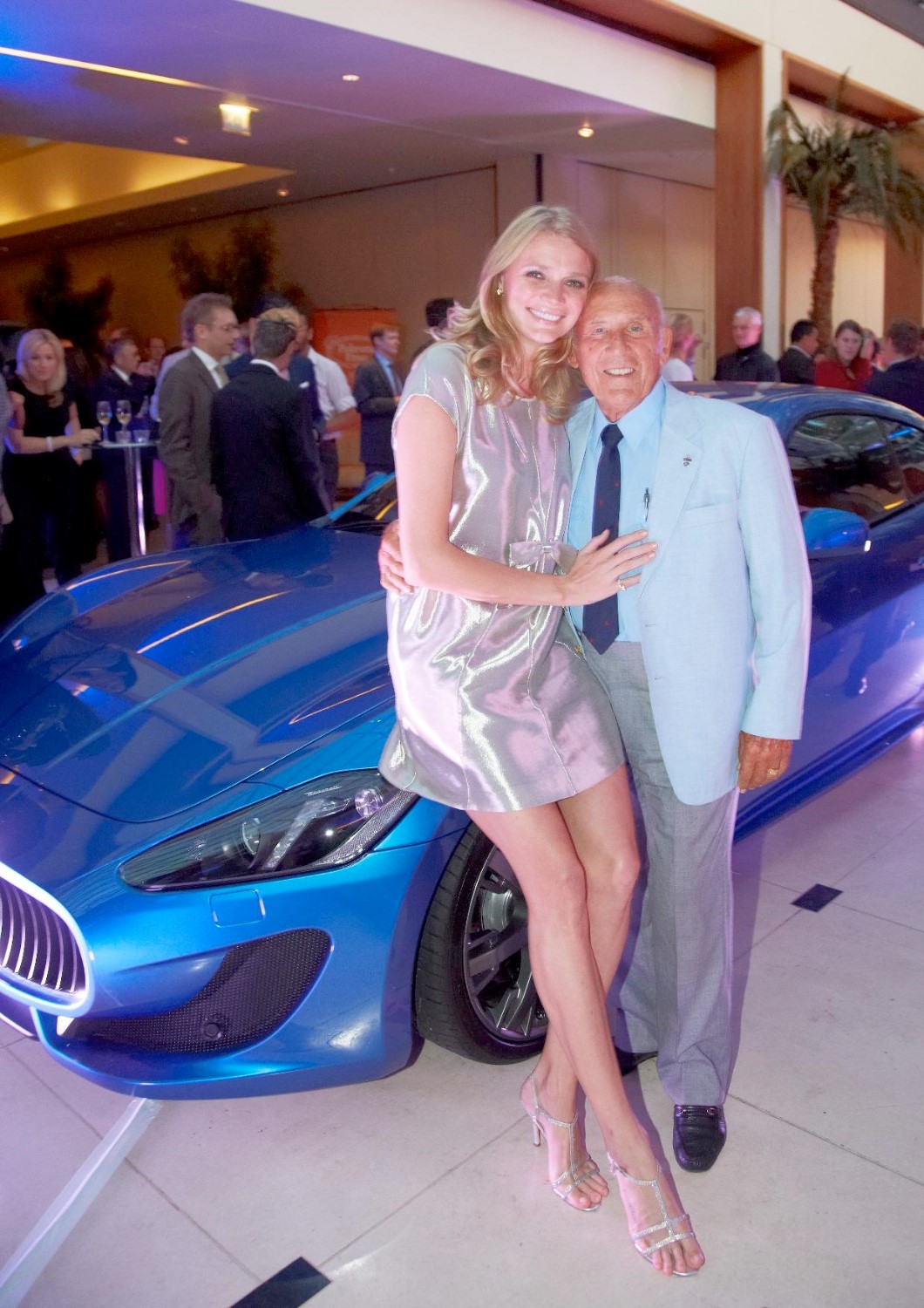
Maserati Granturismo Sport, London.
Moss was hugely popular especially in the UK, where he became a well known personality, appearing on television and in films and also commentating on races for a long while. His thirst for victory knew no bounds, to the extent that he admitted, he had a win-at-all-costs attitude.
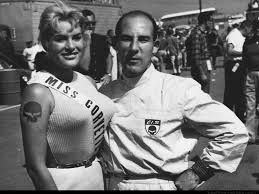
Up until 1992, he was the most successful British driver ever. In 2000, he was knighted and a few years after that, he visited Maranello were he got back in the cockpit of a 250 GT SWB, entertaining everyone with his reminiscences of his days at the wheel. With Moss’ death, the world of motor racing has lost one of its true legends.
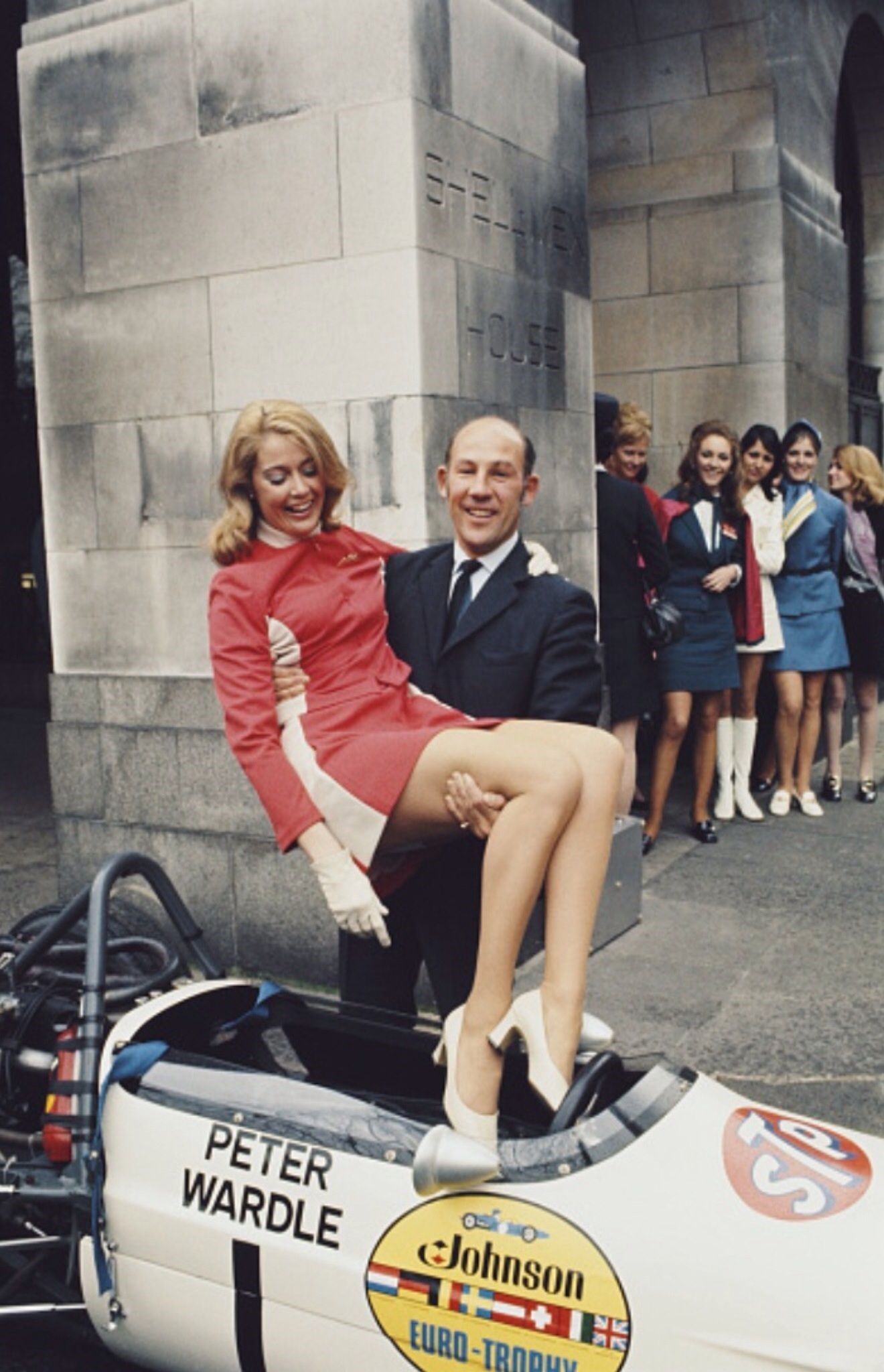
Piero Ferrari, Vice President of Ferrari, commented: “Stirling Moss symbolised motor sport. He was a true personality who left an indelible impression on the history of racing. His versatility meant he was able to win in so many different categories, from Formula 1 to sports car endurance races. He also produced incredible performances in road races such as the Mille Miglia, setting a record that was never beaten. Despite not winning the Formula 1 World Championship, he is most definitely a legendary figure and he was a fearsome and formidable rival of Ferrari in Formula 1 and many other categories. His and Ferrari’s paths were about to merge when he had the accident at Goodwood in April 1962 that effectively ended his racing career, at least at a high level. At the time, in Maranello we were preparing a 250 SWB for him in British Racing Green, along with a contract to drive for us, but fate decreed otherwise. My father said that Stirling reminded him of Tazio Nuvolari, because of his love of racing in any type of car, something which stayed with him right to the very end of his career.”
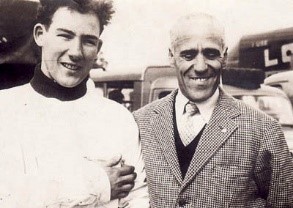
Stirling Moss and Tazio Nuvolari.
"Keep an eye on that fellow Stirling Moss. He'll be one of the greats." Tazio Nuvolari
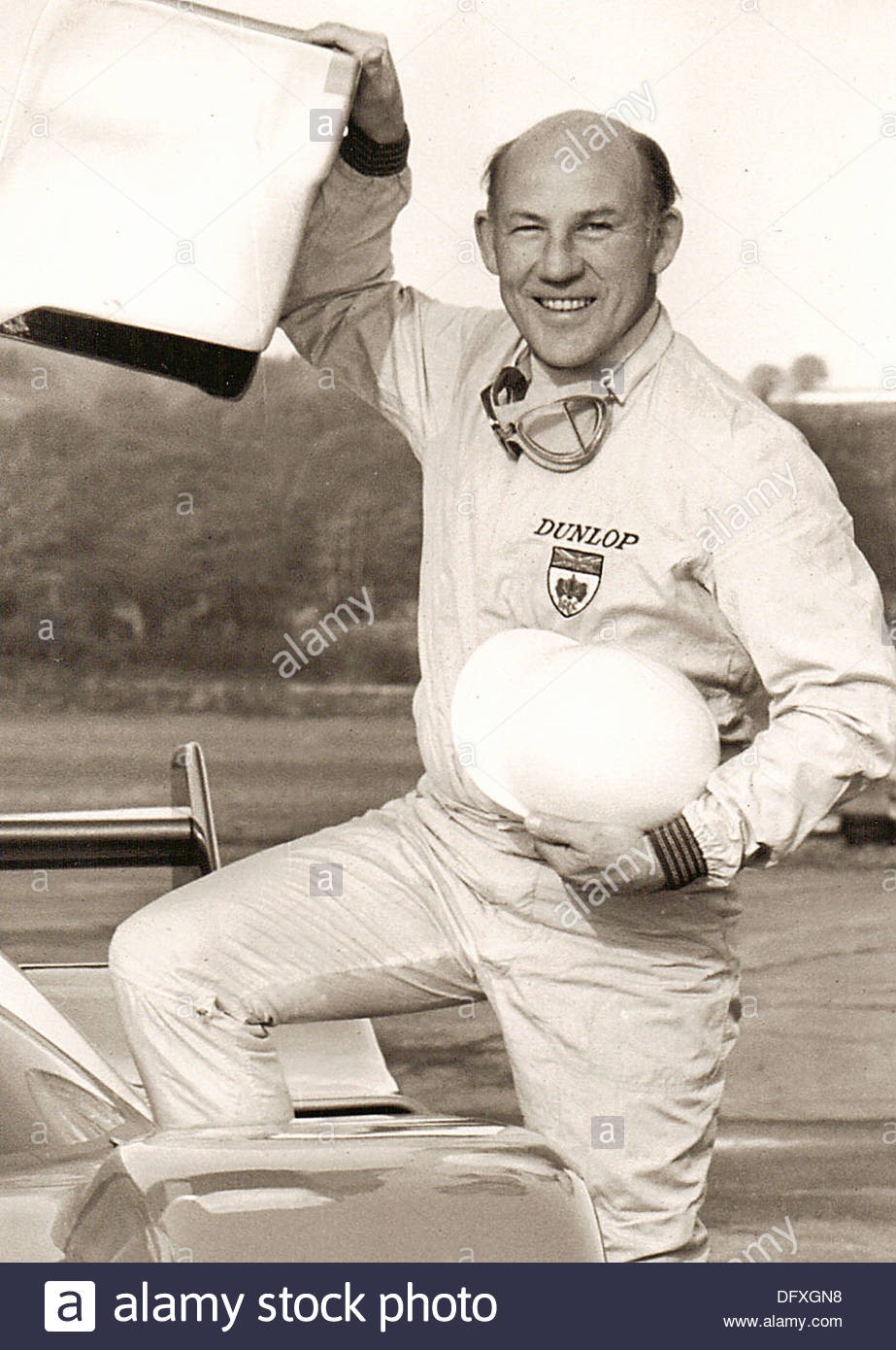
F1 in mourning: Stirling Moss, the latest motoring legend, is dead. By Vincenzo Borgomeo, 12.04.2020.
Thus, with that smile and that contagious joy, the legend of motoring leaves us. Until the end he was present on the tracks, at historical re-enactments, often driving - despite his age - the racing cars he had dominated when he was young.
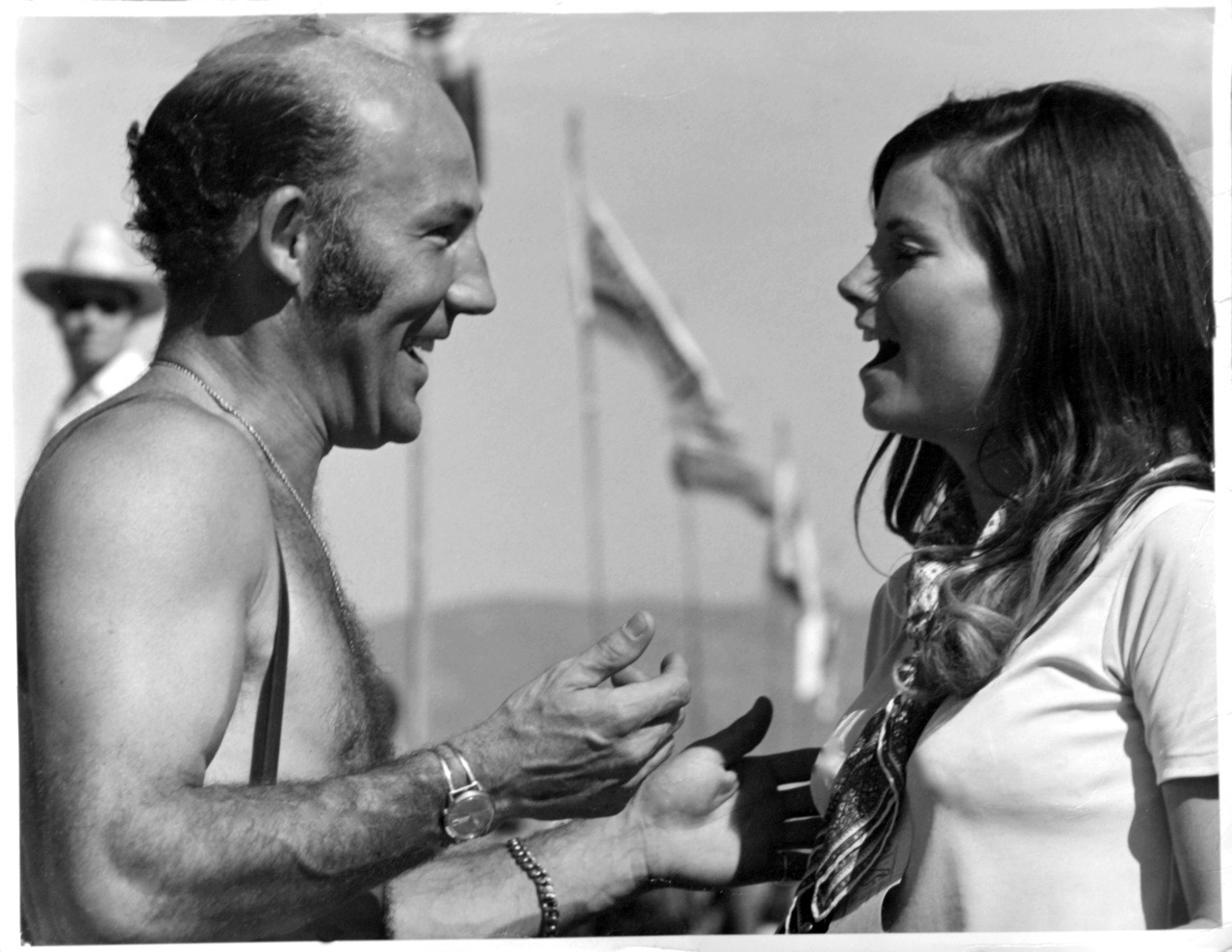
Moss had a very long career: he retired from any competition in 2011, only when he was 81 years old ... The last race, with a deadly 1961 Porsche RS61 (the nickname, "the widows factory", said much) at Le Mans, shortly after racing his 1,500cc Osca at historic events. Sure, classic car racing, but always racing.
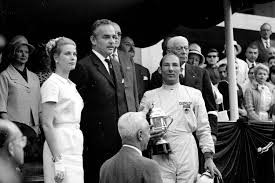
Many are the unforgettable races. Among all of them, certainly, the Monaco Grand Prix in 1961 but, above all, the victory at the Mille Miglia in 1955, where he set the speed record never again broken with the Mercedes SLR, at a crazy average of 157,650 km/h, covering 1600 km in 10 hours, 7 minutes and 48 seconds. Making the last 133 km, from Cremona to Brescia, at the average of 264 km/h!
With someone like this, winning a F1 world championship becomes a detail...
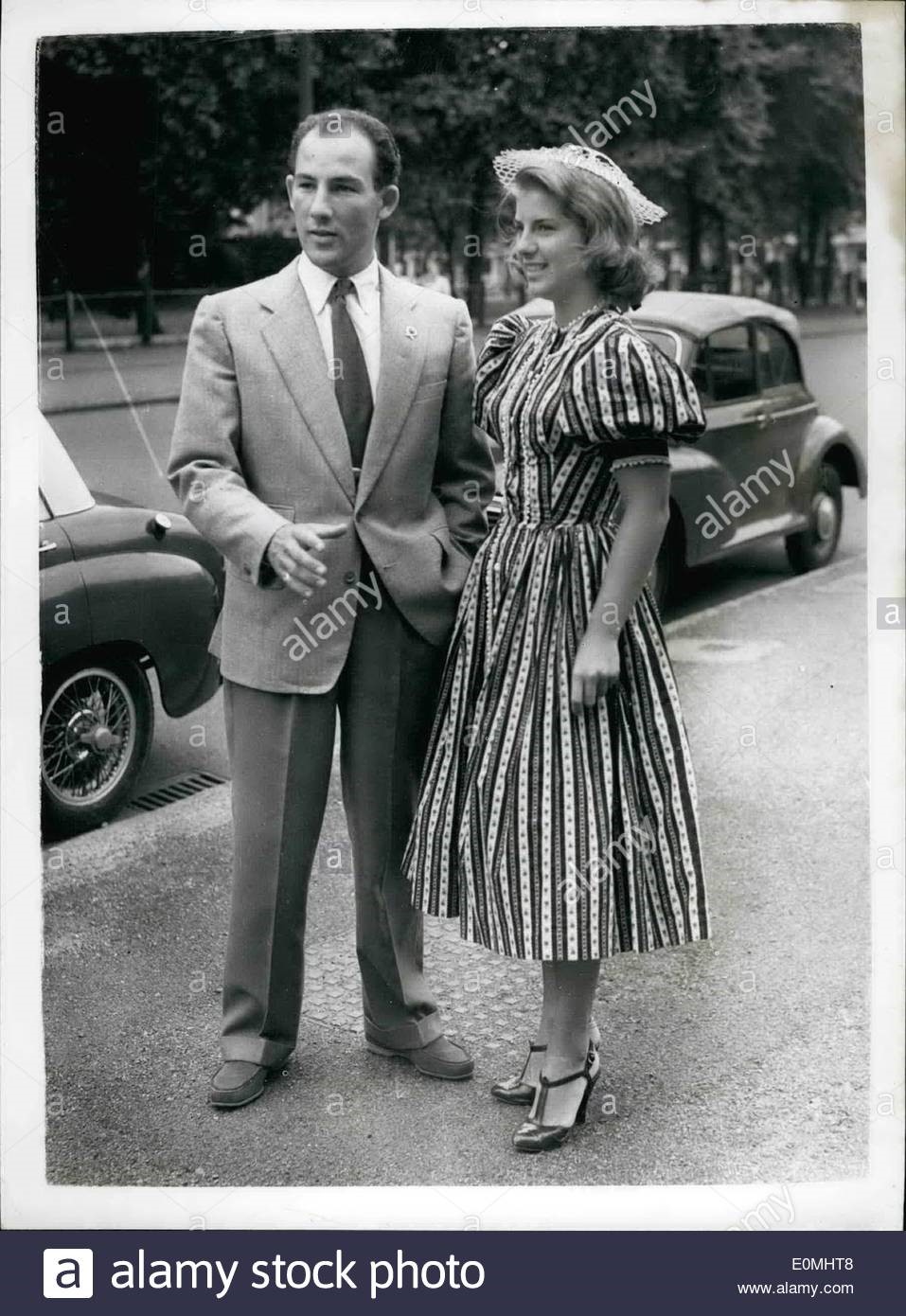
August 08, 1955. Claudia Hall leaves hospital after crash in Stirling Moss’s car. 20-year old American TV and film actress, Claudia Hall, who arrived from New York yesterday and her two-year old daughter, Sherrey Lynn, were with racing driver Stirling Moss, when he drove off to Smetterkton, near Norwich, to start practising for Saturday's motor race meeting. Early today, after she and Stirling Moss had been dining at the Colony Club, he was driving her back to her hotel in his new Mercedes car, when the car was in collision with another car in Kensington.
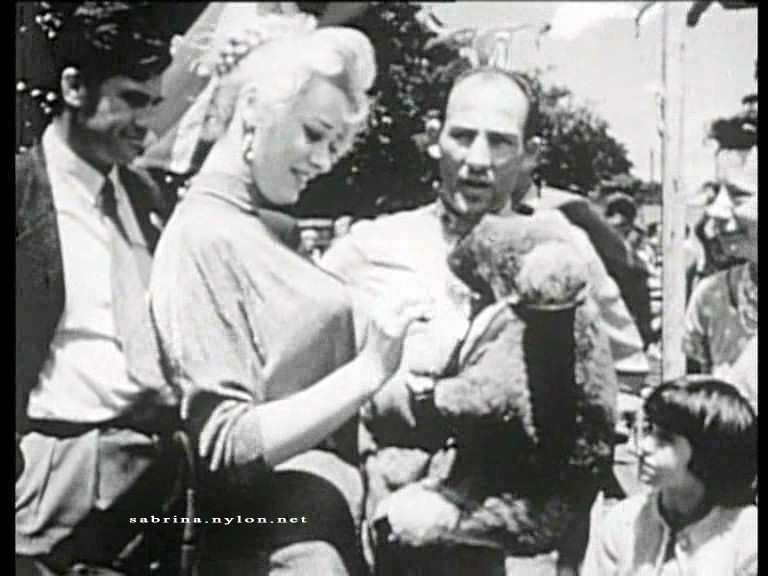
Grand Prix 1958. Sabrina and Stirling Moss.
Among other things, it must be said that Moss could have been the first British world champion in 1958 instead of Mike Hawthorn: he lost the title by only one point that year, after asking the race officials to remove a penalty given to his disqualified compatriot at the Portuguese Grand Prix. "Obviously they gave him back his points and that cost me the title," explained Moss chivalrously. And he never had any regrets: "I am in the exclusive position of the people who say they should have won and they never did," he later said.
That explains the legend. But there is more: in his heyday, Moss participated in something like 54 races a year around the world, as well as an endless series of tests. We can therefore say that one of the most incredible feats of Stirling is that of having survived up to 90 years, given that at the time many drivers died, about twenty a year only in the highest categories.
And still today, in the living room he has two folded steering wheels hung on the wall, as important memories: one labeled "Spa 1960" and the other "Goodwood 1962"...
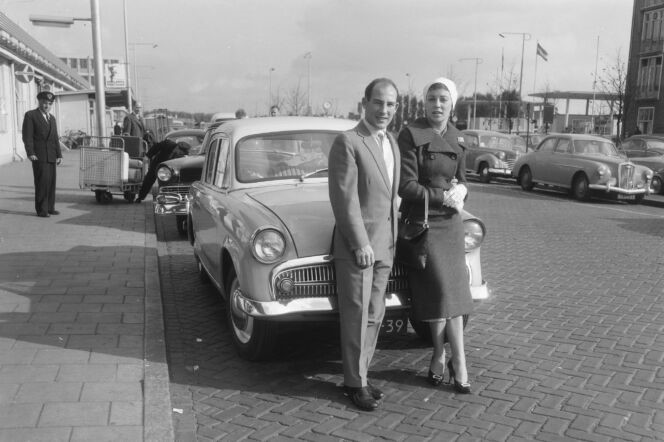
But he always took it with glee when it was pointed out to him: "all I had to do was get there, practice with the car, just race. Then I could go chasing girls or do whatever I wanted to do ... it was just a fabulous life".
The ordeal began in Singapore at the end of 2016, when he fell victim to an infection that forced him to 134 days in hospital: but then he survived. As he also did in 2010, after he fell into a well as deep as three floors of a building in his London home. He broke both his ankles and four bones in his feet. But in the end he still made it.
Now the car world is crying out for a legend. He had become the very synonym - and still is today - of speed. Even today in England - and around the world, they say "who do you think you are, Stirling Moss"? when someone drives a car too fast. And that was the very question - the driver revealed - that a policeman really asked him when he stopped him in London. "But I couldn't understand if he was joking with me or if he really recognized me...".
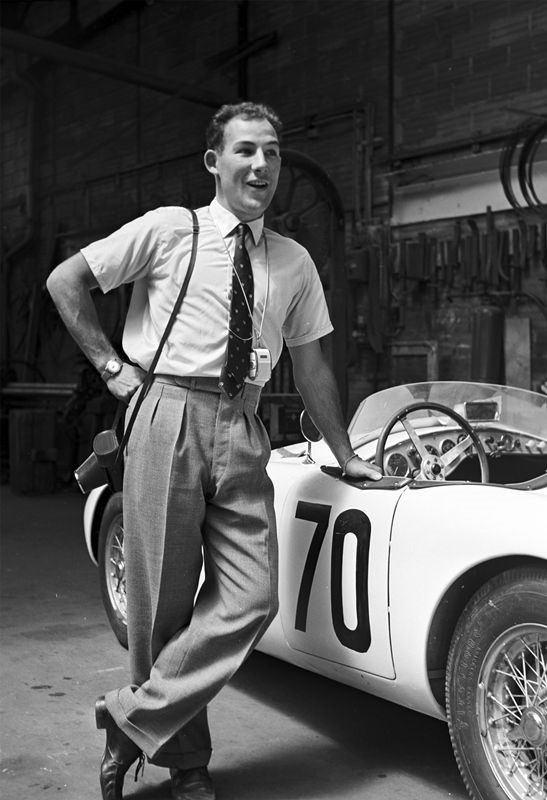
Sir Stirling Moss: a life in quotes. Srikanth Ramamurthy. April 12, 2020.
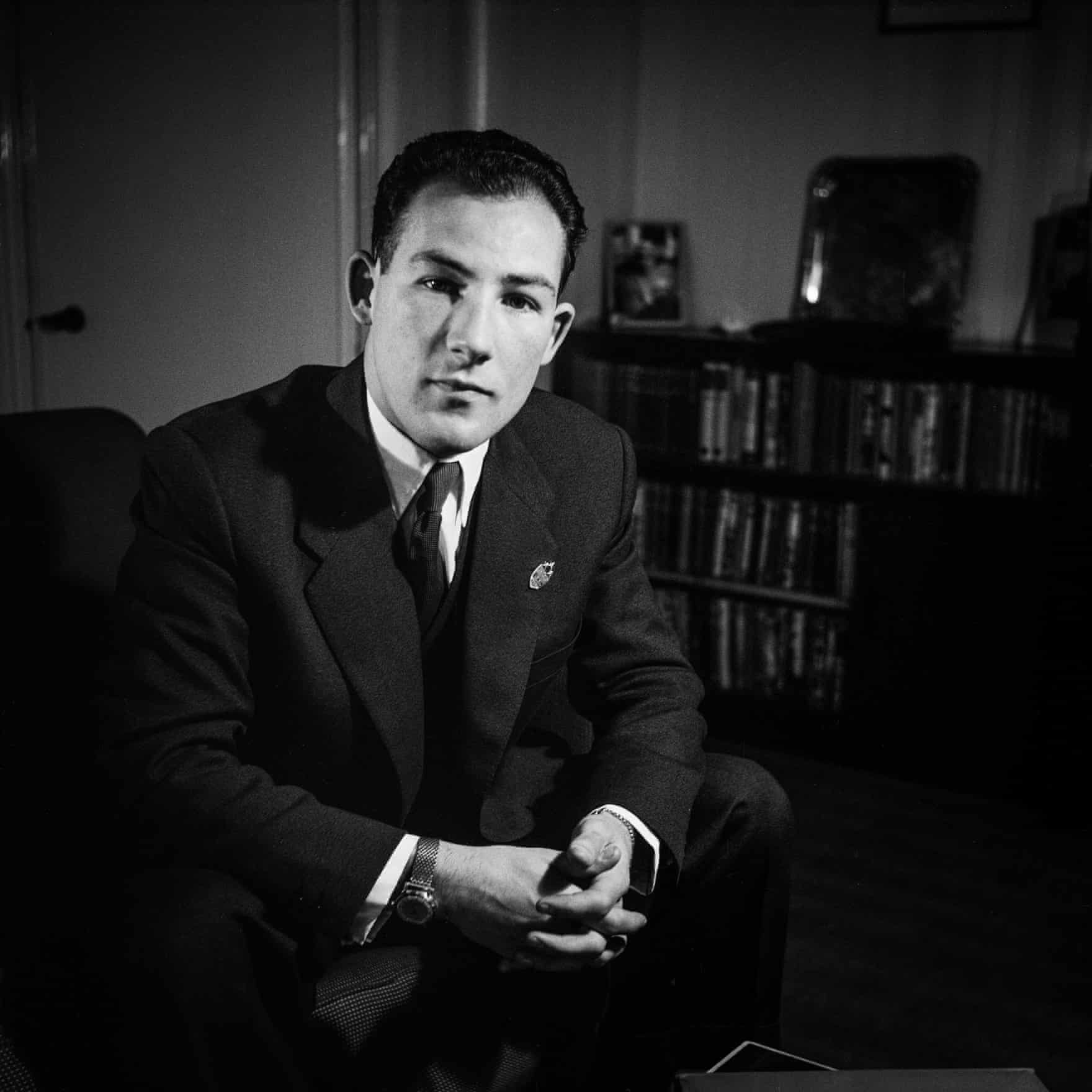
Sir Stirling Moss.
Stirling Moss grew up by the Thames to parents who both participated in motorsport in one form or another. Naturally, it didn’t take long for Stirling’s desire to race to be kindled. Despite his father’s wishes that young Stirling would choose a path that would lead him to dentistry, Stirling was able to convince his old man to let him spend his winnings from horse racing on a 500cc Cooper which he could race in the British F3.
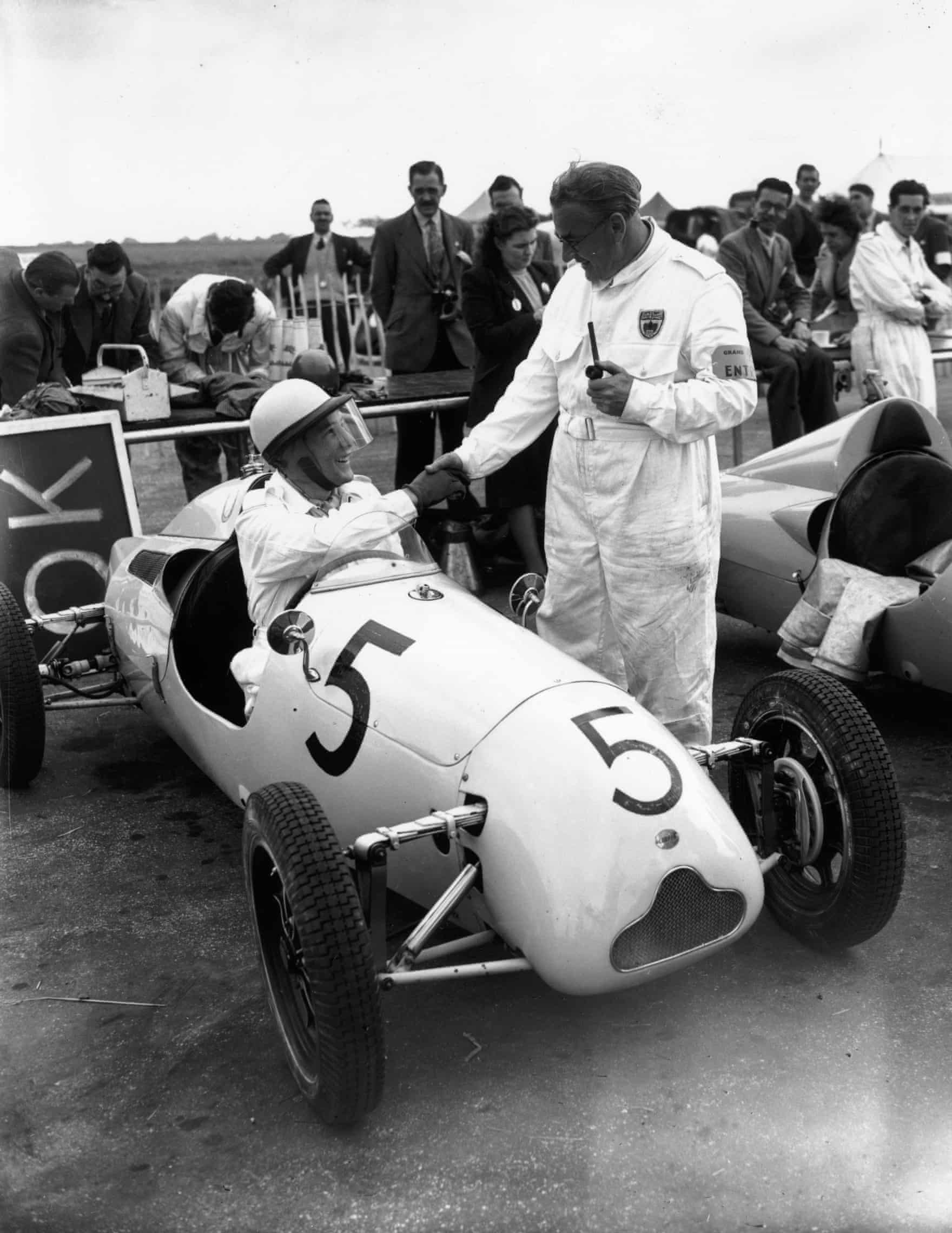
Stirling Moss greeting his father in the 500cc Cooper-JAP 500 MKII at Silverstone. Image courtesy of Burkett/Keystone/Getty Images.
Stirling made his racing debut in the British F3 as a 19-year-old in 1948. It must be noted that although a 19 isn’t exactly a young age to start driving the F3 by today’s standards, it was an extremely young age back in 1948. To put it into perspective, Stirling’s most fierce rival, Juan Manuel Fangio only began racing at 25 years of age, after serving time in the Argentinian military.
Motor racing was very much a gentlemanly sport back then and Sir Stirling was well known throughout the paddock as the gentleman.
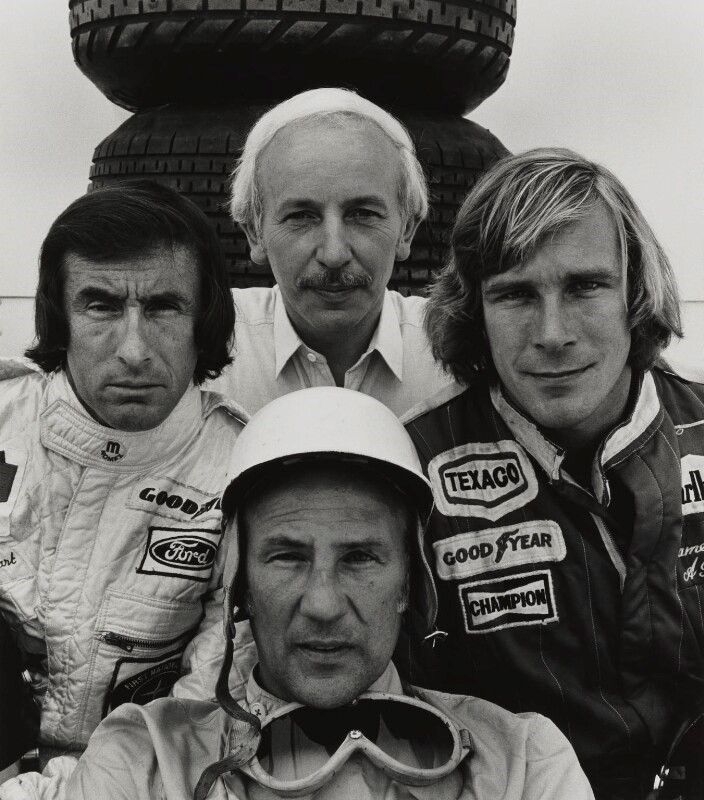
Stirling Moss with Jackie Stewart and James Hunt.
Jackie Stewart probably put it best when he said the following: “he walked like a racing driver should walk, he talked like a racing driver, he looked like a racing driver and he set a standard that I think has been unmatched.”
Despite his exploits in formula cars, Sir Stirling first tasted victory in racing in a sports car at the 1950 RAC Tourist Trophy behind the wheel of a borrowed Jag. He continued competing at a high level in touring car racing, rallying and endurance racing. Inevitably, he was noticed by the Formula 1 teams and, although the Mercedes-Benz team couldn’t sign him right away, the Merc team boss advised him to spring for the faster, more agile Maserati.
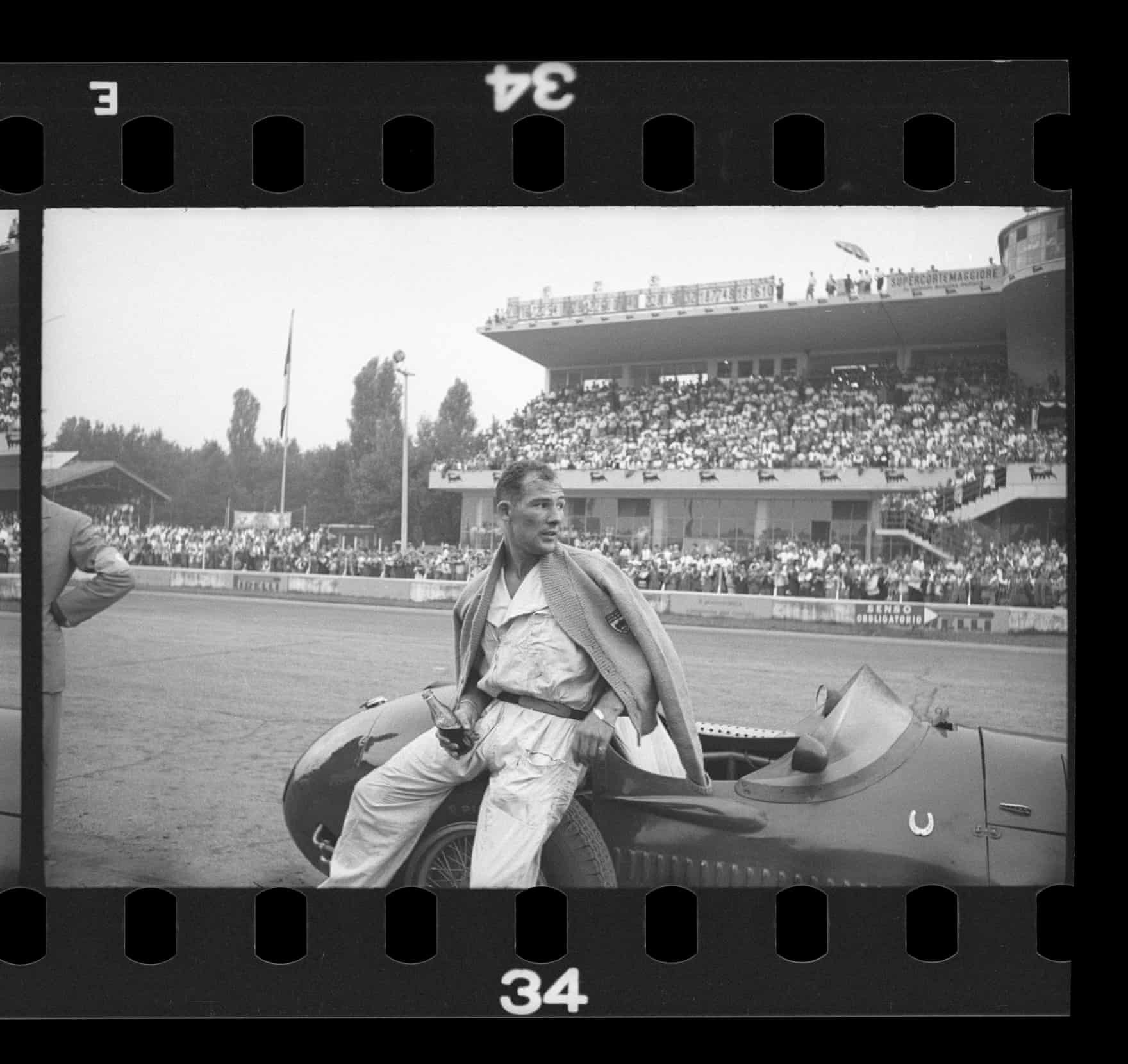
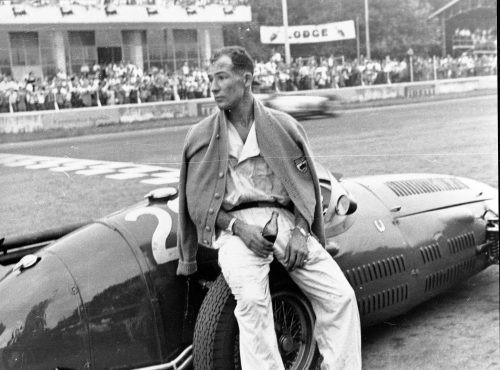
Moss drinks cola in the pits, after pushing his car past the finish line at the 1954 Italian Grand Prix. Image courtesy of David Lees/Picture Post/Hulton Archive/Getty Images.
Despite issues with reliability, the Maserati thrust Stirling Moss into the forefront of the sport at the 1954 Italian Grand Prix, where he overtook both Juan Manuel Fangio and Alberto Ascari, two of the most revered drivers in F1 history. He led the race until the 68th lap when his engine gave up, but that didn’t deter Stirling. He literally pushed his car past the finish line to take 10th place. By now, Mercedes had seen enough. They knew they wanted Stirling in their car.
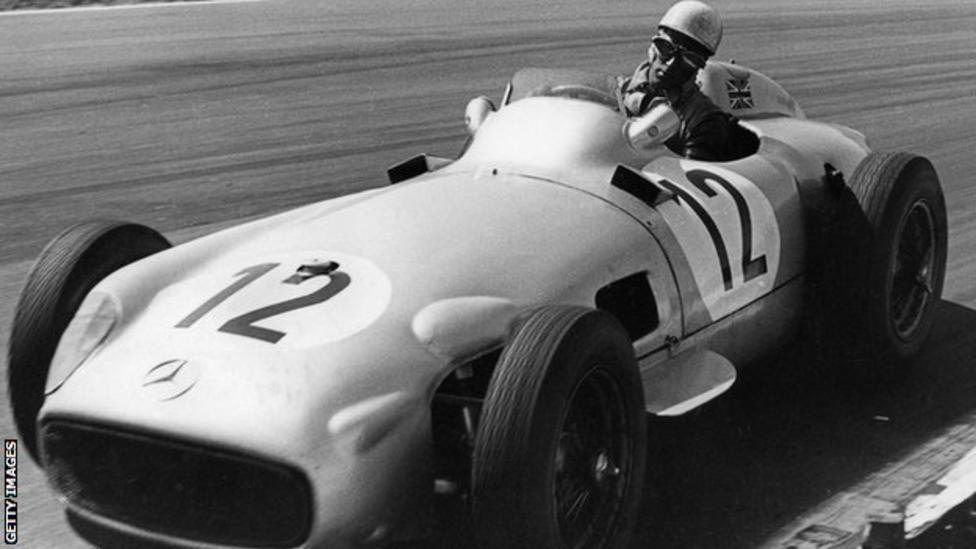
Moss takes victory in front of his adoring home fans at the 1955 British GP. Image courtesy of BBC News.
Fangio and Moss would become the biggest stars for Mercedes-Benz. Despite being teammates, the rivalry between the pair would result in truly memorable races. Perhaps none more memorable than the 1955 British Grand Prix when Fangio famously let Moss by so he could take victory in front of his home fans. Although, Fangio would never admit it to Moss.
This era of his career was perhaps summed up best by Sir Stirling himself. He proclaimed, ‘the best classroom of all times was about two car lengths behind Juan Manuel Fangio’.
Moss and Fangio would continue to be both bitter rivals and close friends until Fangio’s retirement in 1958.
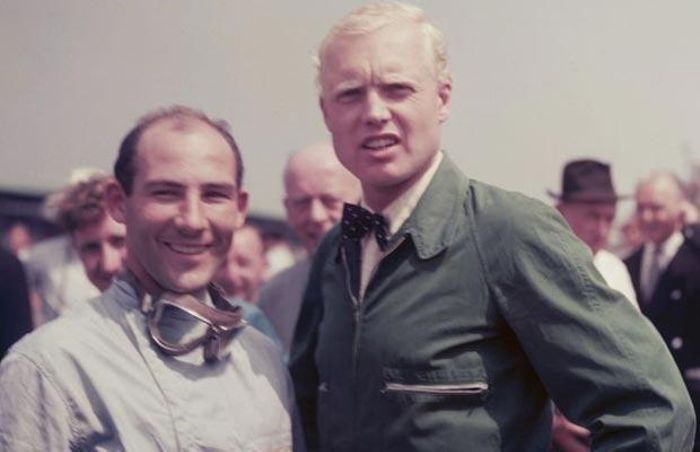
Stirling Moss and Mike Hawthorn were in a tight battle for the 1958 F1 Drivers’ Championship. Image found on carthrottle.com.
Yes, the record books will remember Sir Stirling Moss as the best F1 driver to have never won a World Drivers’ Championship, but as you can tell, that doesn’t even come close to telling the full story. Consider this: Sir Stirling won 24.24% off all the Grands Prix he took part in. His win percentage is higher than many of today’s world champions, who had many more races per season than Stirling ever did. For example, Jack Brabham and Nelson Piquet, who were both triple world champions had a win rate of about 11.3%. Double world champions Fernando Alonso and Mika Hakkinen had a win percentage of 10.2% and 12.4% respectively.
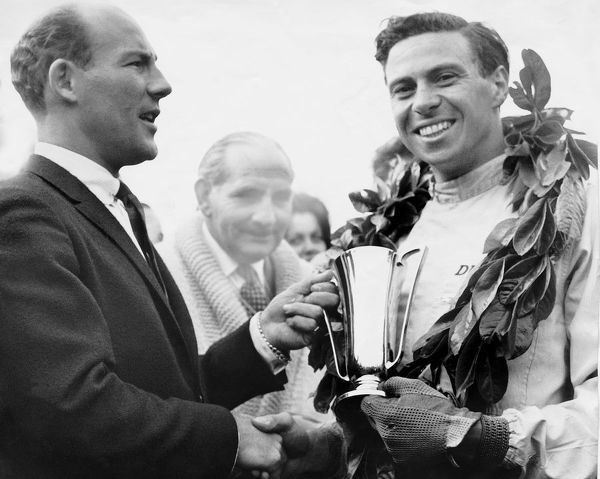
Jim Clark accepts trophy by Stirling Moss in 1962.
Surely, it is unfortunate that Sir Stirling Moss had the terrible misfortune of being in F1 during the twilight of Fangio’s career and the dawn of Jim Clark’s. However, his achievements in F1 can never be summed by the number of world titles alone. The world should remember him for the fact that he redefined what was possible in motorsport. He embodied the grit and determination it took to drive the cigar-shaped high-speed death traps that competed in F1 back then, but he did so without losing even a bit of his well-mannered nature. The man puts it best himself, “I believe that if a man wanted to walk on water and was prepared to give up everything in life, he could do it.”
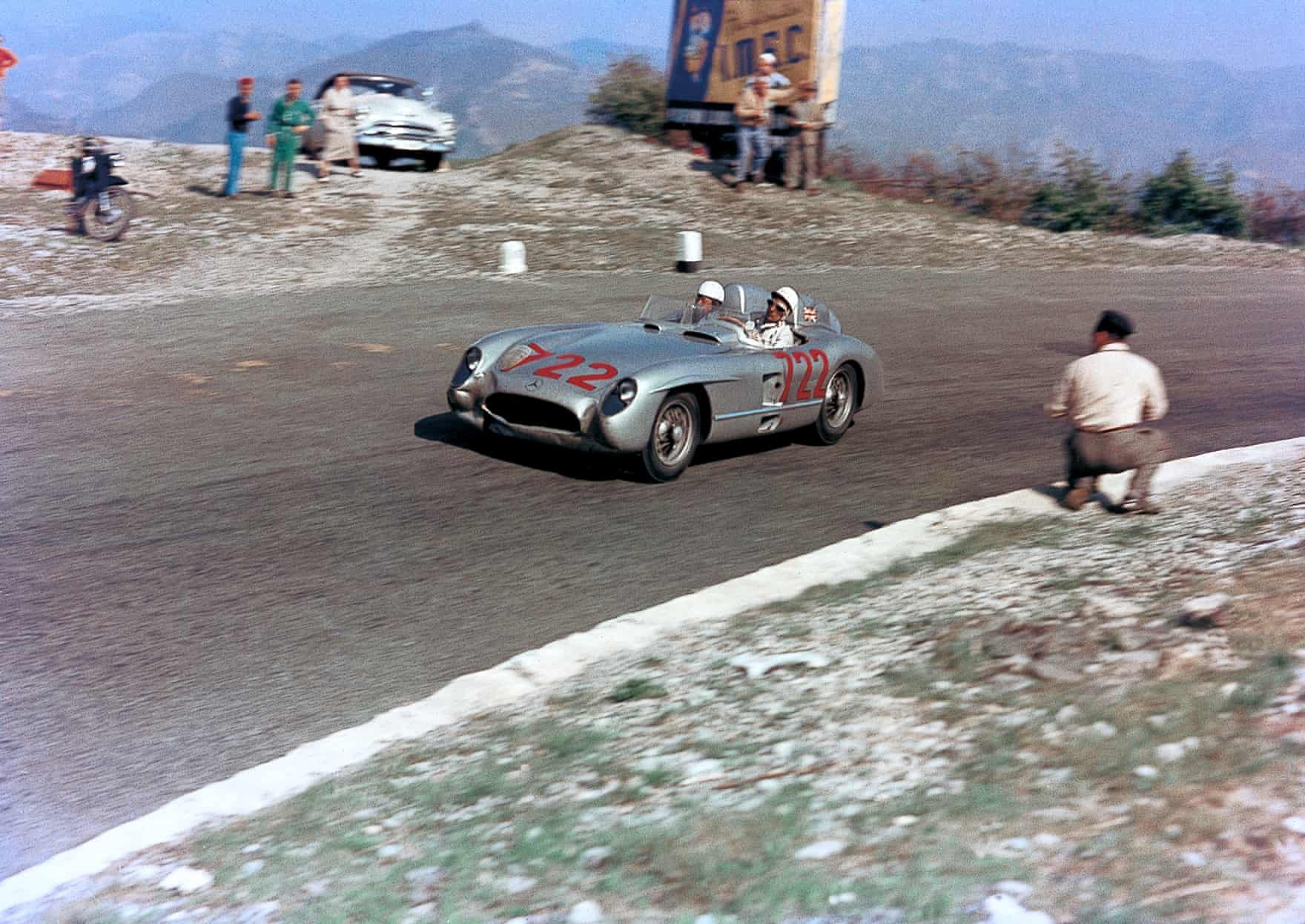
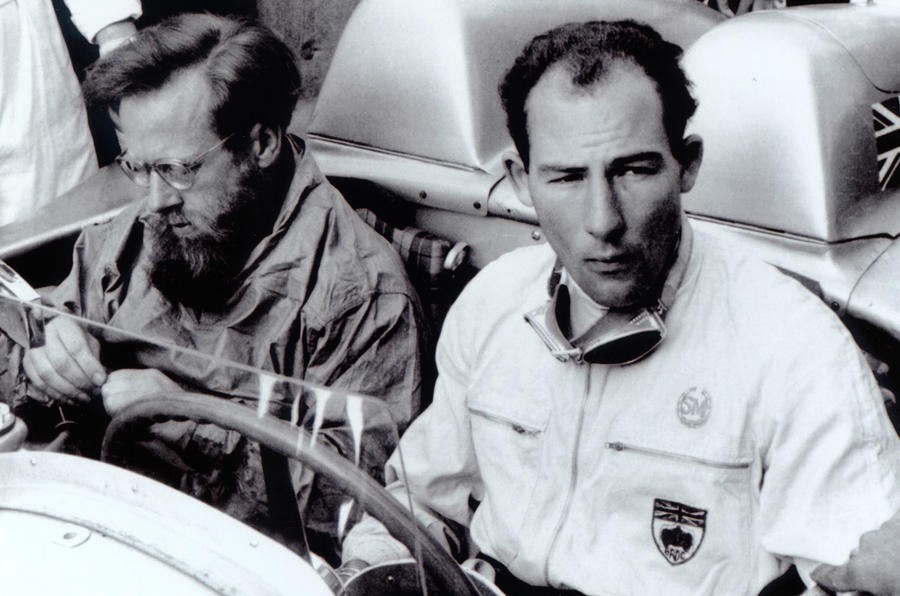
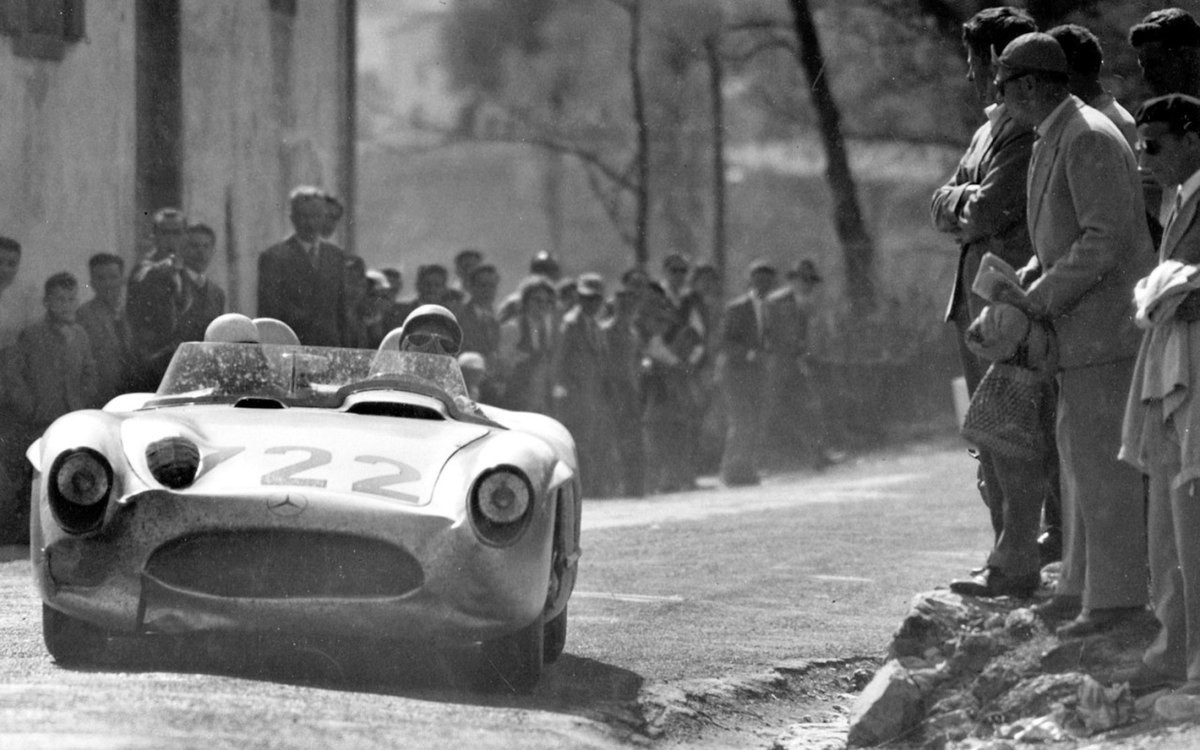
Moss and Jenkinson’s victory at the Mille Miglia will go down as one of Stirling Moss’ biggest achievements. Images courtesy of Debraine/Klemantaski Collection/Getty Images and Wikipedia.
Stirling’s performances in F1 will forever be remembered by the motorsport fraternity, but the most daring and impressive victory of his career has to be the 1955 Mille Miglia: a 993-mile endurance race across Italy that Sir Stirling and his co-driver Denis Jenkinson won with an average speed of 98 mph. He finished the race a whole half an hour faster than Fangio, who was second. To give you an idea of the magnitude of the achievement, we must refer you to the Autocar report after the race which stated, “imagine having an early breakfast and leaving London by car at about 7.15am, reaching Aberdeen by lunchtime and getting back to London in time for a latish tea — with only two stops. That, on roads that are admittedly better than British roads, parallels the achievement of Stirling Moss.”
Nobody really needed any confirmation, but the Mille Miglia victory set the degree of Sir Stirling Moss’ driving genius in stone.
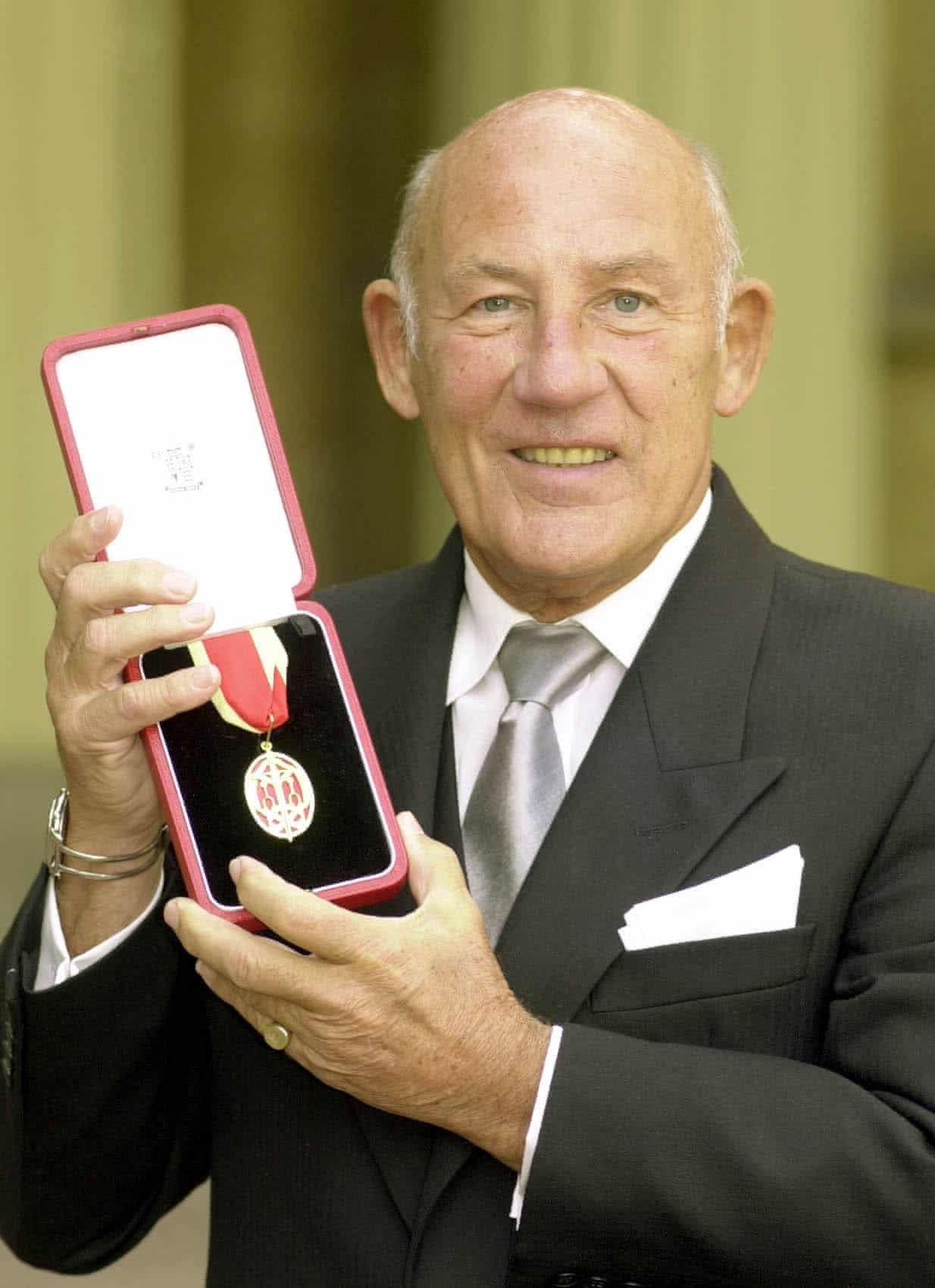
Sir Stirling Moss remained the most decorated British driver in Formula 1 for 29 years, until Nigel Mansell overtook him on the charts. Aside from his 16 wins in F1, he had won the 12 hours of Sebring, come 2nd twice at the 24 Hours of Le Mans and, of course, won the legendary Mille Miglia in 1955. Although, he did so while competing in a modern racing calendar that had many more races, mind you. He was knighted in the year 2000, becoming the fifth motorsport personality to receive the honour.
Perhaps the most fitting tribute to his career in motorsport is the Mercedes-Benz SLR Stirling Moss, a car inspired by the legendary 300 SLR that Stirling drove in the Mille Miglia. Just like the car it was inspired by, it has a long bonnet and a sum total of zero windshields.
Although he lived to be 90, it almost seems like Stirling Moss went too quickly, but his memory will forever remain — stitched into the sky above every race track in the world.
‘It was my biggest regret’ – ESPN F1 Editor Laurence Edmondson explains why Stirling Moss never drove for Ferrari in Formula 1: in 1951, at the age of 20, Stirling Moss embarked on one of the most pivotal journeys of his career. 13 April 2020.
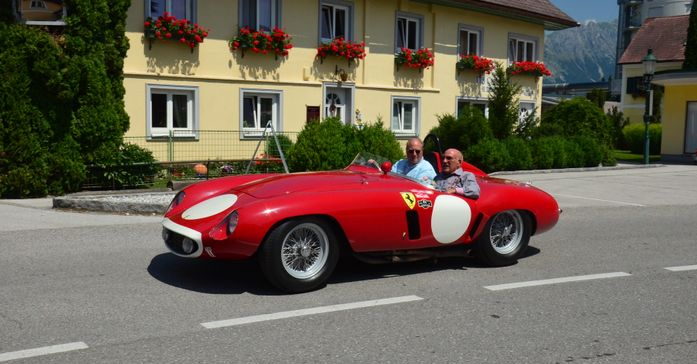
Images courtesy of Popperfoto/Getty Images and John Stillwell/PA respectively.
After considerable success in junior categories, he was invited to Bari by Enzo Ferrari to race in a handful of events to assess his ability. However, the trip did not go to plan and the outcome shaped the rest of his Formula One career – right up until the moment it ended with a huge head-on impact at Goodwood over 10 years later.
“When you’re 20 years old and you’re asked to go to meet Ferrari you just cross yourself and face Modena. It’s a big deal,” Moss told ESPN several years ago. “Ferrari called me down to southern Italy to drive the new four-cylinder that had been designed for use in Formula Two.
“I went down there and found the car in a garage. I got in and an engineer came over to me and said: ‘what are you doing?’ I said: ‘I’m Stirling Moss and I’m driving this,’ to which he quickly replied: ‘no you’re not, Piero Taruffi is’.
“That really pissed me off. Taruffi was a nice guy and a good driver, but Enzo Ferrari had simply changed his mind without telling me. At that point I vowed to myself that I would never race for him and I never did.”
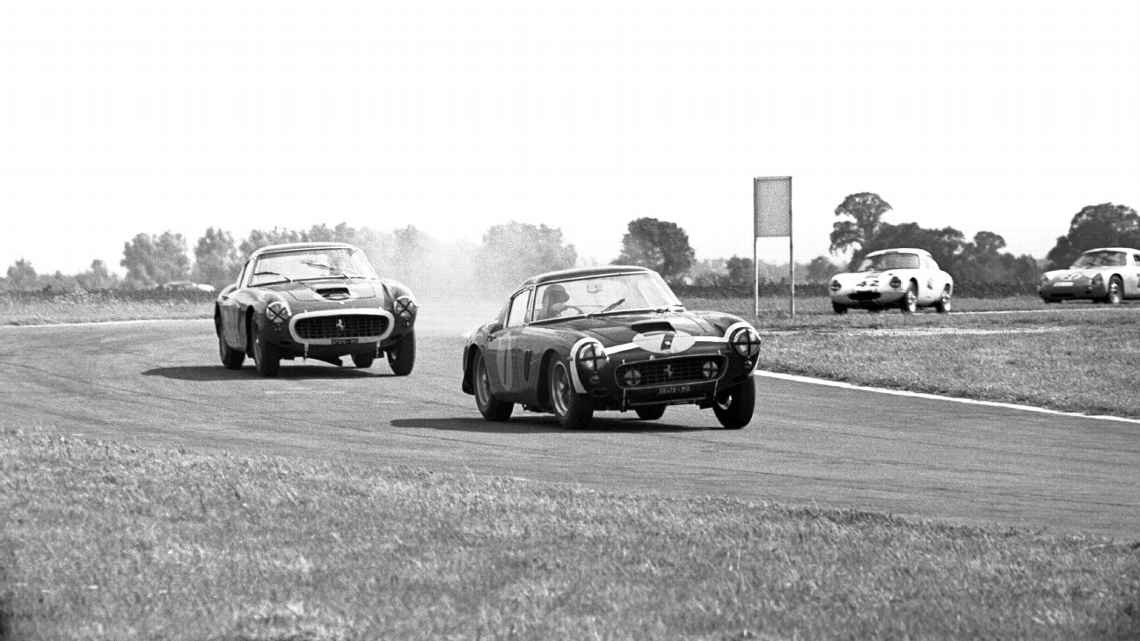
Stirling Moss drove privately-entered Ferraris in 13 races, including his famous victory at the Goodwood TT in 1961. Photo by GP Library/Universal Images Group via Getty Images.
It was a bold, some might say foolhardy, reaction but one that Moss stood by. Over the next 11 years Ferrari drivers took five world championships while Moss took none. He was runner up four times - twice to Ferrari drivers by a handful of points - but opted to drive for the likes of Mercedes, Maserati and the privateer Rob Walker instead of the prancing horse. He did compete in Ferraris in sportscar racing and with great success, but they were always run by private entrants and never Enzo himself.
"I drove 13 races in a Ferrari," he recalled. "I was disqualified once when my mechanics put in fuel when I went in for new brake pads at Sebring. Retired once when the fan blade came off at Le Mans - it should have been removed but because it was a North American Racing Team entry they hadn't bothered to take it off and it went through the radiator. But all the other races I won, with 10 fastest laps. So my Ferrari career was very good."
The introduction of a 1.5-litre engine formula in 1961 saw Ferrari dominate F1. The V6 Dino engine mounted in the back of the brand new 156 'Sharknose' chassis was far superior in comparison to the four-year-old Climax engines powering the British cars.
Moss, in an outdated Lotus entered by Rob Walker, was the only driver to beat the 'Sharknoses' in 1961 with two brilliant victories at Monaco and the Nurburgring. Ferrari was impressed and, in the knowledge that a new V8 Climax engine would level the playing field in 1962, put his pride to one side and approached Moss.
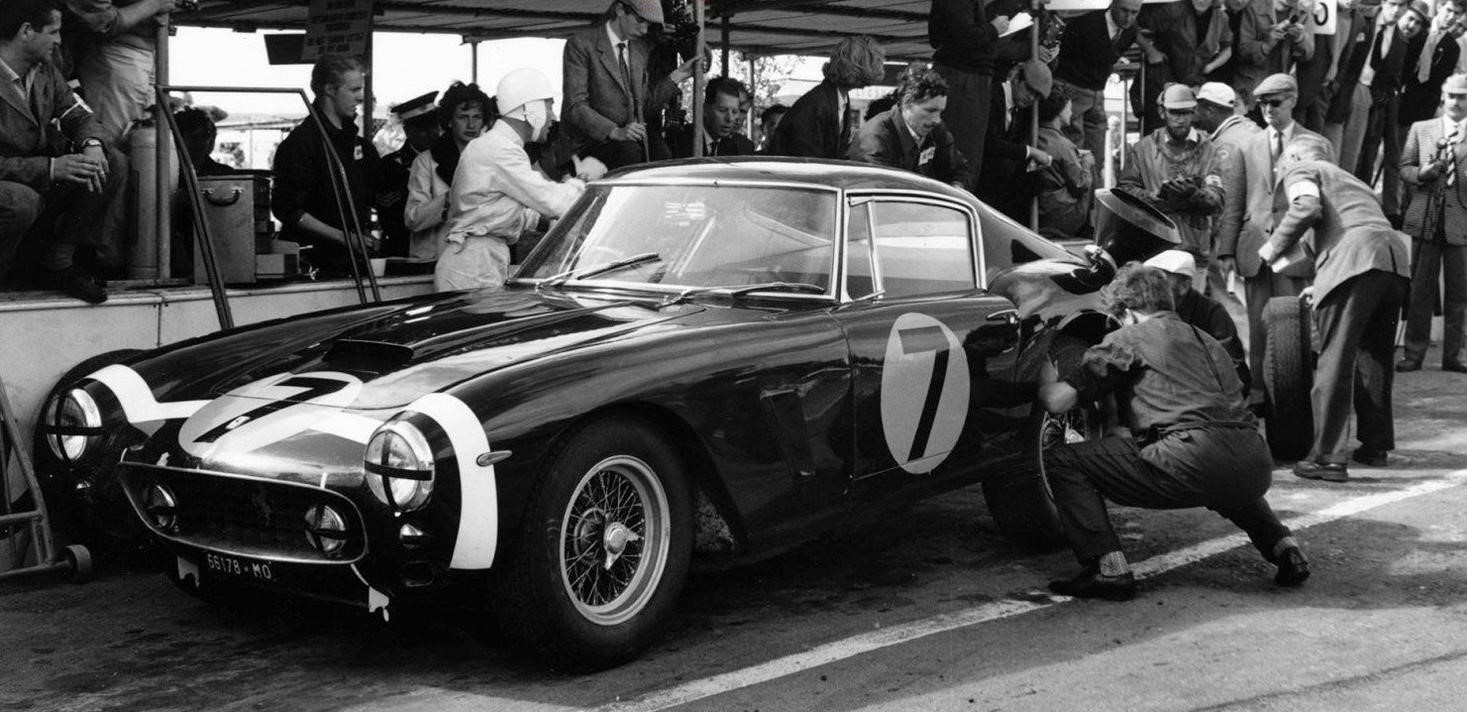
1961 Tourist Trophy – n.7 Stirling Moss, Ferrari 250 GT SWB.
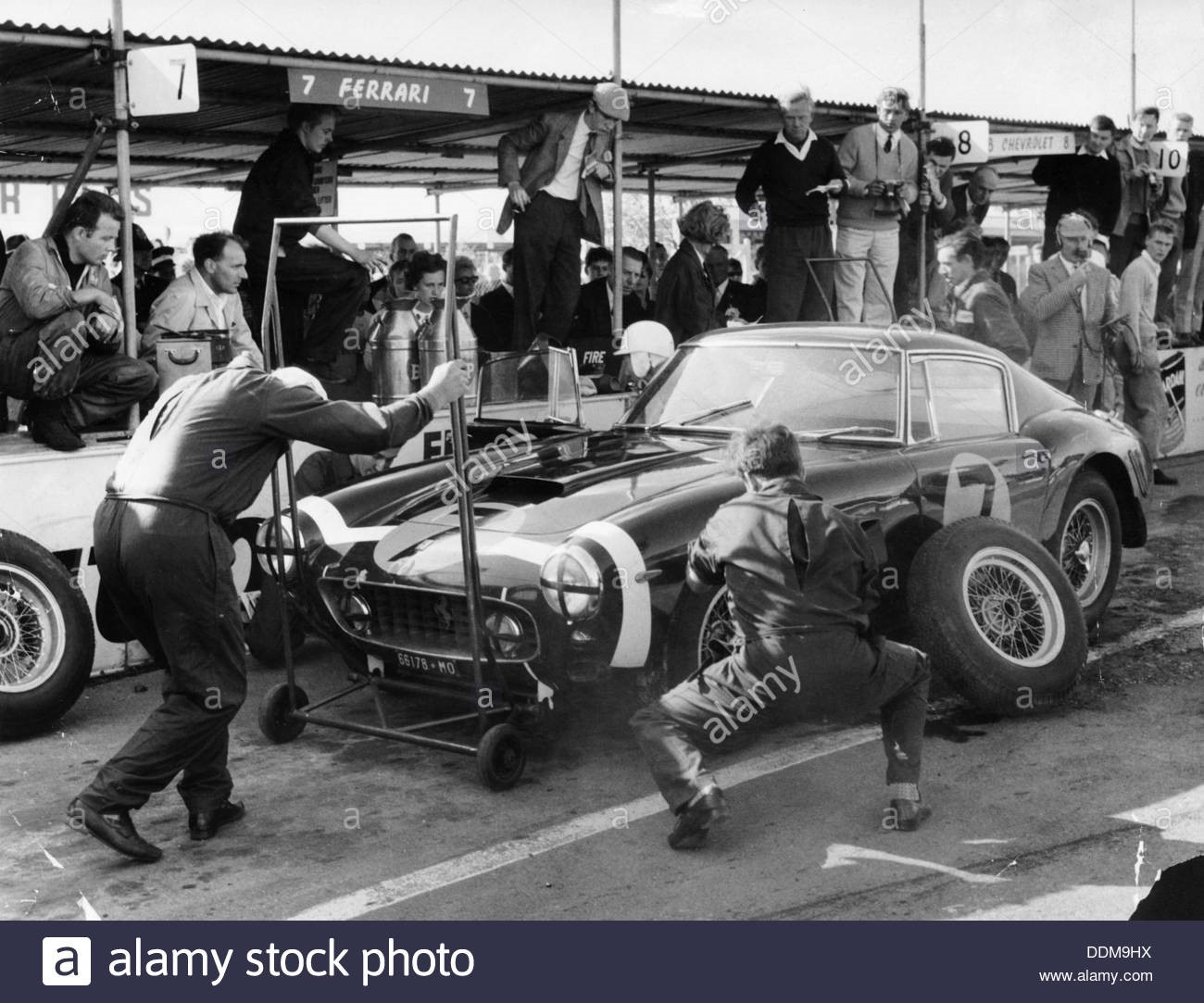
Stirling Moss in a Ferrari, Goodwood 1961. Artist unknown.
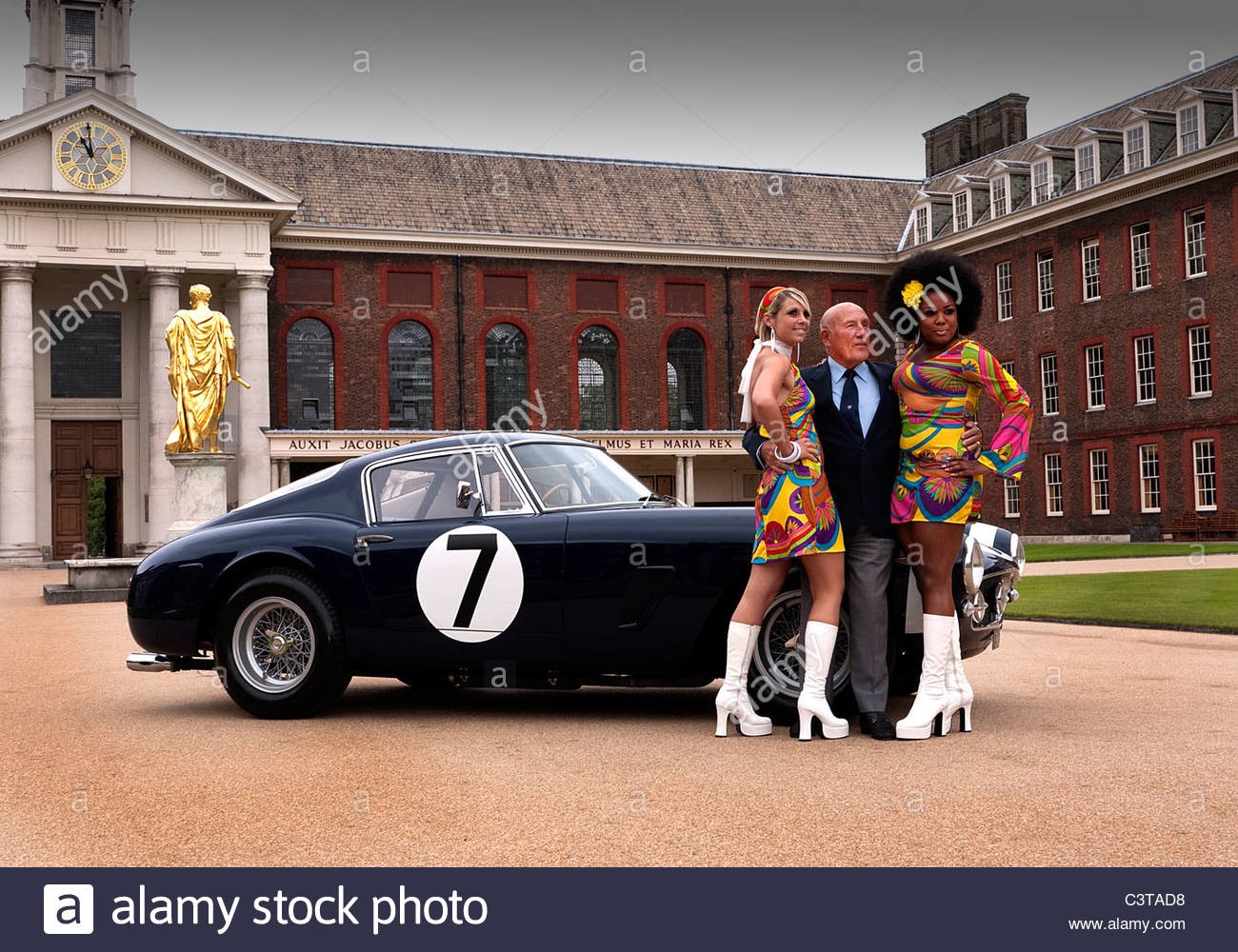
Sir Stirling Moss with swinging-sixties models and 1961 Ferrari.
"At the end of 1961 I went down to Modena," Moss recalls. "Ferrari said to me: 'if you tell me what car you want, I'll build it for you'. I said: 'I want a Ferrari 250 GTO sports car for BRP [British Racing Partnership] painted in their colours and I want a Ferrari 156 painted in Rob Walker colours, then I'll race for you'. He agreed and built the cars."
It was a remarkable deal and one that shows the measure of respect Ferrari had for Moss. The scene the following year would have been unprecedented; a dark blue 156 with a white stripe across its distinctive nose running in the same specification as the scarlet factory cars and most likely beating them. But it never materialised as, on Easter Monday 1962, the hopes and aspirations of Moss and Ferrari came to an end with an almighty shunt at Goodwood.
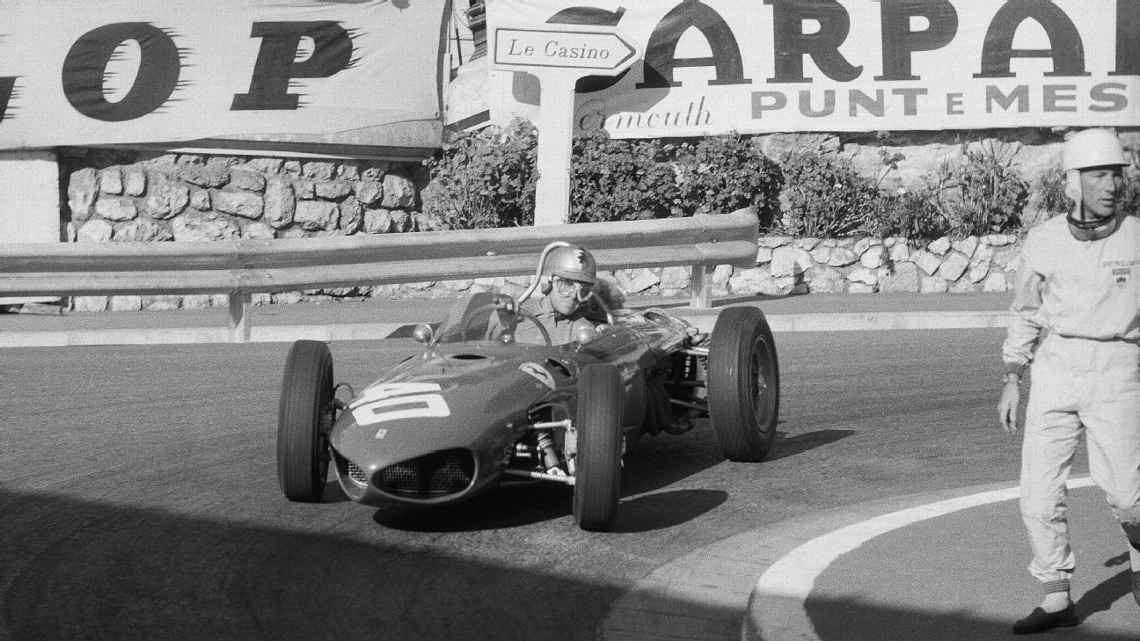
Stirling Moss had been promised his own Ferrari 156 for the 1962 season, but a career-ending accident at Goodwood meant he never got to drive it. Photo by Klemantaski Collection/Getty Images.
Moss had yet to take delivery of his Ferrari and was campaigning a Lotus 18/21 entered by UDT-Laystall with the new V8 Climax engine in the back. He took pole position but a gear linkage problem scuppered his chance of a decent result in the race and put him two laps behind the leader Graham Hill. As he moved to unlap himself Moss's Lotus veered off the circuit at high speed and crashed into a grass bank on the entrance to St Mary's corner. The front of the car folded in on itself and he was left trapped and unconscious in the mangled wreck. The exact reason for the accident is unknown - Moss's memory was blank when he came out of his three-week coma - but to this day he is confident things would have been different had he been driving the 156 Ferrari had promised him.
"If Ferrari had got the car ready for me at Goodwood I'm certain I wouldn't have had the shunt," he said. "I'm damn sure that whatever happened was connected with the car and the Ferraris never broke.”
"The accident meant I had to start working for a living at 32 with no knowledge of anything. It was a bit of shock, I can tell you."
When the 1962 season rolled round the Ferrari 156s were comprehensively outperformed by the British cars and failed to win a single race. The flop was widely attributed to key members of the team walking out and the outfit stretching its resources too thinly between F1 and sports cars. Either way, there's no way of knowing what would have happened had Moss been fit to race.
Ferrari later said in private that failing to sign Moss costed his team many victories over the years, while Moss also has regrets about the grudge he formed as a 20-year-old in Bari.
"Yes, I must say my biggest regret is never driving for Ferrari. If you go through Ferrari's history I can't think of one accident -- with the possible exception of Alberto Ascari in which we don't really know what happened -- where the car was the cause of the guy's death."
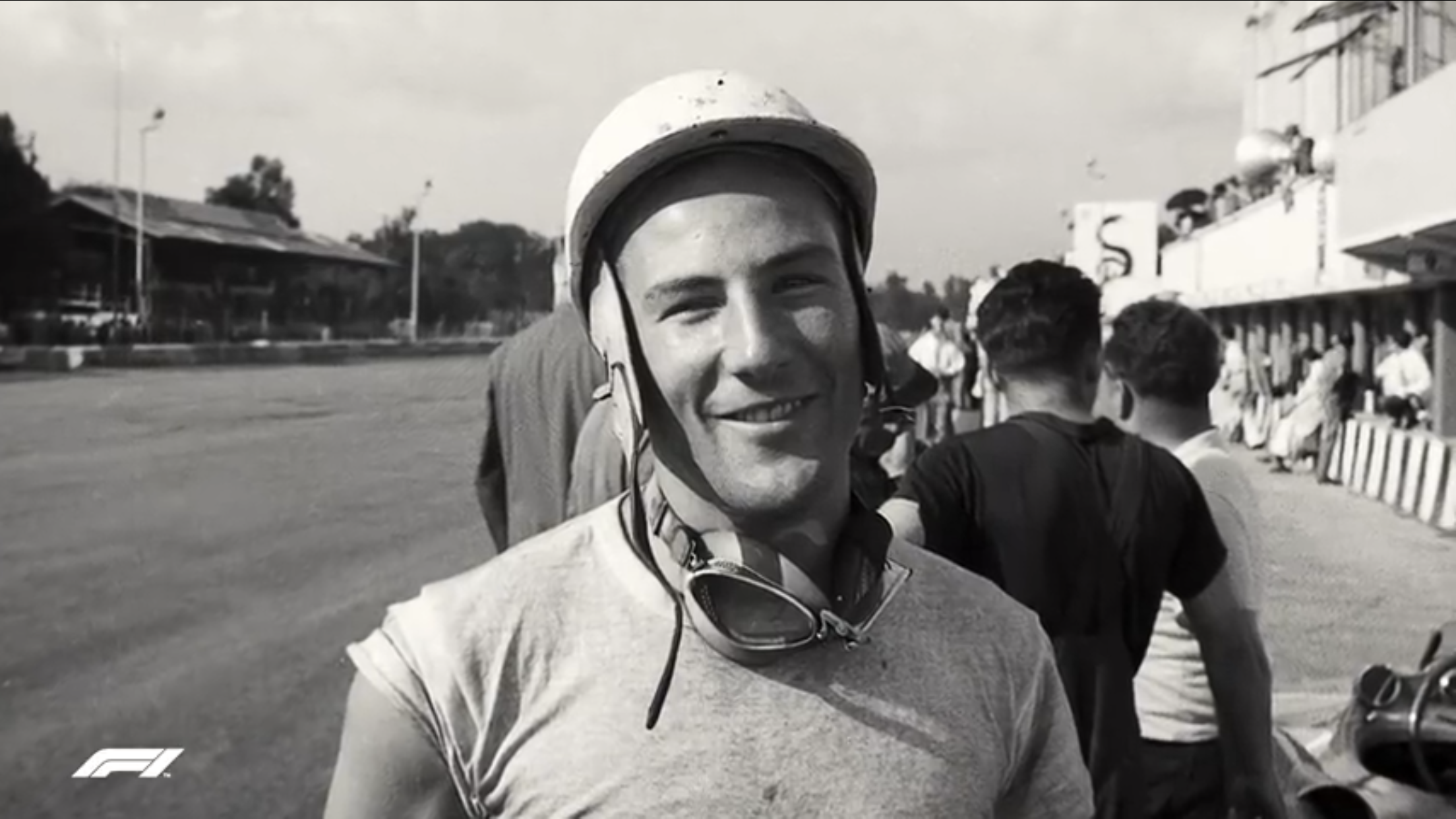
Sir Stirling Moss – “The Gentleman was a tiger”. By Ken Gross. Photos Jesse Alexander.
“I’d like to be remembered as a racer,” Stirling Moss liked to say and was he ever.
In the 1950’s and 1960’s, he repeatedly proved he could win in any type of car, on any kind of track. Patriotic and a tad idealistic in the tenor of the times, for a while, he insisted on only driving British cars and he still managed to prevail against superior German and Italian makes.
“Better to lose honorably in a British car than win in a foreign one,” he said.
In a feat never to be repeated, Moss won the Italian Mille Miglia, aided by pace notes from navigator Denis Jenkinson. He singlehandedly averaged nearly 100-mph for ten hours. Driving a battered Mercedes-Benz 300SLR with a bent chassis, he won the grueling Targa Florio in Sicily and set a record doing so. Front-engine or rear-engine, it didn’t matter.
American racing photographer Jesse Alexander worked when Moss was at his peak. Brilliant with a camera and tireless, Jesse traveled to all the races for nine years during this Golden Era and had the knack of being in exactly the right place to get the best images. Moss and Alexander became friends.
Moss wrote: “one of his (Jesse’s) great talents (was) the instinctive ability to reveal the role of both the machine and the human in automobile racing. You get the cars and the circuits, but you also glimpse the intense human emotions and effort involved… Jesse knew (these) people…, he had a sympathetic understanding of their triumphs and failures.”
“Stirling Moss was a part of my life for many years,” said Jesse, “when we were both living in London. My wife Nancy and I visited Stirling and his wife Susie at their Shepherd St. Mews House and we were impressed with Stirling’s innovative designs. He was a racer, a designer and a writer.
“And Stirling was an amazing driver,” Jesse notes. “One of my favorite racing memories is of his win with Denis Jenkinson in the 1955 Mille Miglia. So it was great to be able to read his own words about it in the introduction to my book, Driven. We remained friends over the years and we continued to exchange notes and Christmas cards. I was very sad to lose him.”
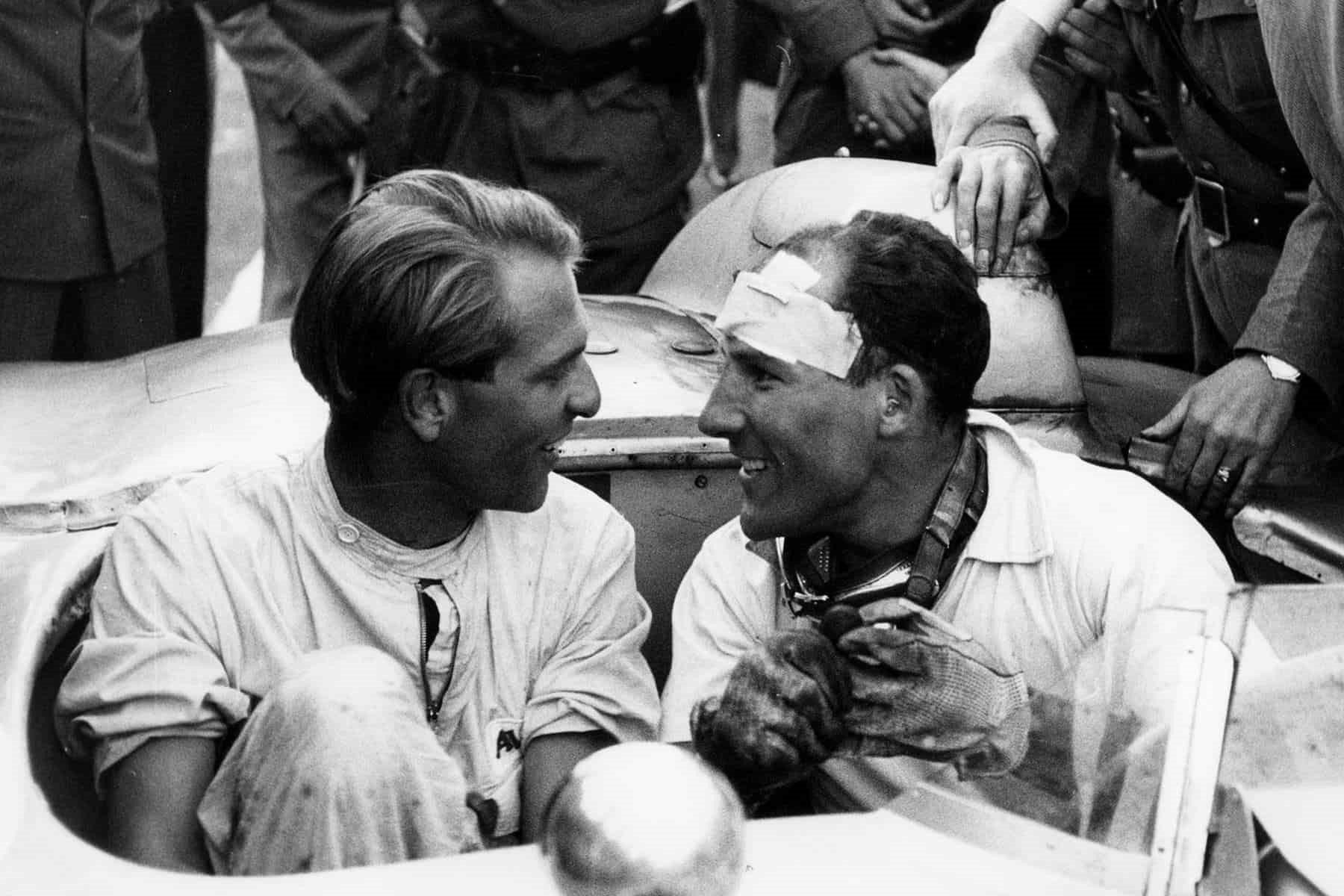
In the 1950’s, drivers were fierce competitors, but many were close friends and sometimes they’d be teammates. At the 1955 Sicilian Targa Florio, co-driving a Mercedes-Benz 300SLR, Stirling Moss and Peter Collins’ win gave Mercedes the World Sports-Car Championship by one point over Ferrari.
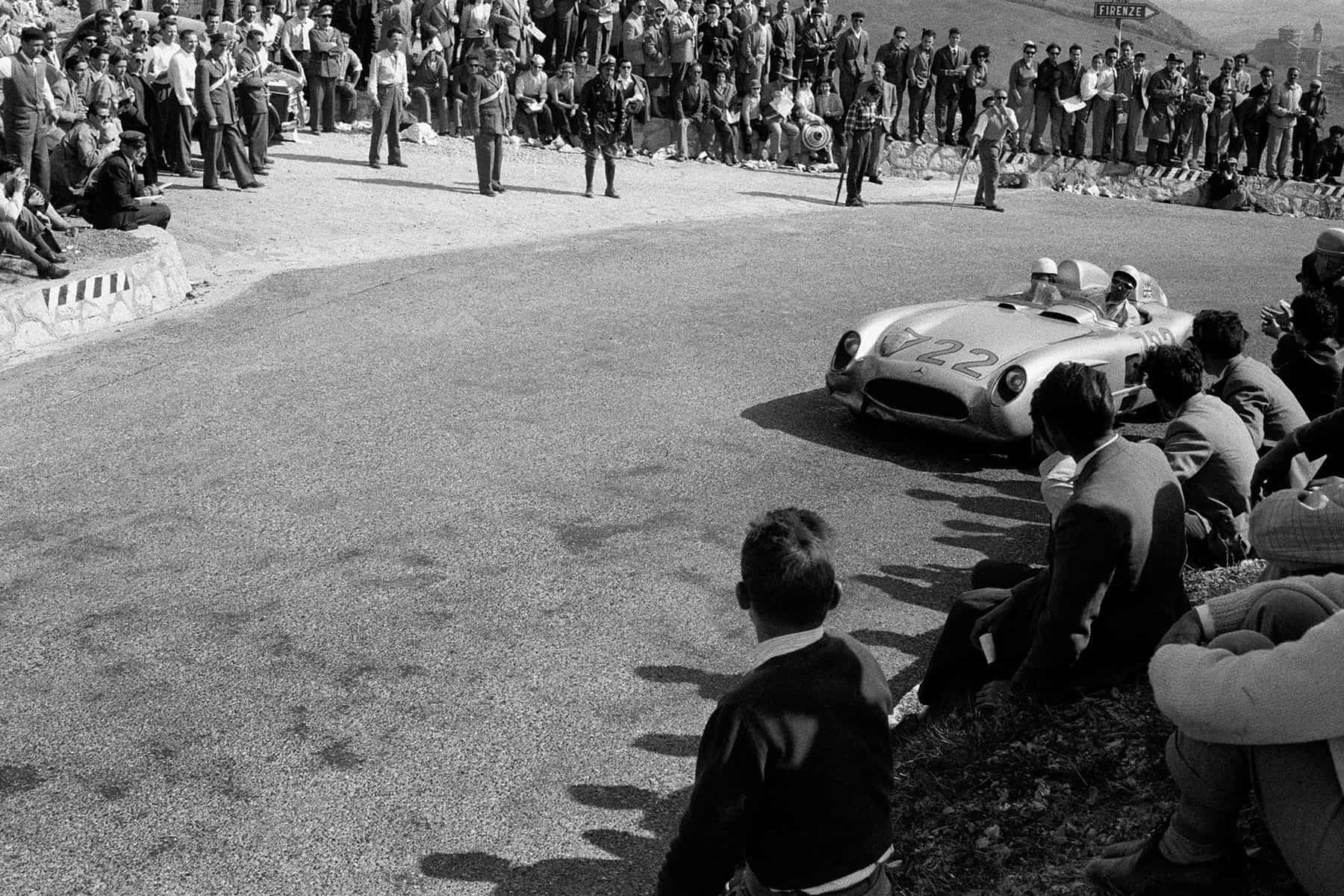
Assisted by Denis Jenkinson’s pace notes, Moss won the 1955 Mille Miglia in a Mercedes-Benz 300SL. Stirling Moss remains the only British driver ever to win the storied Italian road race.
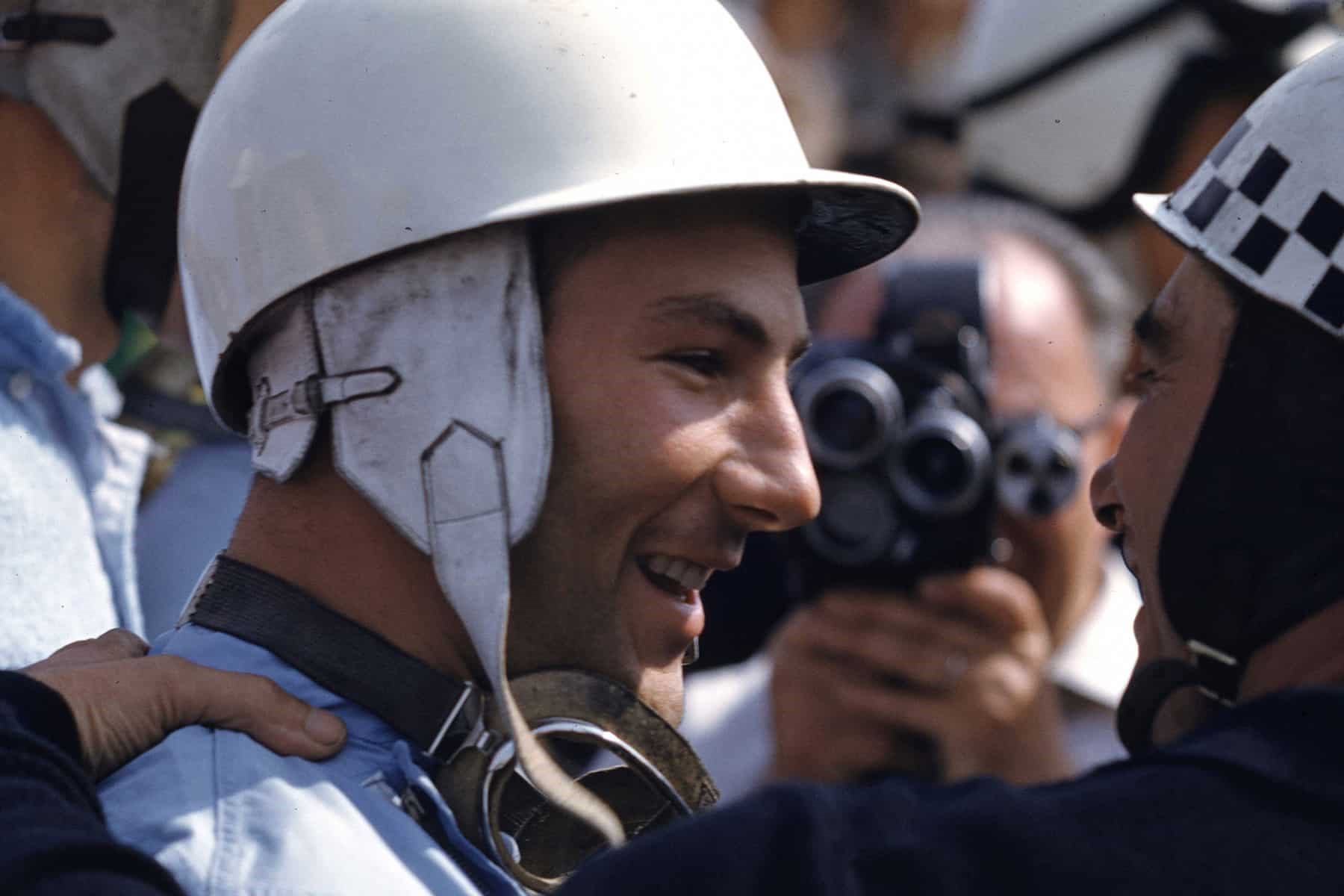
Photographers in Jesse Alexander’s era enjoyed close access to the drivers that’s denied today. The affection between Stirling Moss and Jean Behra is evident. Moments later, they’d be intensely racing one another. Sadly, Jean Behra died when he crashed his Porsche RSK at Avus in 1959.
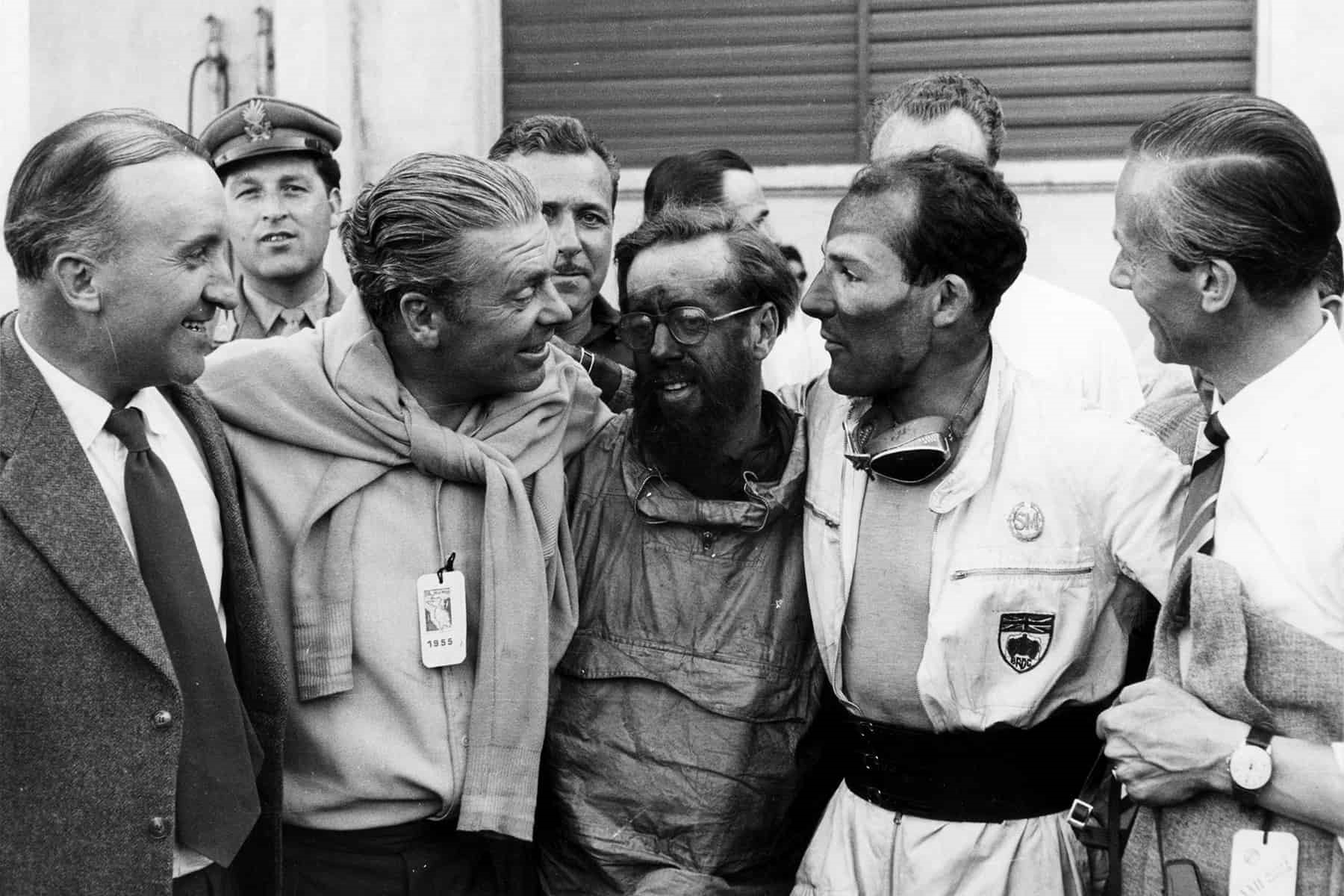
After their winning ten-hour 1955 Mille Miglia drive, Moss and his navigator Denis Jenkinson are elated, exhausted and covered with road grime and brake dust. Mercedes-Benz’s Chief Racing Engineer Rudolf Uhlenhaut, on Jenks’ right, was said to be nearly as quick in a racecar as his top drivers.
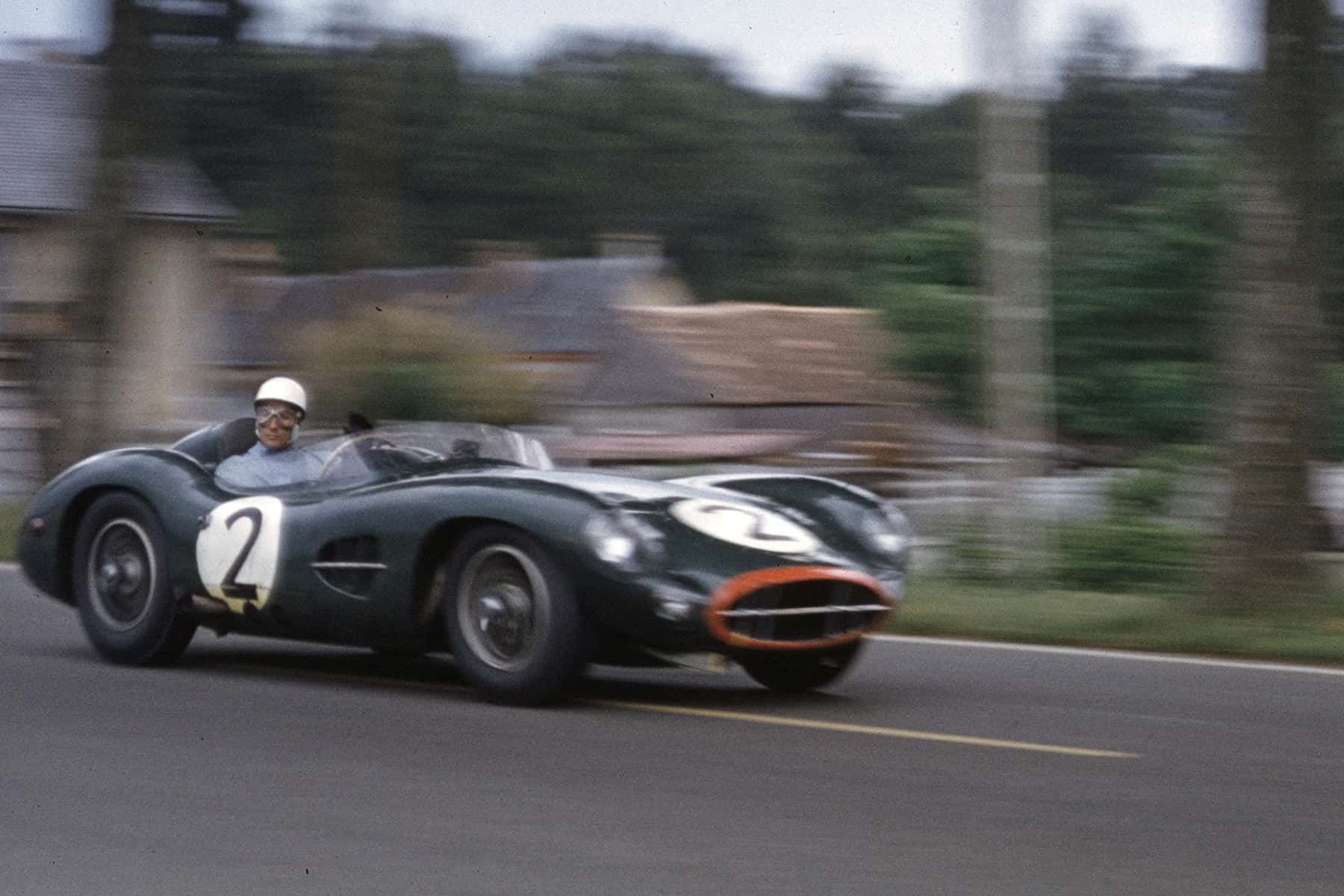
Stirling Moss drove Aston Martin DBR1’s at Silverstone, the Nürburgring, Le Mans and Goodwood in 1959. He finished second at Silverstone, won the Nürburgring 1000KM, co-driving with Jack Fairman, DNF’d at Le Mans (valve trouble) and won again at Goodwood, where he had to change cars because of a fire.
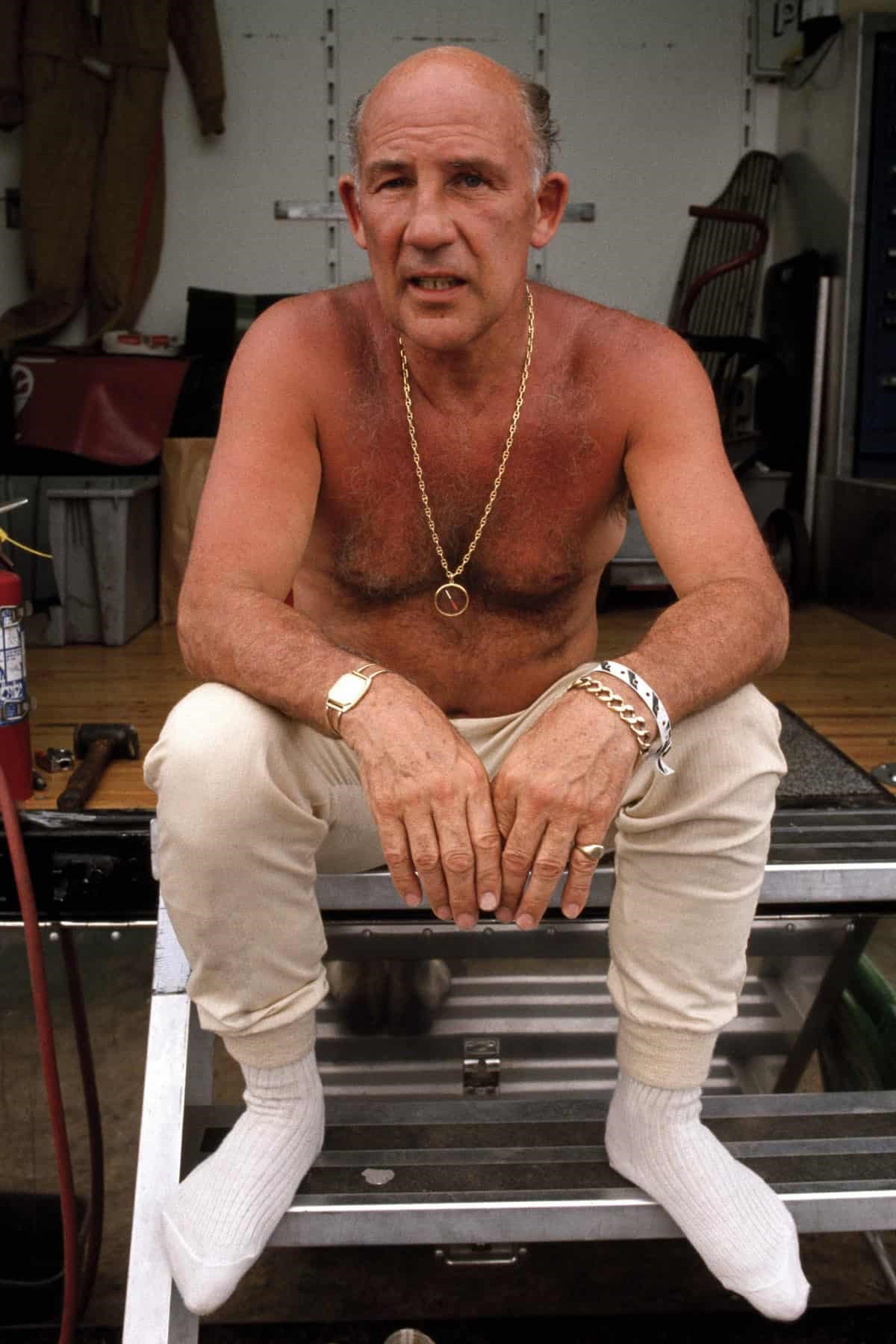
Combat veterans talk about the 1,000-yard stare. Here’s Moss looking tired but fiercely determined. It’s a contemporary photo. After his retirement, Stirling often drove demonstration laps at major race meets in racecars from his 1950-s-1960’s era. He didn’t dawdle around the course, either.
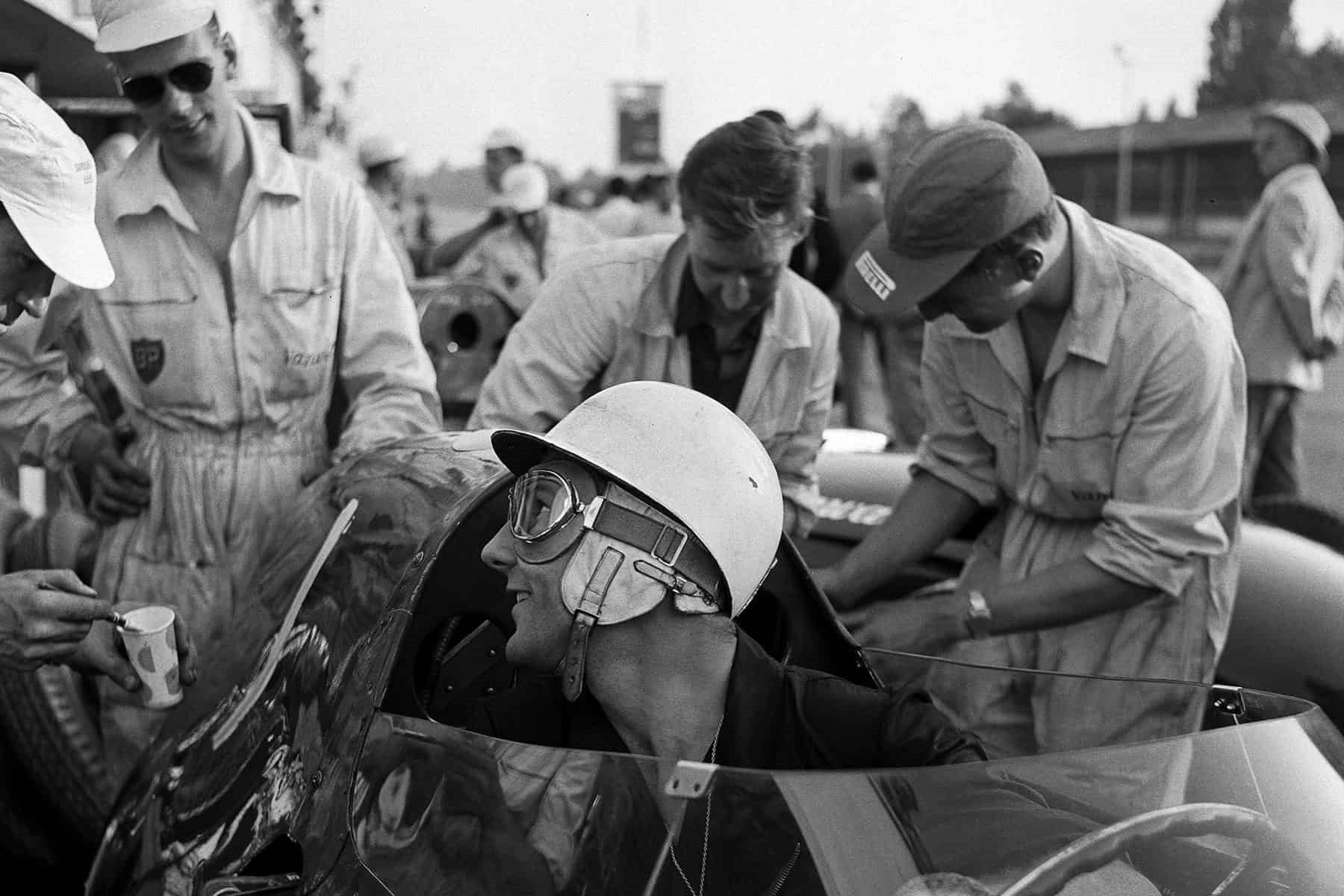
A relaxed Stirling Moss jokes with a mechanic, while the racing number is applied to his Vanwall. He won the Italian Grand Prix, averaging 120.28 mph for 87 laps. Note an almost total lack of protection – a lightweight helmet, no fire suit, cloth weave gloves. Racers were brave men in the ‘50s.
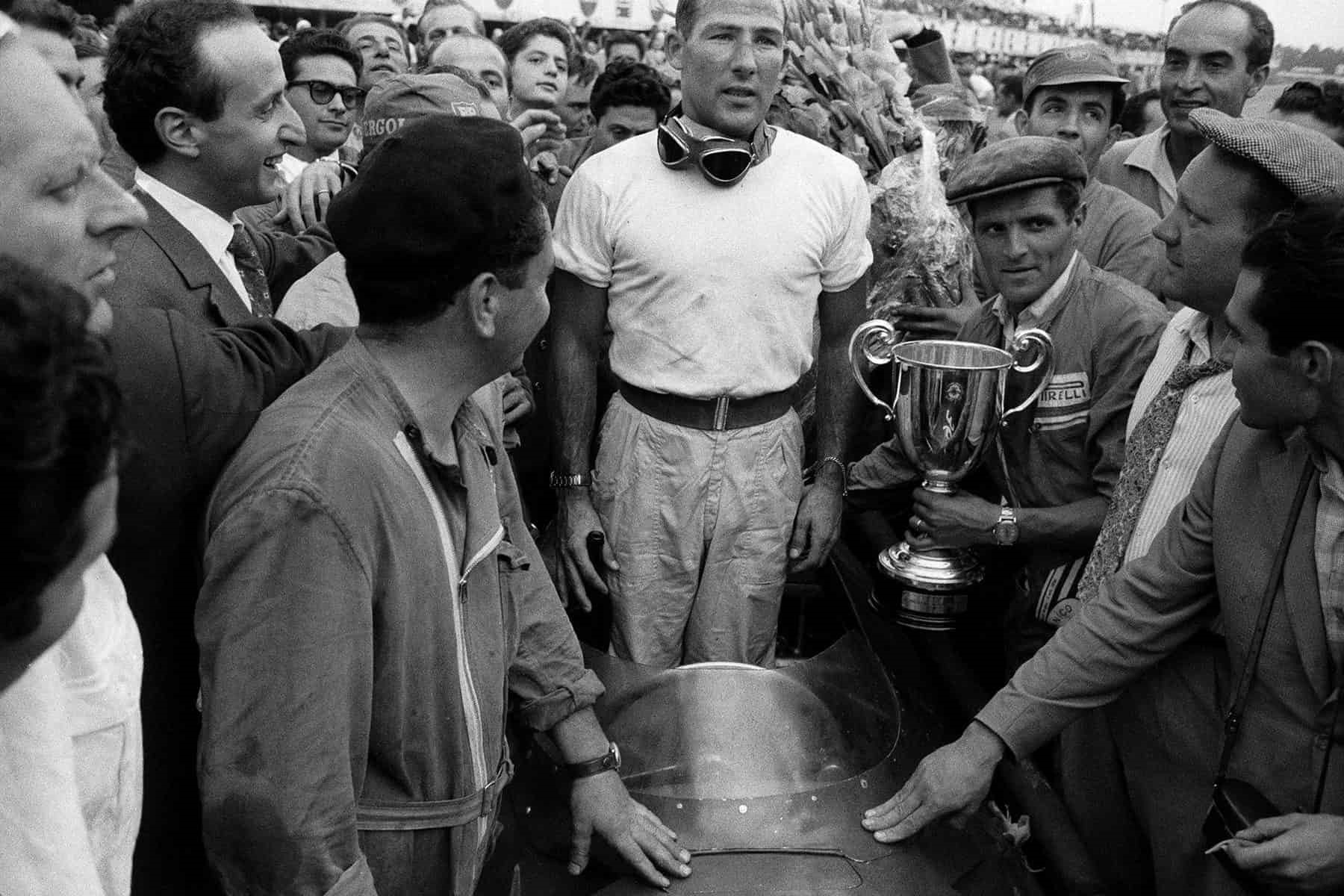
Moss drove a Maserati in the fast-paced Italian Grand Prix at Monza in 1956, winning the race and averaging 129.75 mph. Tired and emotional, he stands at attention with the trophy, probably as they played the British National Anthem. He finished six seconds ahead of Juan Fangio, after Peter Collins, despite his having had a chance to win the driving title, let Fangio take over his car.
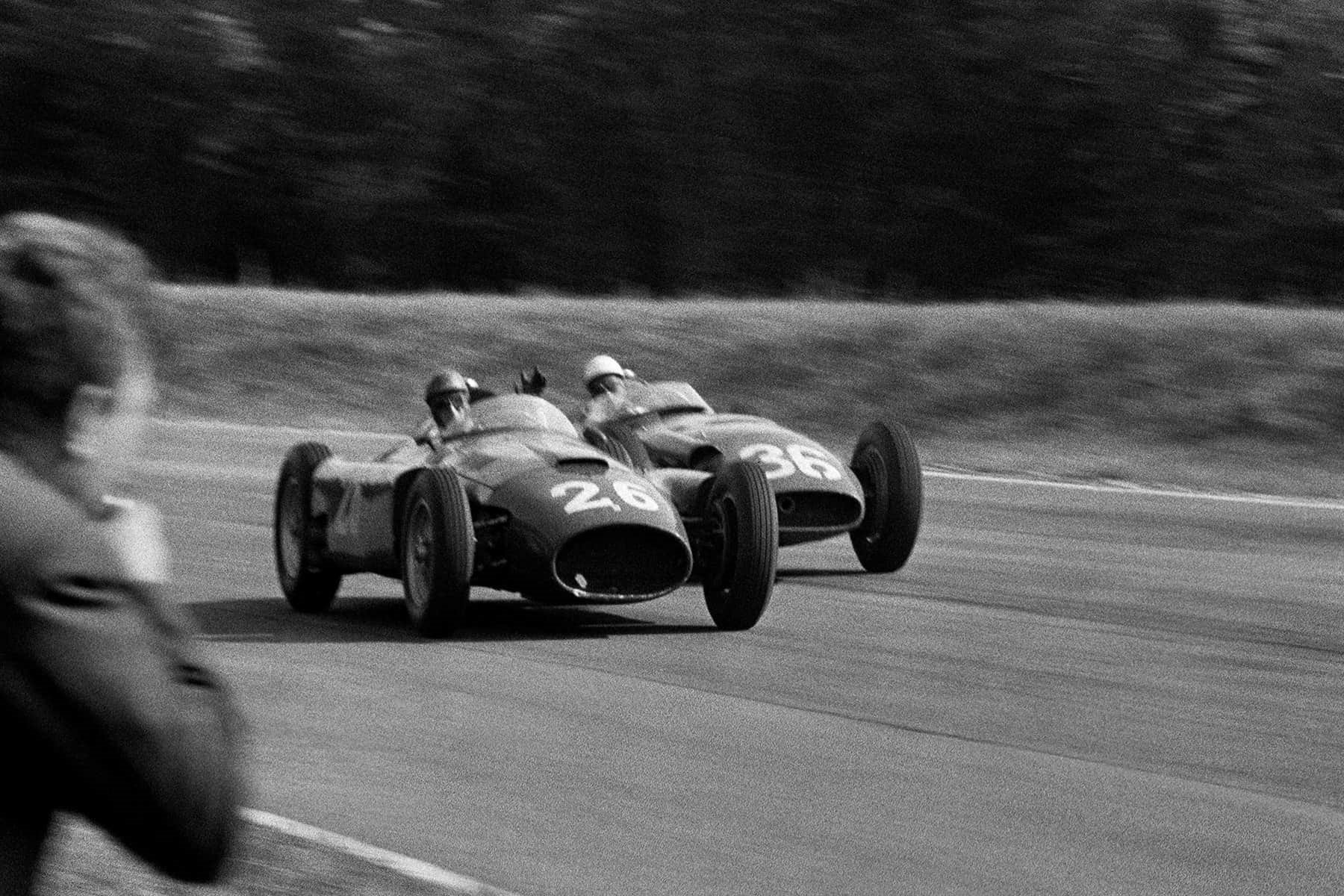
Juan Fangio, in a Lancia-Ferrari waves Moss’ Maserati to pass. Note there are no barriers visible and the photographer in the foreground is just a few feet from the action. Jesse is probably positioned just to the right, at the track’s edge, equally close to the cars hurtling by. Fangio would win his final world championship that year with Ferrari.
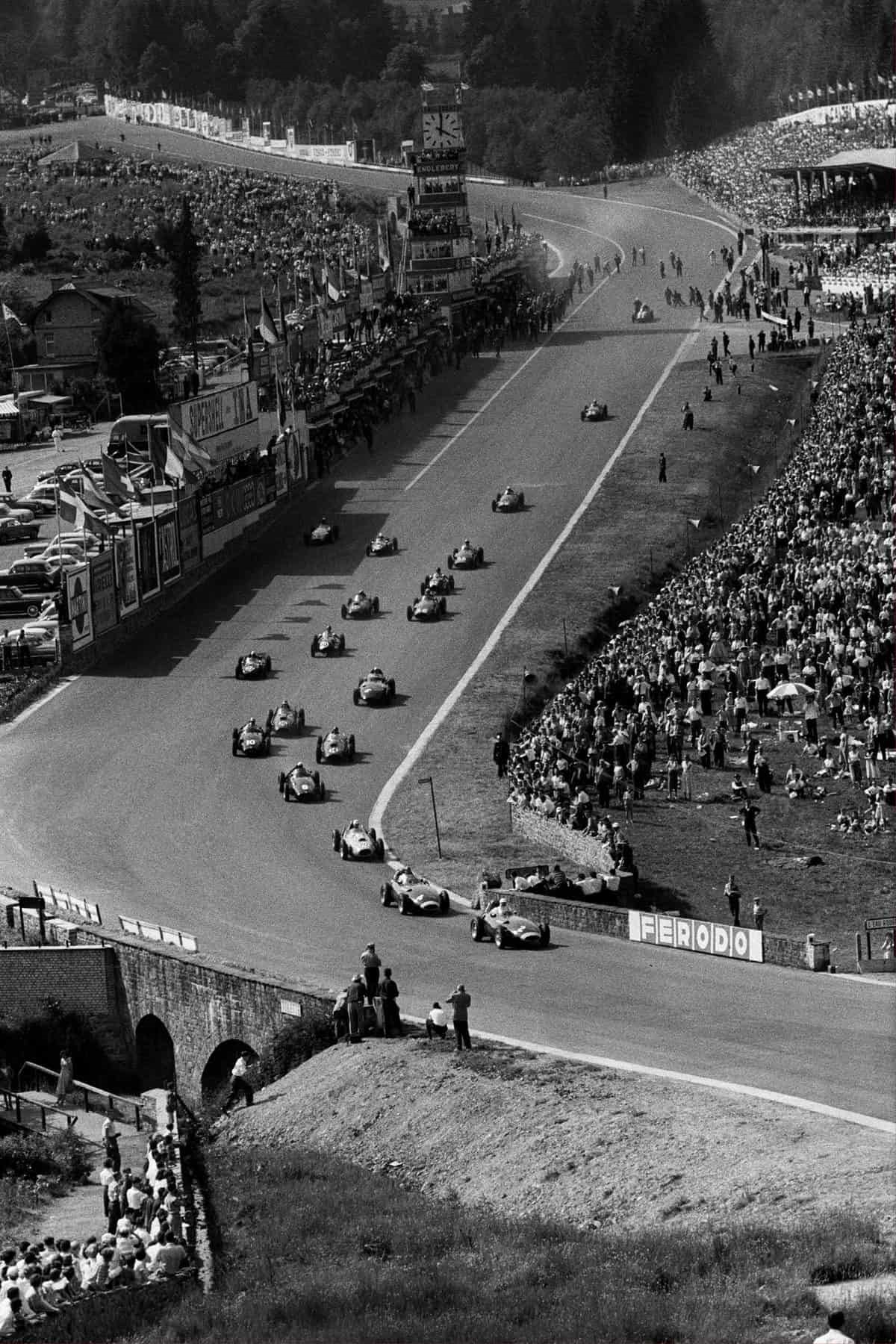
Charging up the hill at Spa-Francorchamps in 1958, en route to the challenging Radillon curve, Moss’ Vanwall leads Tony Brooks and a determined pack of snarling GP cars. Stuart Lewis-Evans, in a third Vanwall, is further behind. Brooks won that day. Stirling DNF’d, having over-revved his engine on that first lap.
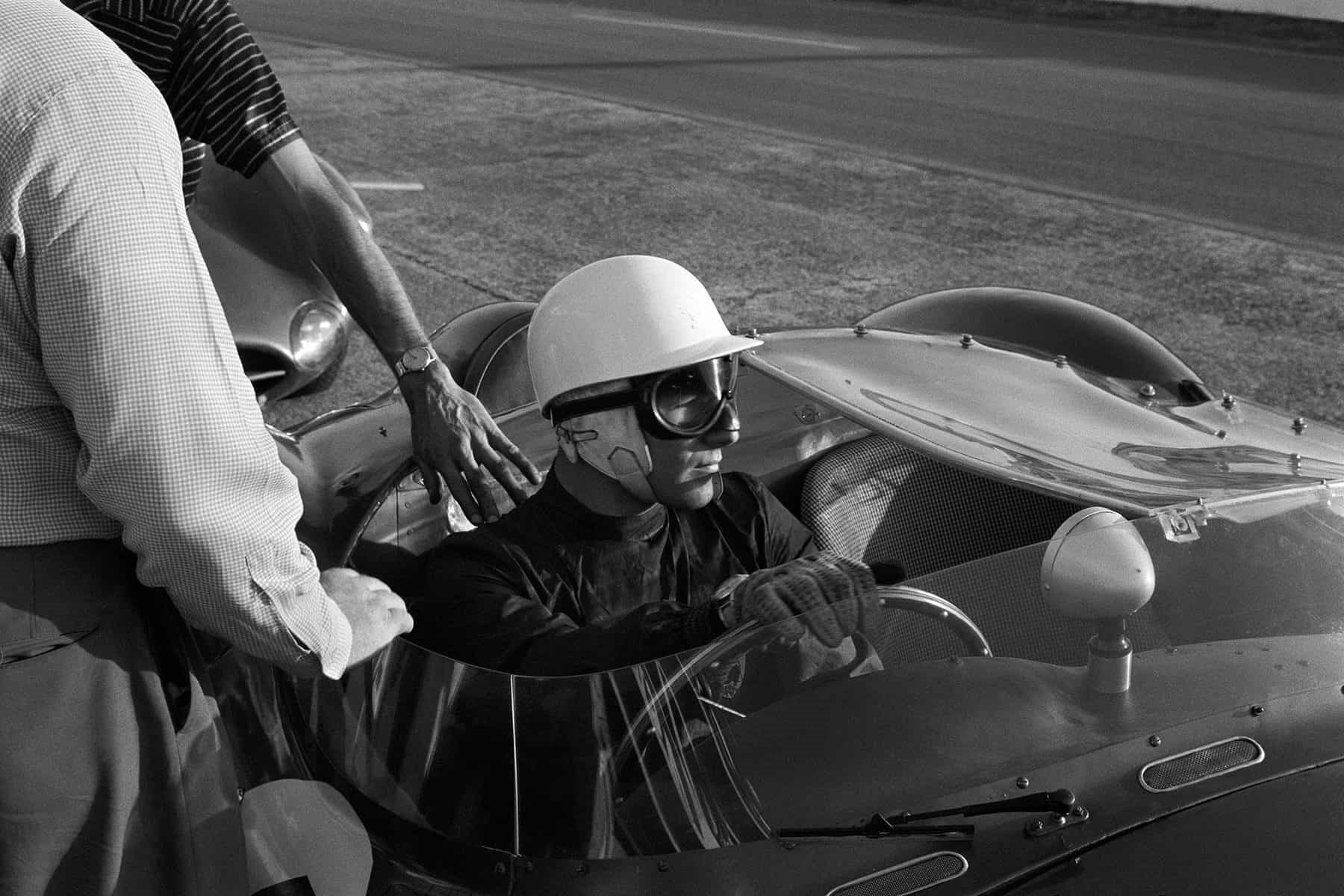
A pensive Stirling Moss in his Aston Martin DBR1 at Le Mans. Paired with Jack Fairman, he retired with ‘valve trouble.’ Even allowing for a long lens, photographer Jesse Alexander is very close to the pit action. Carroll Shelby and Roy Salvadori won the race in a similar DBR1, saving the day for Aston. All the Ferraris retired with clutch trouble.
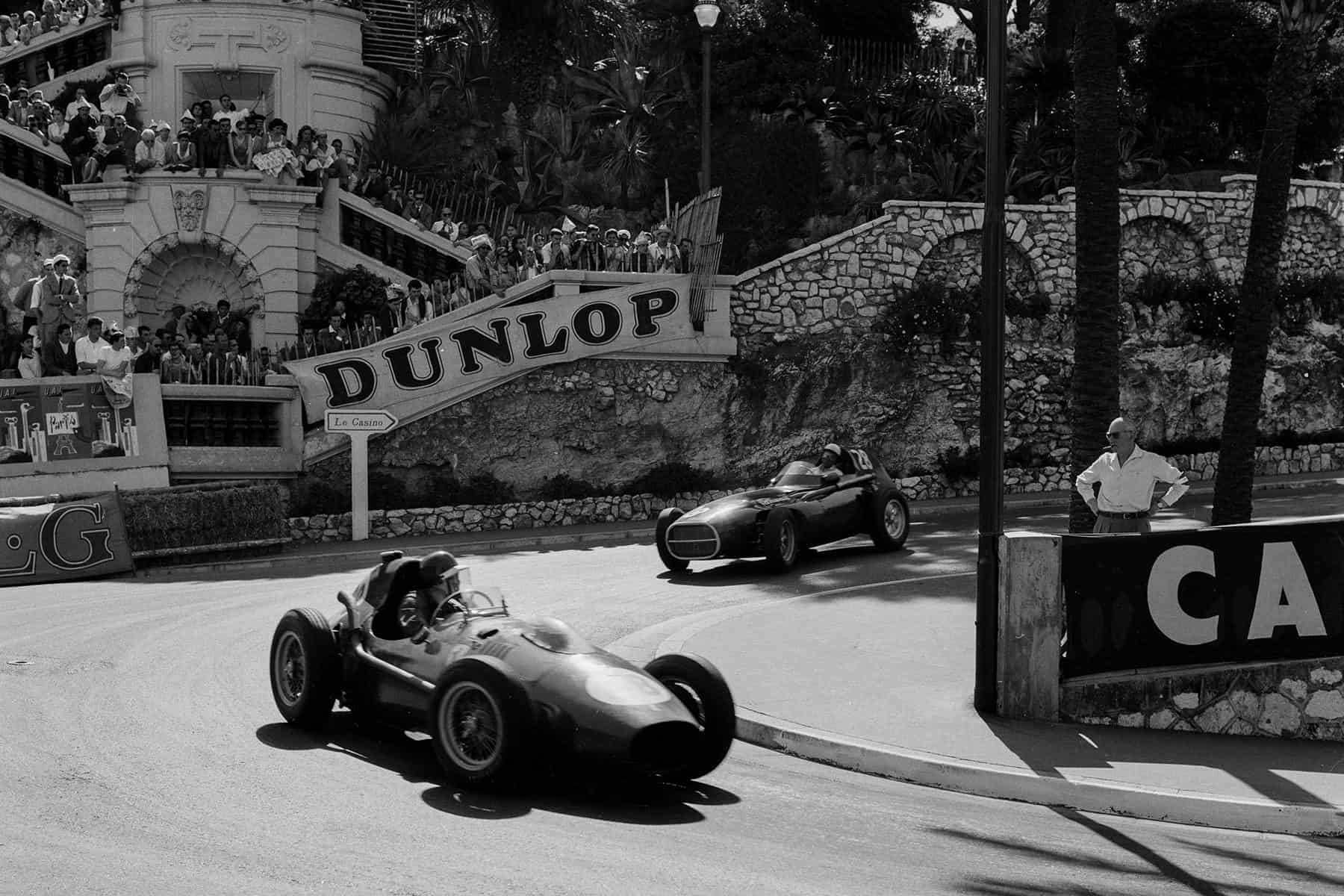
Stirling Moss’s Vanwall chases Mike Hawthorn’s Ferrari at Monaco in 1958. Moss went on to win and turned the fastest lap, 93.96 mph on lap 32. Here Hawthorn glances furtively over his shoulder as if he knows he can’t hold off a hard- charging Stirling Moss. Few drivers could, no matter what they were driving.
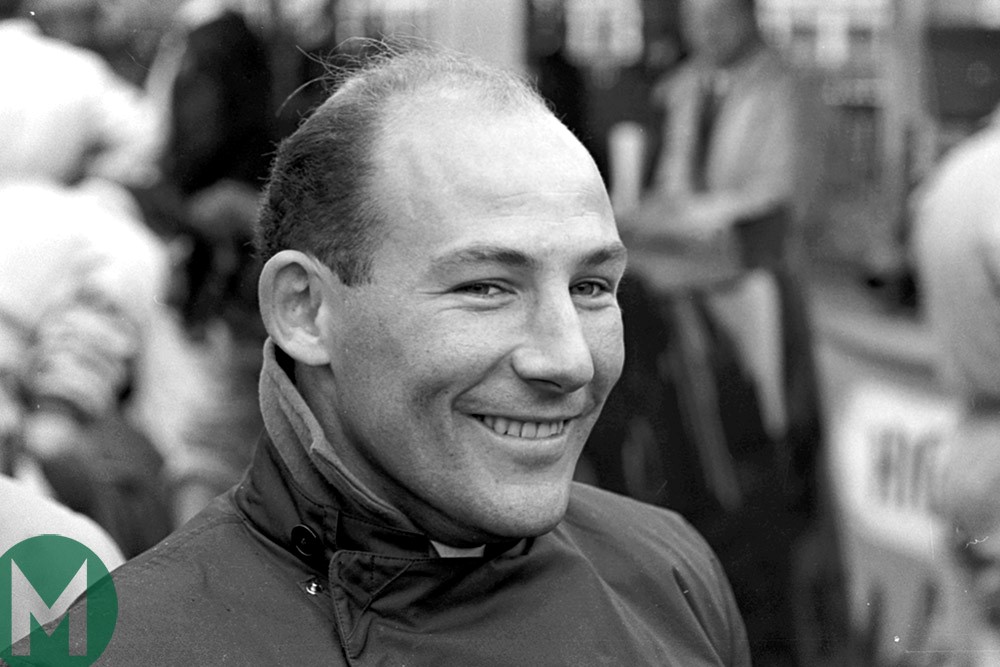
Sir Stirling Craufurd Moss, was a F1 racing driver. An inductee into the International Motorsports Hall of Fame, Moss died in London on 12 April 2020.
Moss was born in London, son of Alfred Moss, a dentist of Bray, Berkshire and Aileen (née Craufurd). His grandfather was Jewish, from a family that changed their surname from Moses to Moss. He was brought up at Long White Cloud house on the south bank of the River Thames. His father was an amateur racing driver who had come 16th in the 1924 Indianapolis 500. Aileen Moss had also been involved in motorsport, entering prewar hillclimbs at the wheel of a Singer Nine. Stirling was a gifted horse rider as was his younger sister, Pat Moss, who became a successful rally driver and married the Swedish rally driver Erik Carlsson.
Stirling was educated at several independent schools: Shrewsbury House School in Surbiton, Clewer Manor Junior School and the linked senior school, Haileybury and Imperial Service College, located at Hertford Heath, near Hertford. He disliked school and did not attain a good academic performance. At Haileybury, he was subjected to antisemitic bullying because of his Jewish roots. He concealed the bullying from his parents and used it as "motivation to succeed". Moss received his first car, an Austin 7, from his father at the age of nine and drove it on the fields around Long White Cloud. He purchased his own car at age 15 after he obtained a driving licence. After the Second World War, Moss was ruled exempt from doing the mandatory two-year national service for men his age because he had nephritis.
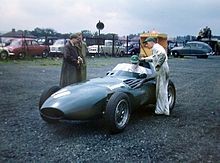
Moss shared this Vanwall VW5 with Tony Brooks to win the 1957 British Grand Prix.
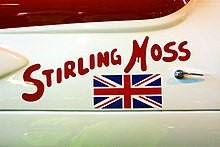
"Stirling Moss" script and a British flag on a 1958 Maserati 420M/58 he raced in the Race of Two Worlds in Monza.
In 1955 Moss won Italy's thousand-mile Mille Miglia road race, an achievement Doug Nye described as the "most iconic single day's drive in motor racing history." He was paired with motor racing journalist Denis Jenkinson, who prepared pace note for Moss. Motor Trend headlined it as "The most epic drive. Ever." Before the race, he had taken a "magic pill" given to him by Fangio and he has commented that although he did not know what was in it, "Dexedrine and Benzedrine were commonly used in rallies. The object was simply to keep awake, like wartime bomber crews." After the win, he spent the night and the following day driving his girlfriend to Cologne, stopping for breakfast in Munich and lunch in Stuttgart.
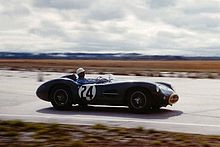
Moss racing an Aston Martin DBR1 at the 1958 12 Hours of Sebring.
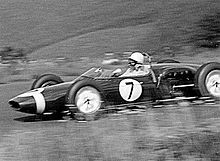
Moss in his winning Lotus-Climax at the 1961 German Grand Prix.
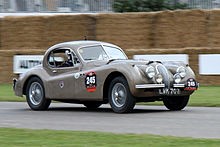
Record-breaking 1952 Jaguar XK120, seen in 2008.
Revisiting Montlhéry, Moss was one of a four-driver team, led by Johnson, who drove a factory-owned Jaguar XK120 fixed-head coupé for 7 days and nights at the French track. Moss, Johnson, Bert Hadley and Jack Fairman averaged 100.31 mph (161.43 km/h) to take four World records and five International Class C records and covered a total of 16,851.73 mi (27,120.23 km).
In August Moss broke five International Class F records in the purpose-built MG EX181 at Bonneville Salt Flats. The streamlined, supercharged car's speed for the flying kilometer was 245.64 mph, which was the average of two runs in opposite directions.
Away from driving, in 1962 he acted as a colour commentator for ABC's Wide World of Sports for F1 and NASCAR races. He eventually left ABC in 1980. Moss narrated the official 1988 F1 season review, along with Tony Jardine.
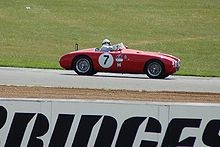
Moss racing an OSCA MT4 Spider Morelli at Speed, 2006 Silverstone Classic.
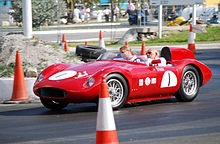
Moss demonstrating his OSCA FS 372 Spider Morelli at the 2011 Bahamas Speed Week.
Throughout his retirement he raced in events for historic cars, driving on behalf of and at the invitation of others, as well as campaigning his own OSCA FS 372 and other vehicles. In 2004, as part of its promotion for the new SLR, Mercedes-Benz reunited Moss with the 300 SLR "No. 722" in which he won the Mille Miglia nearly 50 years earlier. One reporter who rode with Moss that day noted that the 75-year-old driver was "so good . . that even old and crippled [he was] still better than nearly everyone else". On 9 June 2011, during qualifying for the Le Mans Legends race, Moss announced on Radio Le Mans that he had finally retired from racing, saying that he had scared himself that afternoon. He was 81.
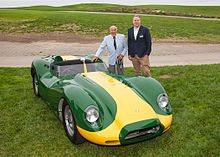
Moss with Lister Cars CEO Lawrence Whittaker.
Lister Cars announced the building for sale of the Lister Knobbly Stirling Moss at the Royal Automobile Club in London in June 2016. The car is built to the exact specification of the 1958 model, is the only magnesium-bodied car in the world and is the only car that was ever endorsed by Moss. Brian Lister invited Moss to drive for Lister on three separate occasions, at Goodwood in 1954, Silverstone in 1958 and at Sebring in 1959 and, to celebrate these races, 10 special edition lightweight Lister Knobbly cars are being built. The company announced that the cars will be available for both road and race use and Moss would personally be handing over each car.
In December 2008, McLaren-Mercedes unveiled their final model of the Mercedes-Benz SLR McLaren. The model was named in honour of Moss, hence, Mercedes McLaren SLR Stirling Moss, which has a top speed of 217 mph (349 km/h) with wind deflectors instead of a windscreen.
In 1957, Moss published an autobiography called “In the track of speed”. In 1963, motorsport author and commentator Ken Purdy published a biographical book entitled “All but my life about Moss”, based on material gathered through interviews with Moss.
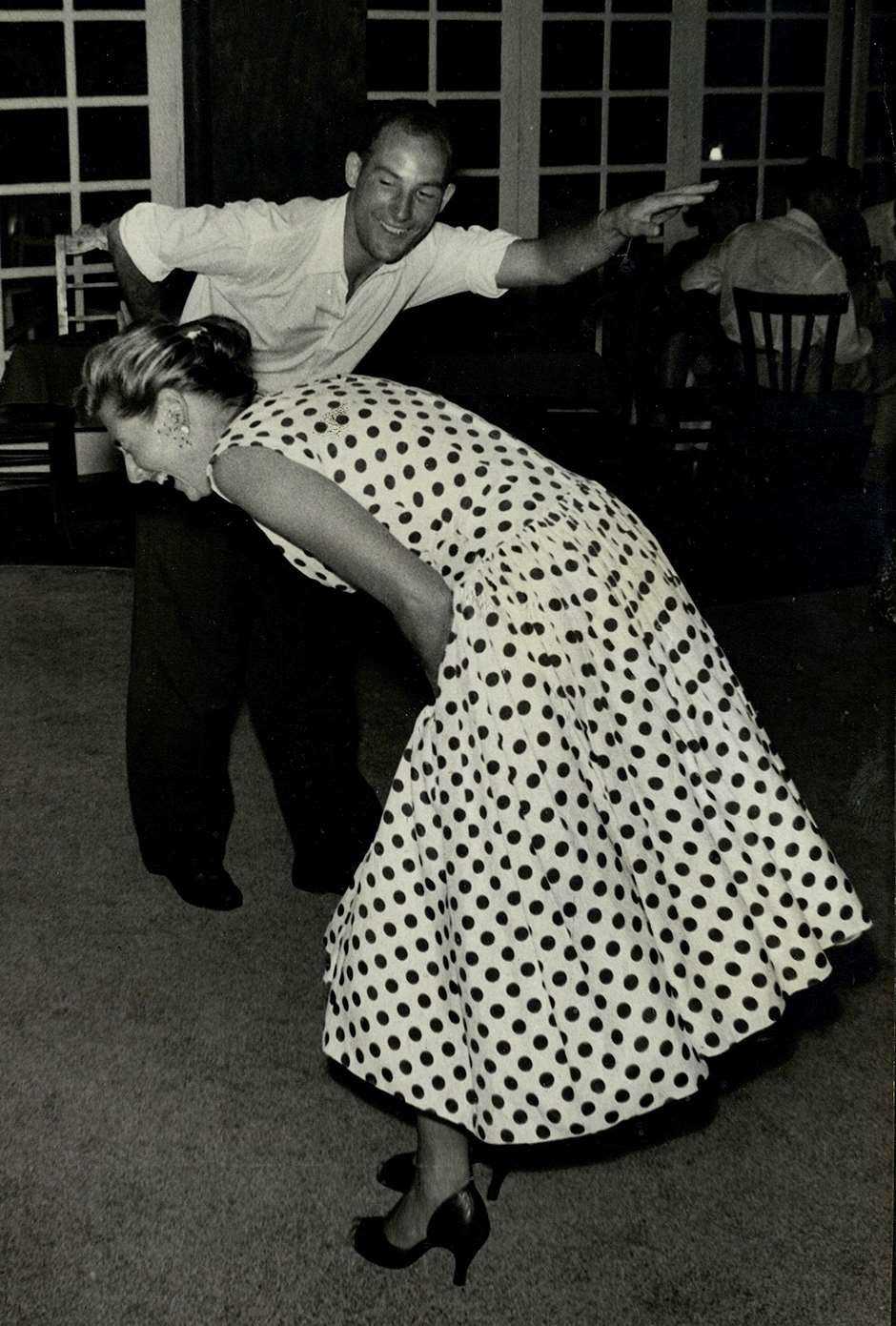
Stirling Moss, “My racing life”.
In 2015, when he was aged 85, Moss published a second autobiography, entitled “My racing life”, written with motor sports writer Simon Taylor.
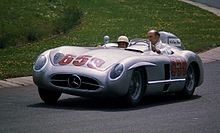
Moss demonstrating a Mercedes-Benz 300 SLR at the Nürburgring in 1977.
During his driving career, Moss was one of the most recognised celebrities in Britain, leading to many media appearances.
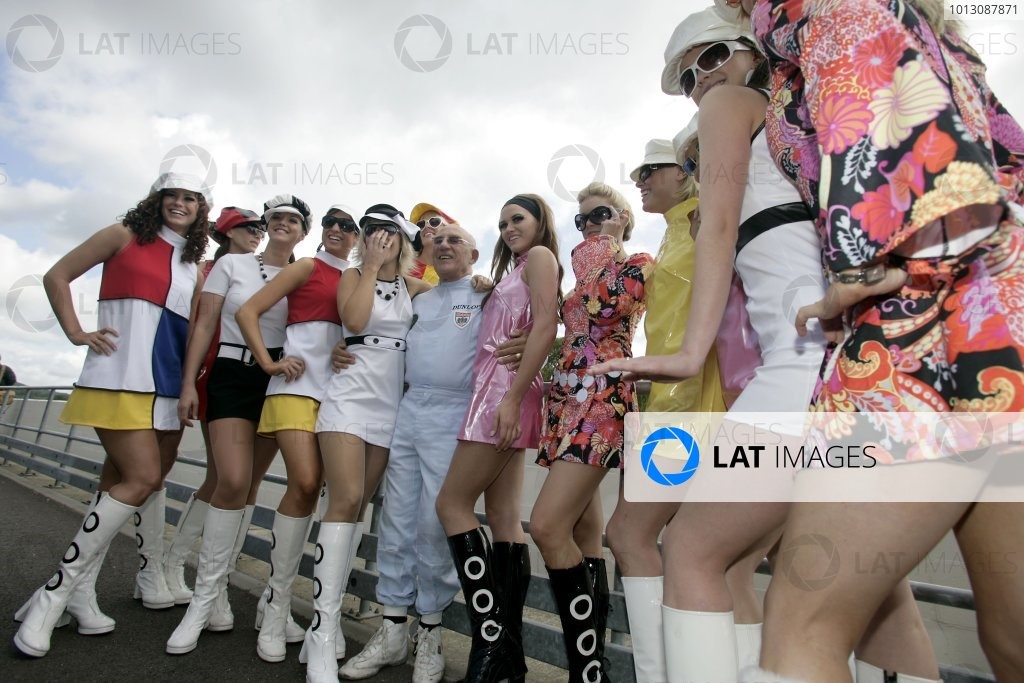

Sir Stirling Moss with promotions girls at Silverstone.
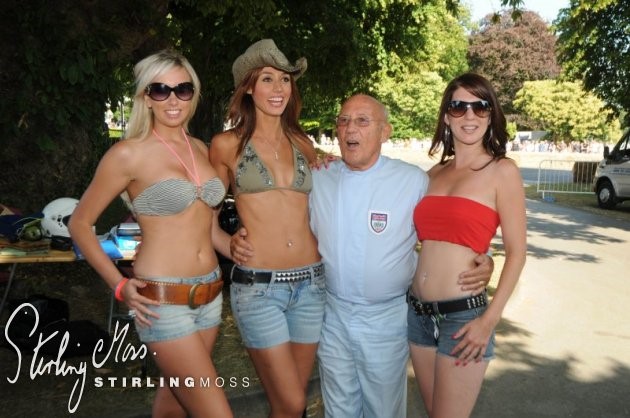
On 12 June 1960 he was interviewed by John Freeman on Face to Face; Freeman later said that he had thought before the interview that Moss was a playboy, but in their meeting he showed "cold, precise, clinical judgement... a man who could live so close to the edge of death and danger and trust entirely to his own judgement. This appealed to me".
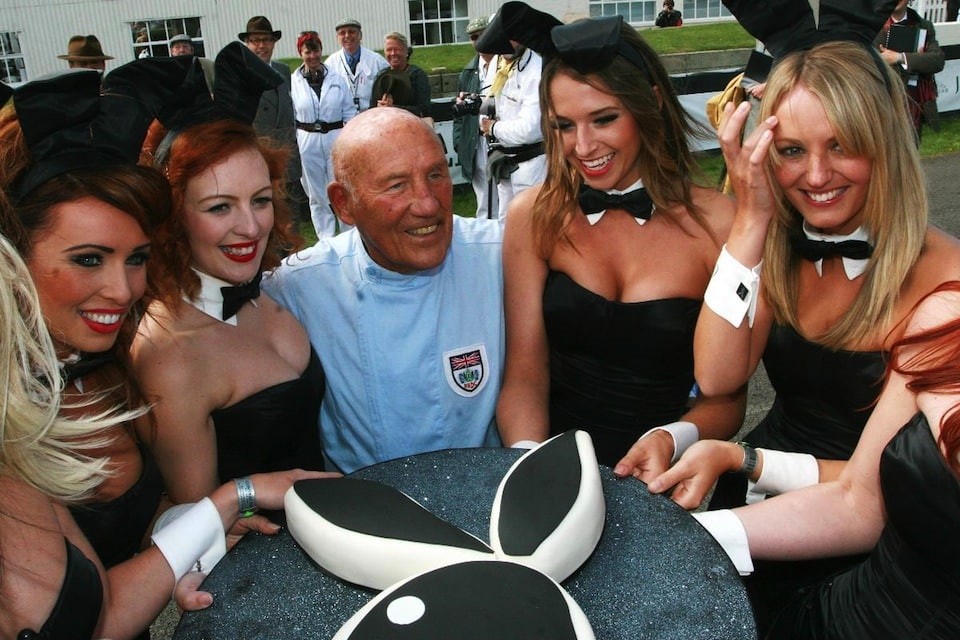
Goodwood Revival, Stirling Moss and Playboy-bunnies.
Moss was the subject of a cartoon biography in the magazine “Private Eye” that said “he was interested in “cars, women and sex”, in that order”.
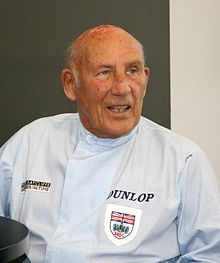
Stirling Moss in 2011.
Moss was married three times. His first wife was Katie Molson; an heir to the Canadian brewer Molson. They were married in 1957 and separated three years later. His second wife was the American public relations executive Elaine Barbarino. They were married in 1964 and divorced in 1968. Their daughter Allison was born in 1967. His third wife was Susie Paine, the daughter of an old friend. They were married from 1980 until his death in 2020. Their son Elliot was born in 1980.
Moss's 80th birthday, on 17 September 2009, fell on the eve of the Goodwood Revival and Lord March celebrated with an 80-car parade on each of the three days.
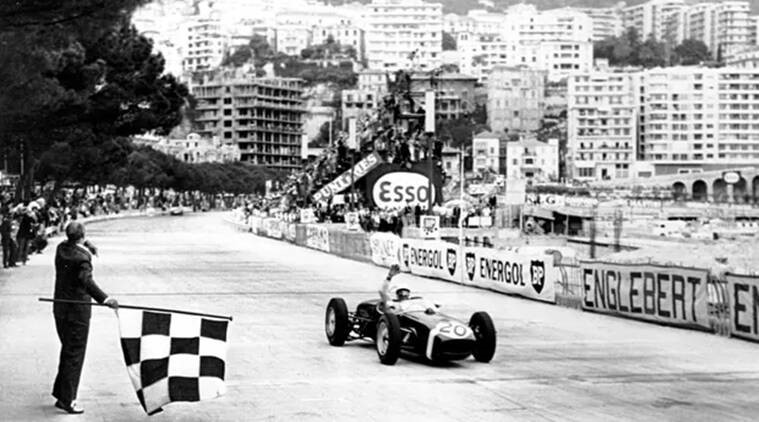
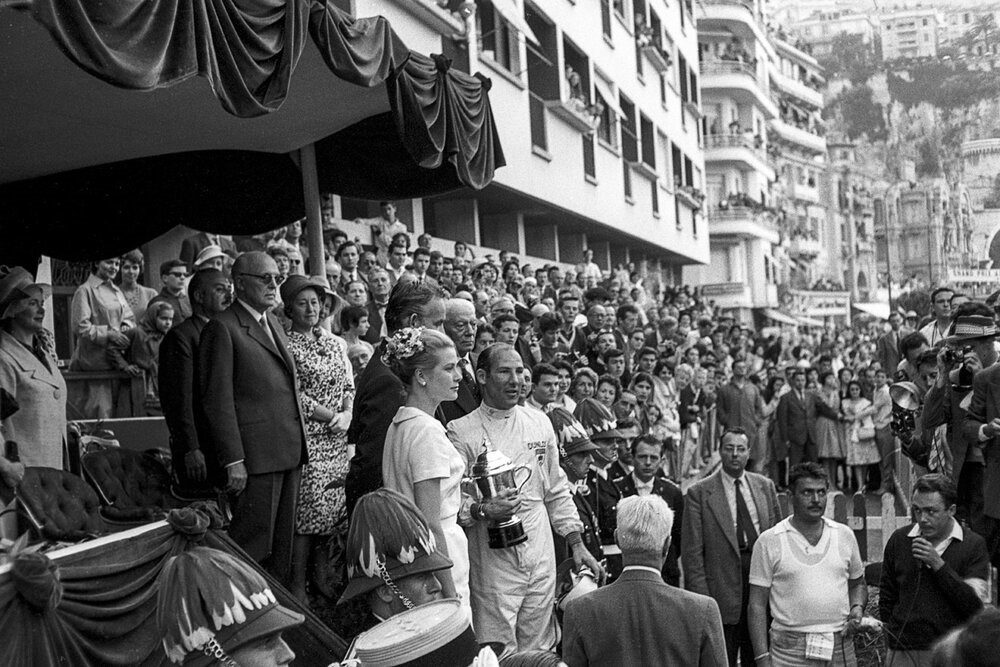
Stirling Moss, Lotus, 1960 Monaco.
Moss drove a different car each day: a Mercedes-Benz W196 (an open-wheel variant), the Lotus 18 in which he had won the 1961 Monaco GP and an Aston Martin DBR1.
On 7 March 2010, Moss broke both ankles and four bones in a foot and also chipped four vertebrae and suffered skin lesions, when he plunged down a lift shaft at his home. In December 2016, he was admitted to hospital in Singapore with a serious chest infection. As a result of this illness and a subsequent lengthy recovery period, Moss announced his retirement from public life in January 2018.
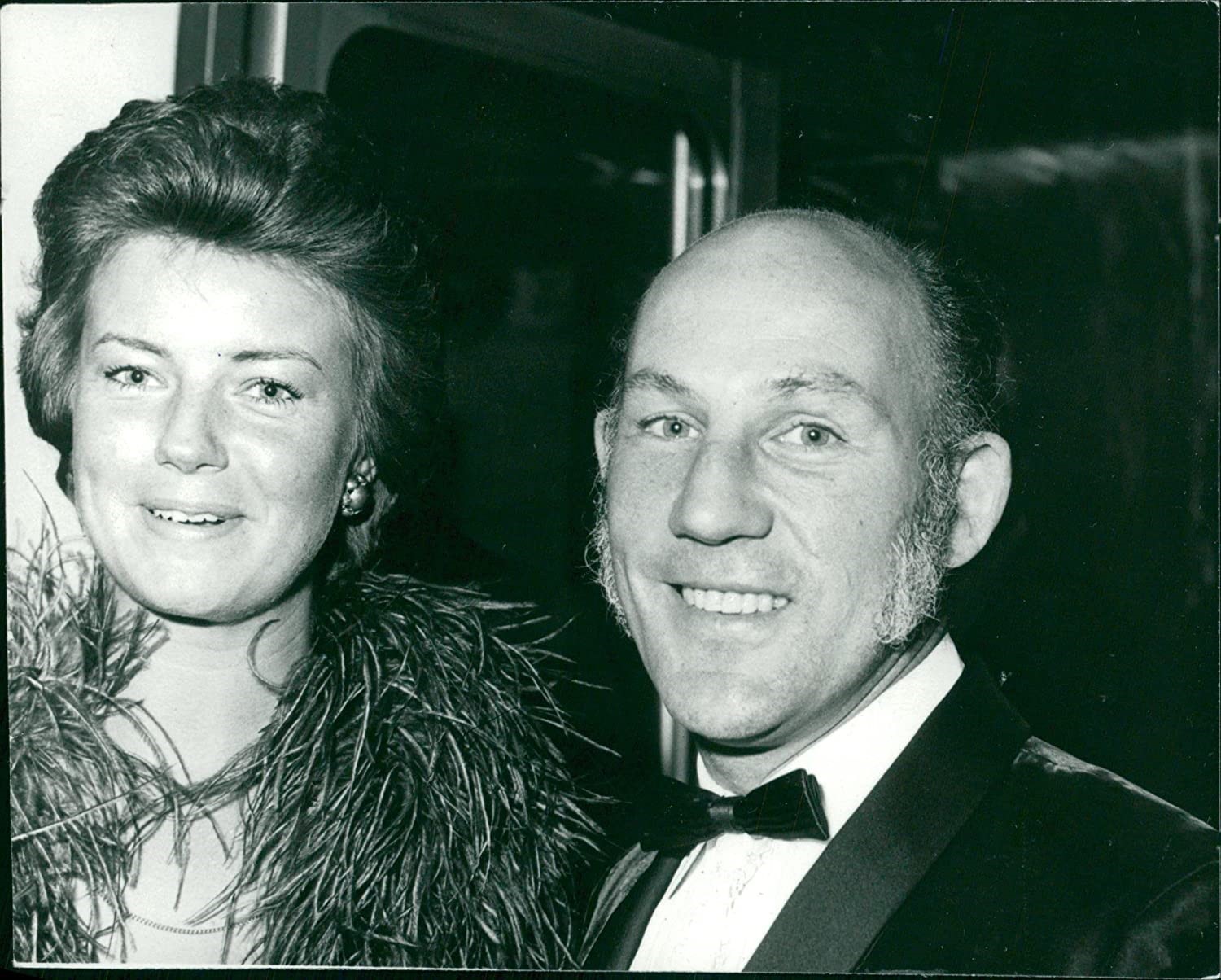
“It’s hard to drive at the limit, but it’s harder to know where the limits are.” Stirling Moss
“Prost is the most complete driver. You could say that Senna is the quickest but this is just one
aspect of driving in F1. Alain has a phenomenal knowledge in terms of developing the car, of
mechanics motivation, of race tactic and psychology. Senna is a race animal but Prost is The
Driver.” Stirling Moss
“Straightaways are just boring stretches of road that link the turns.” Stirling Moss
“There are only two things a man won’t admit he can’t do: driving and making love.”
Stirling Moss
Videos


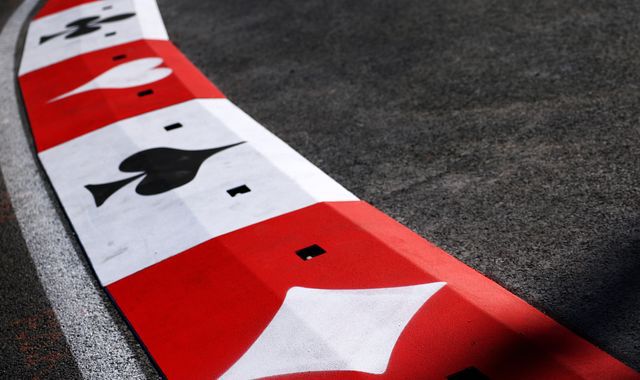
Comments
Authorize to comment